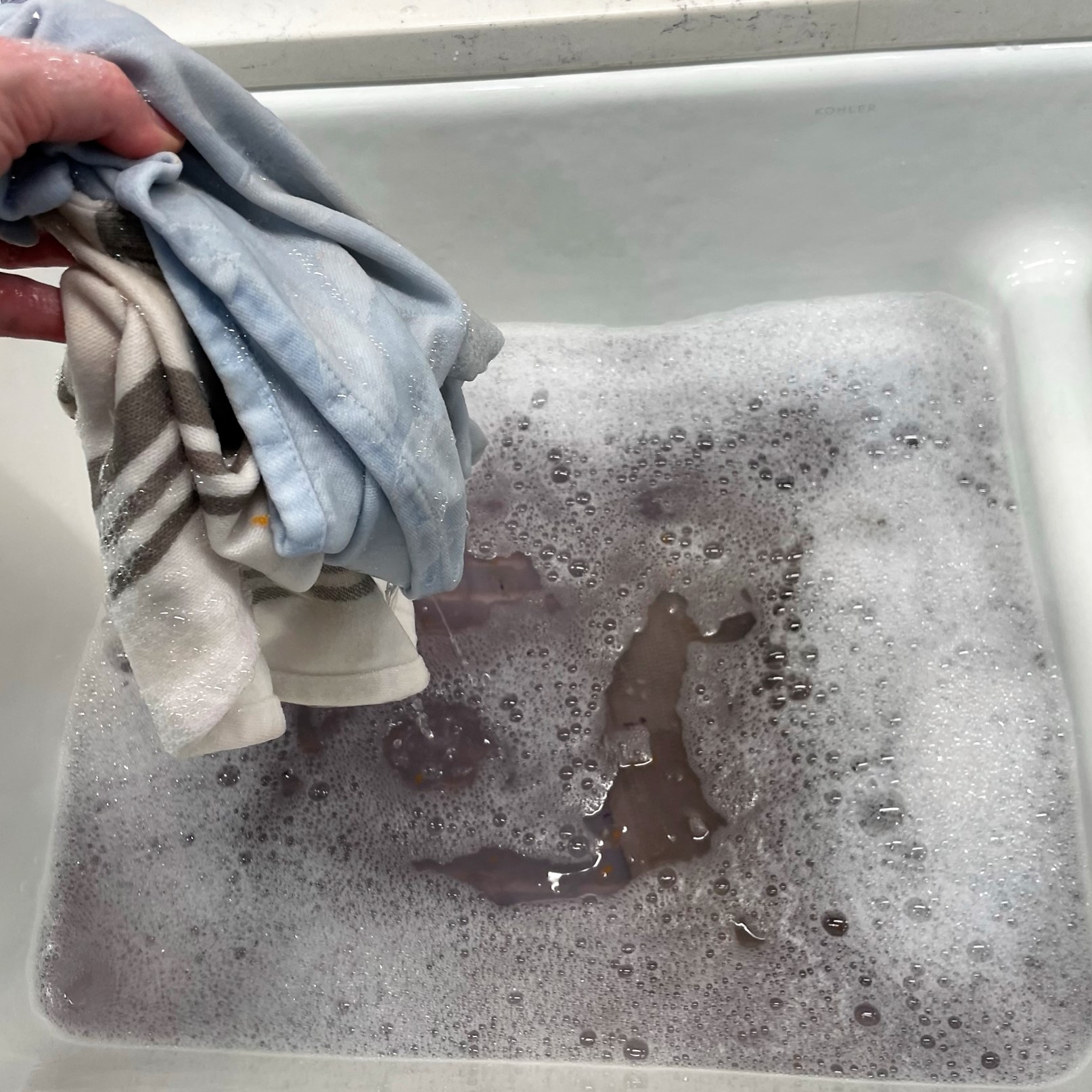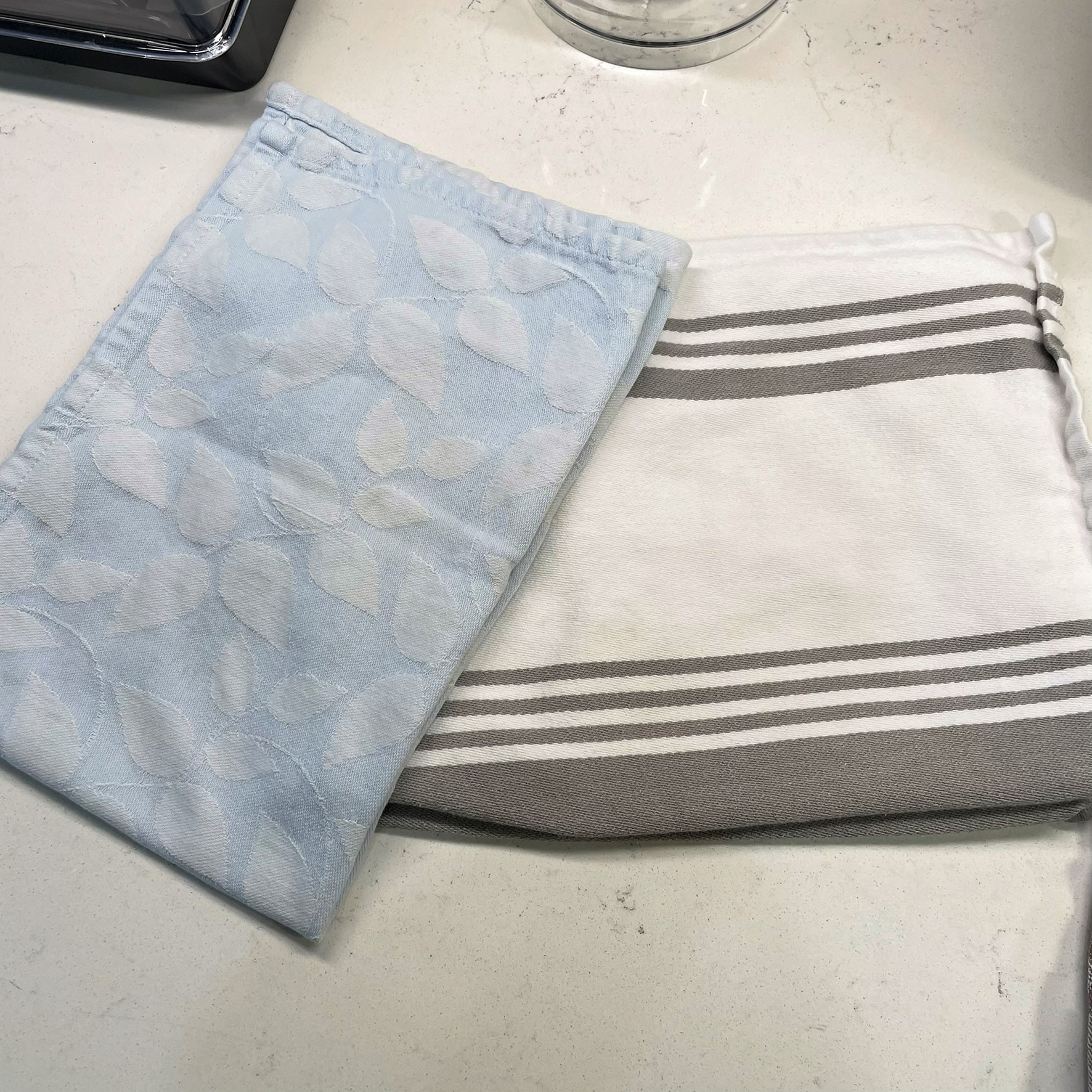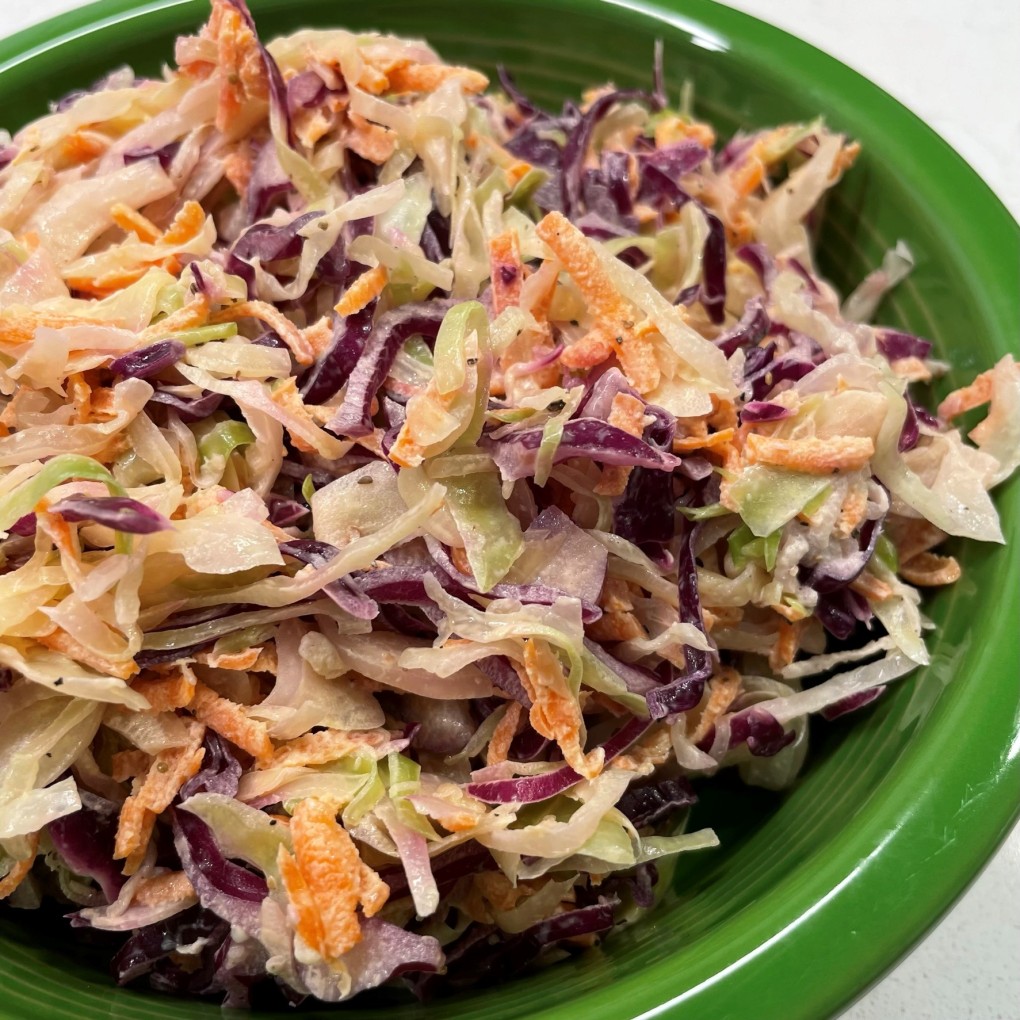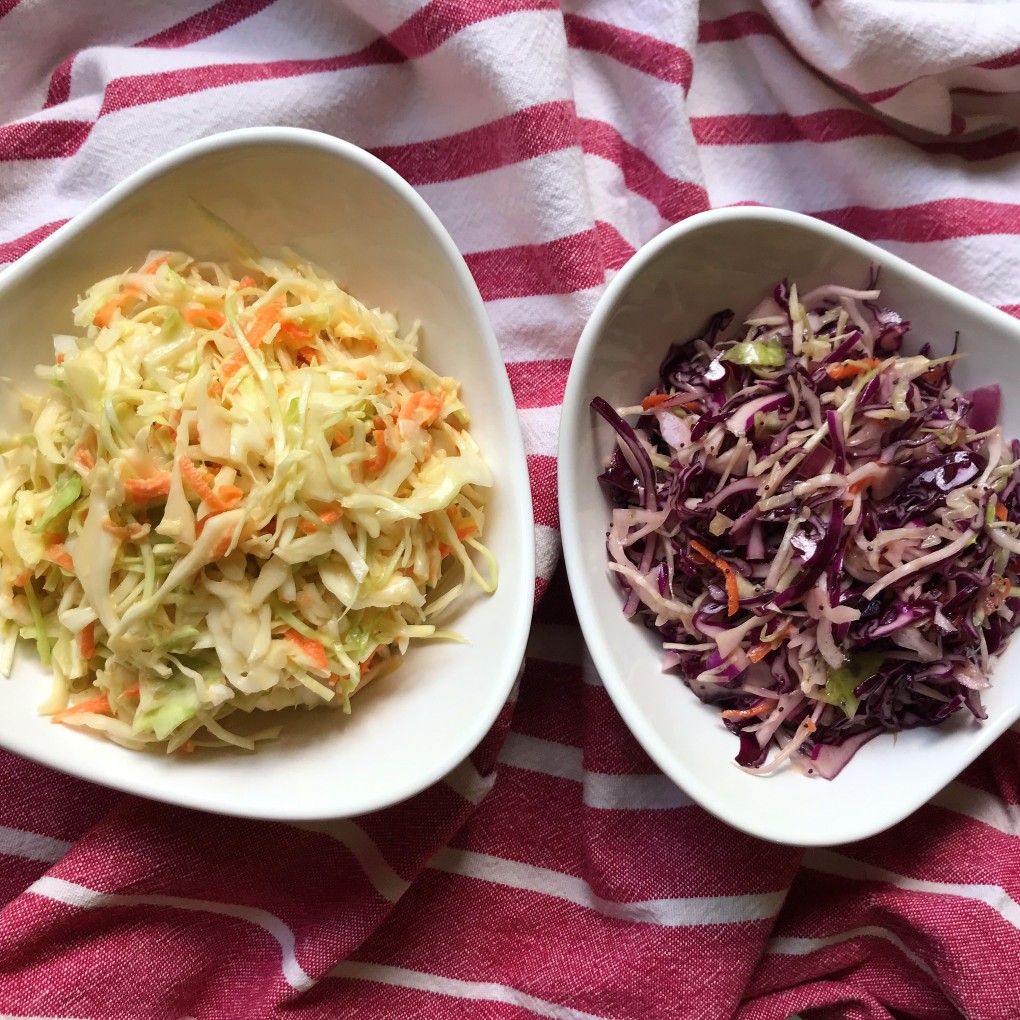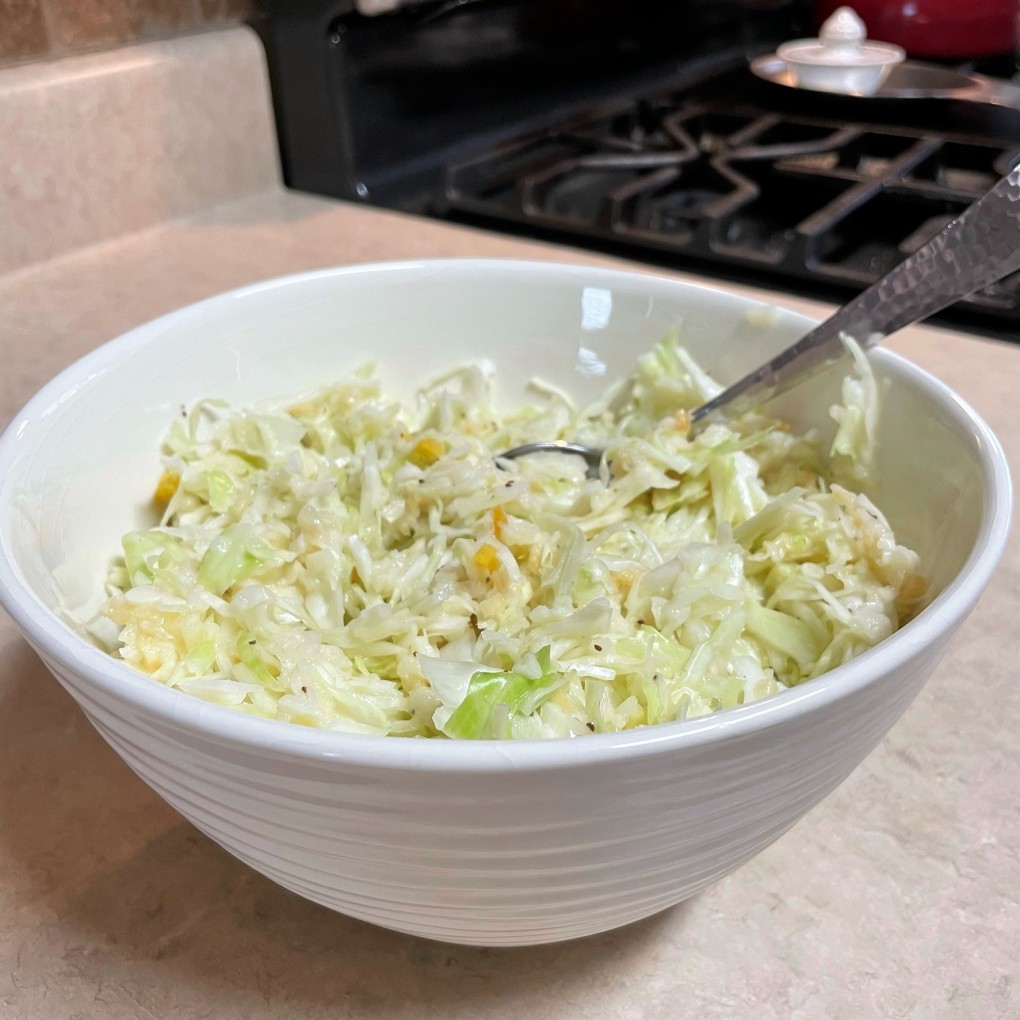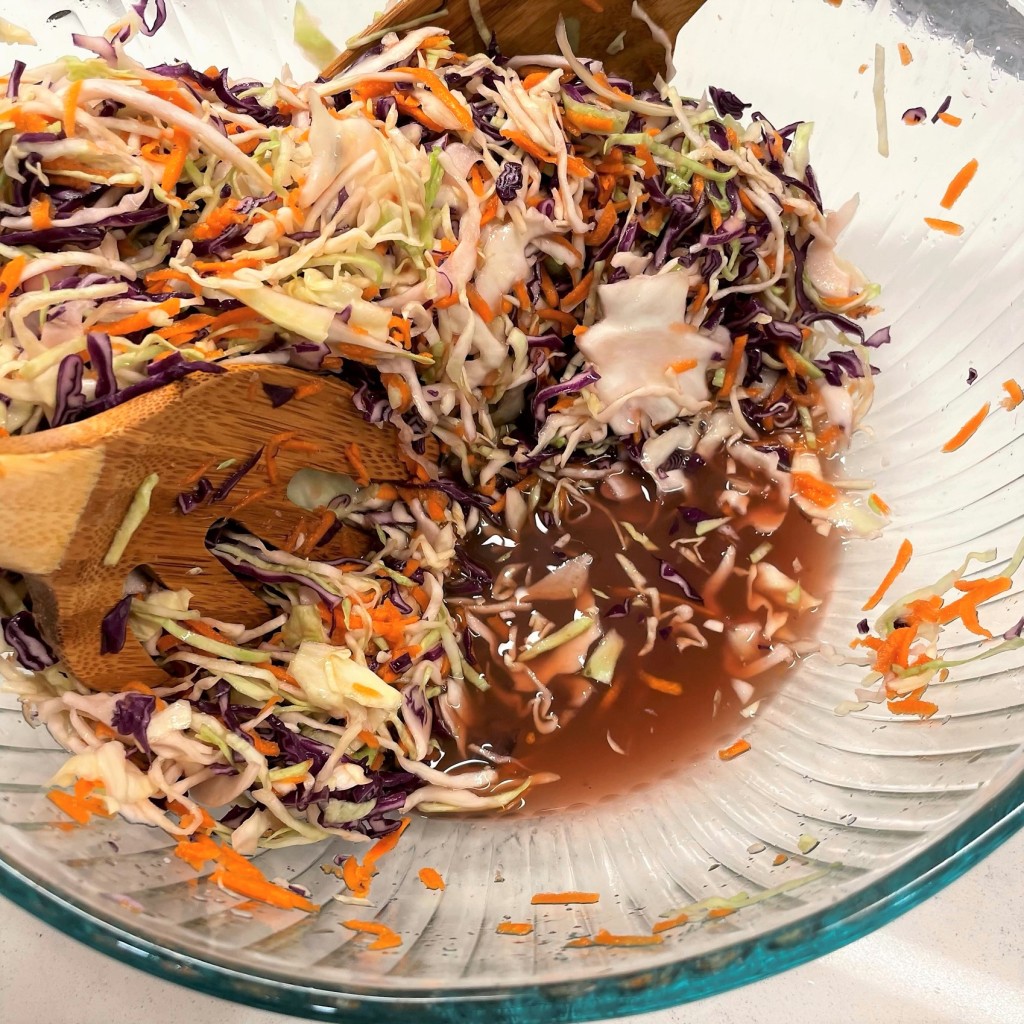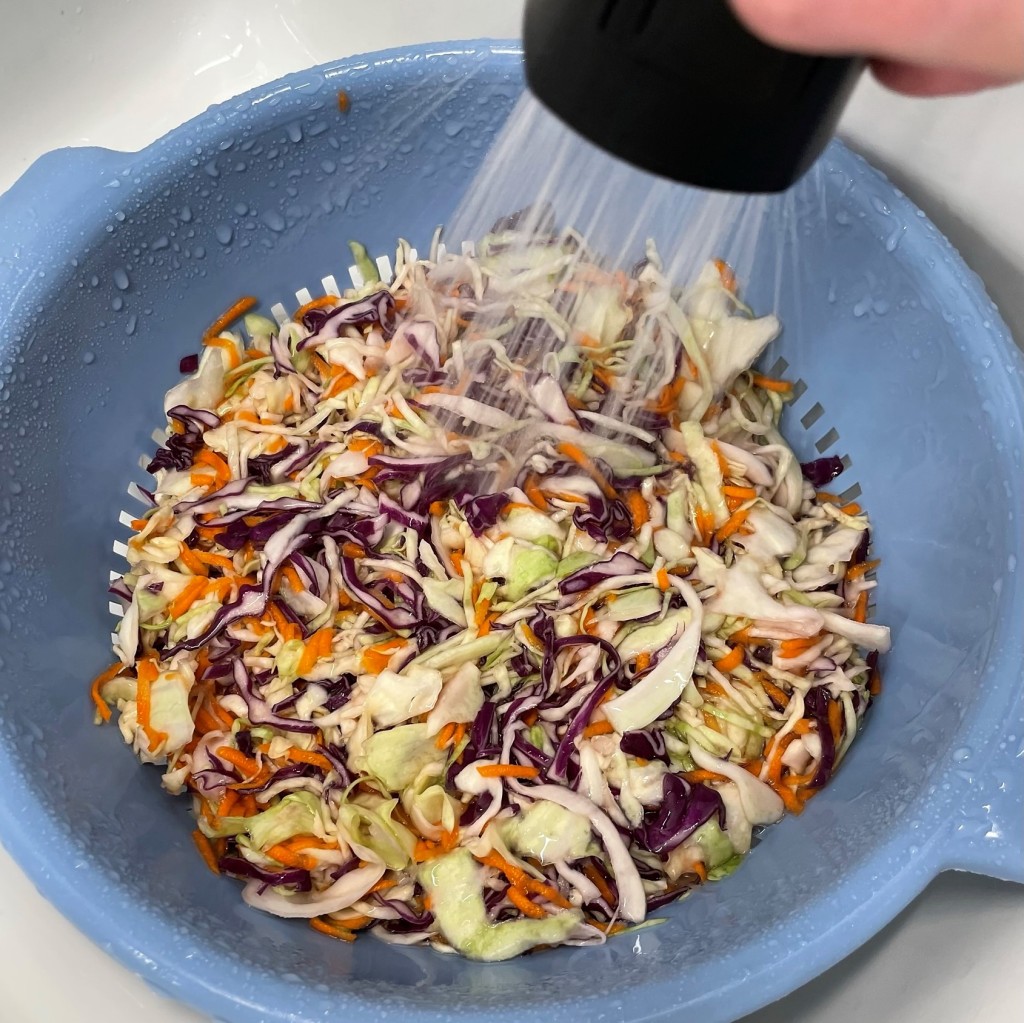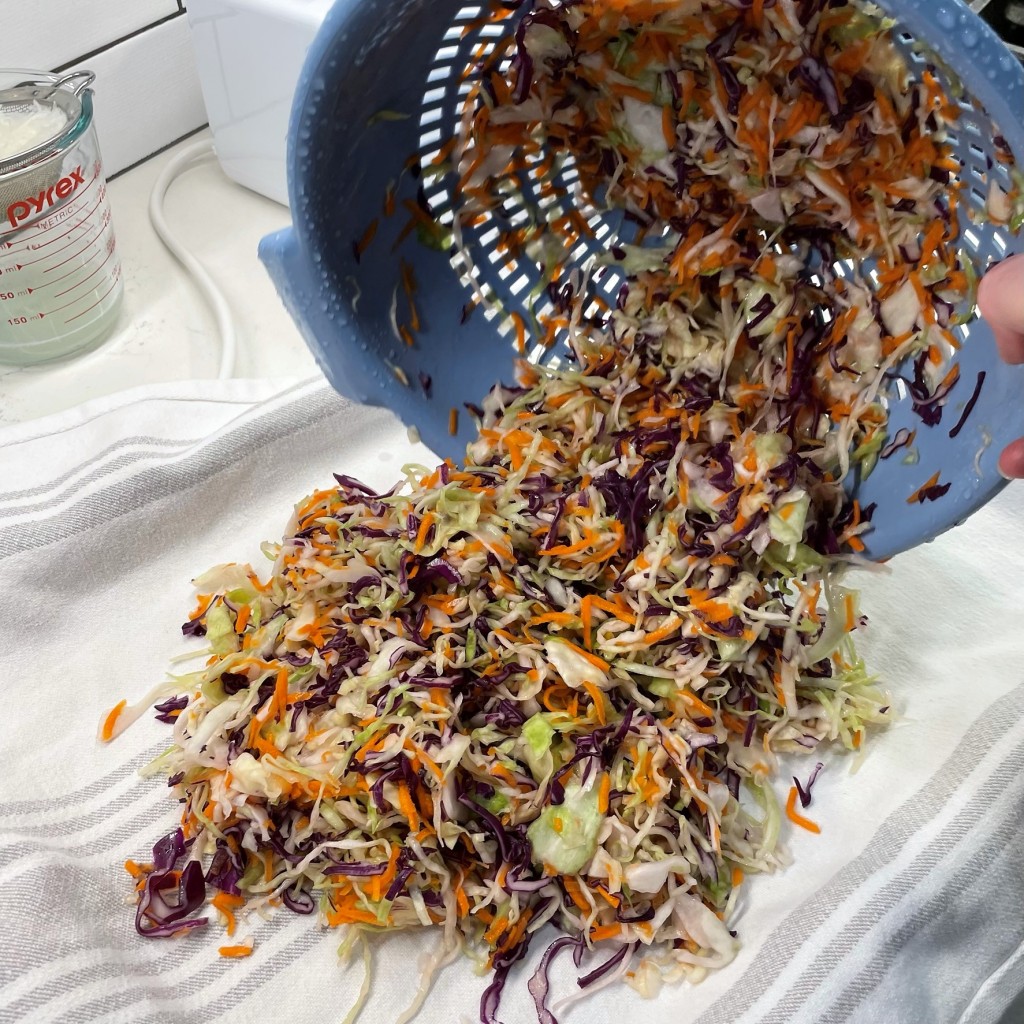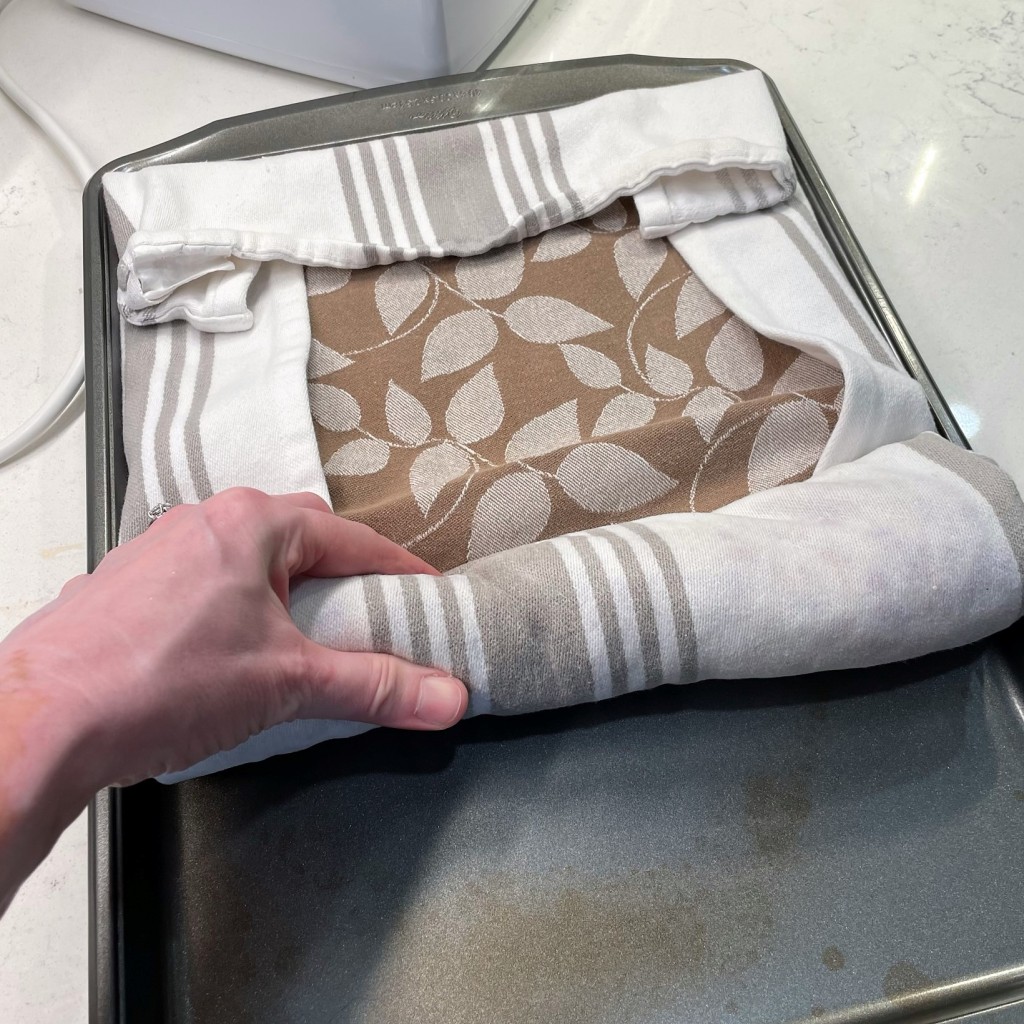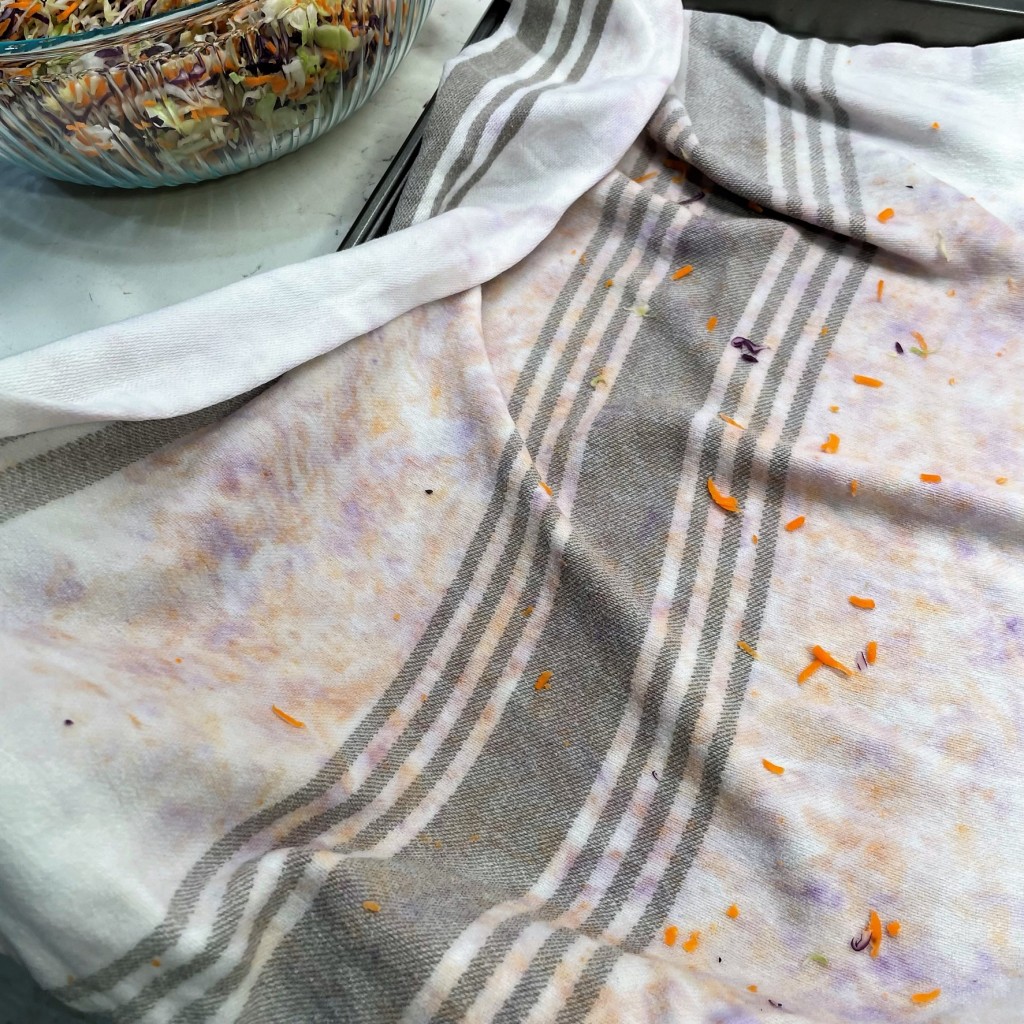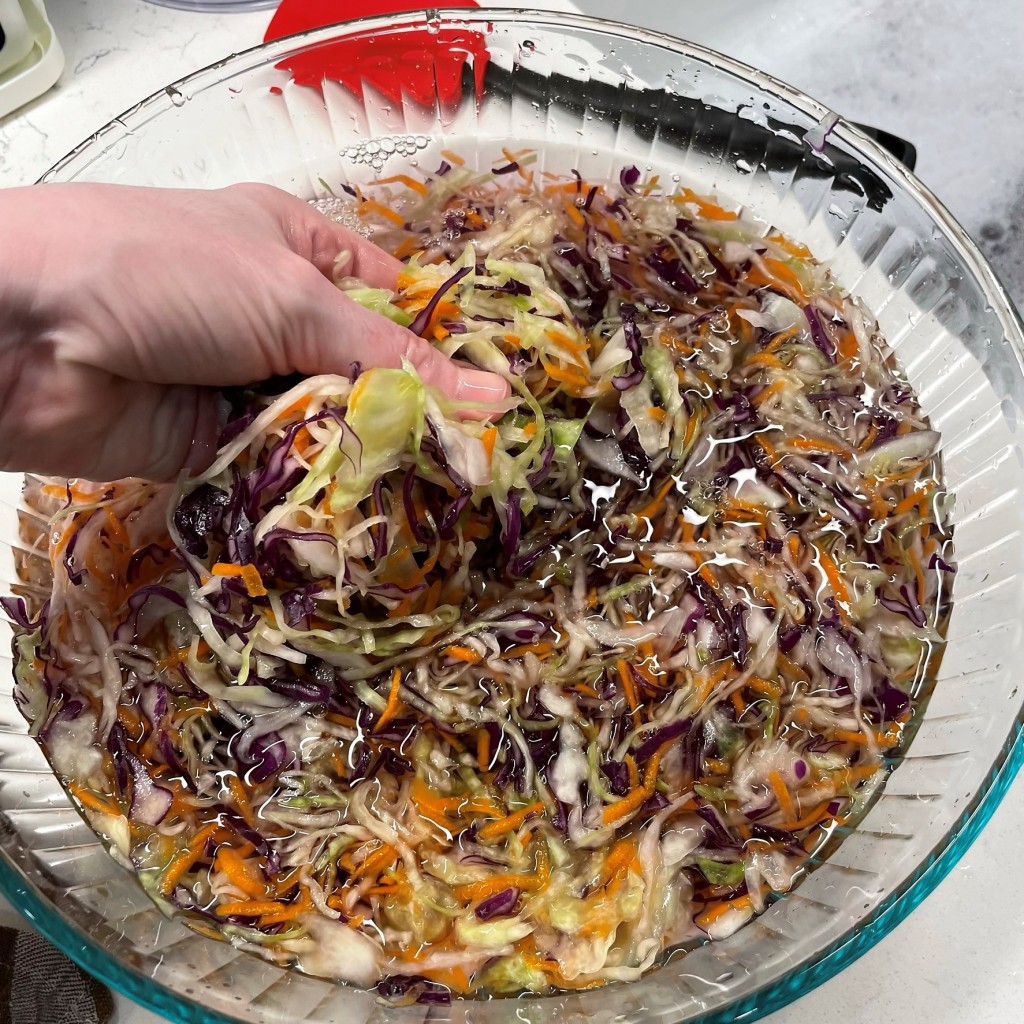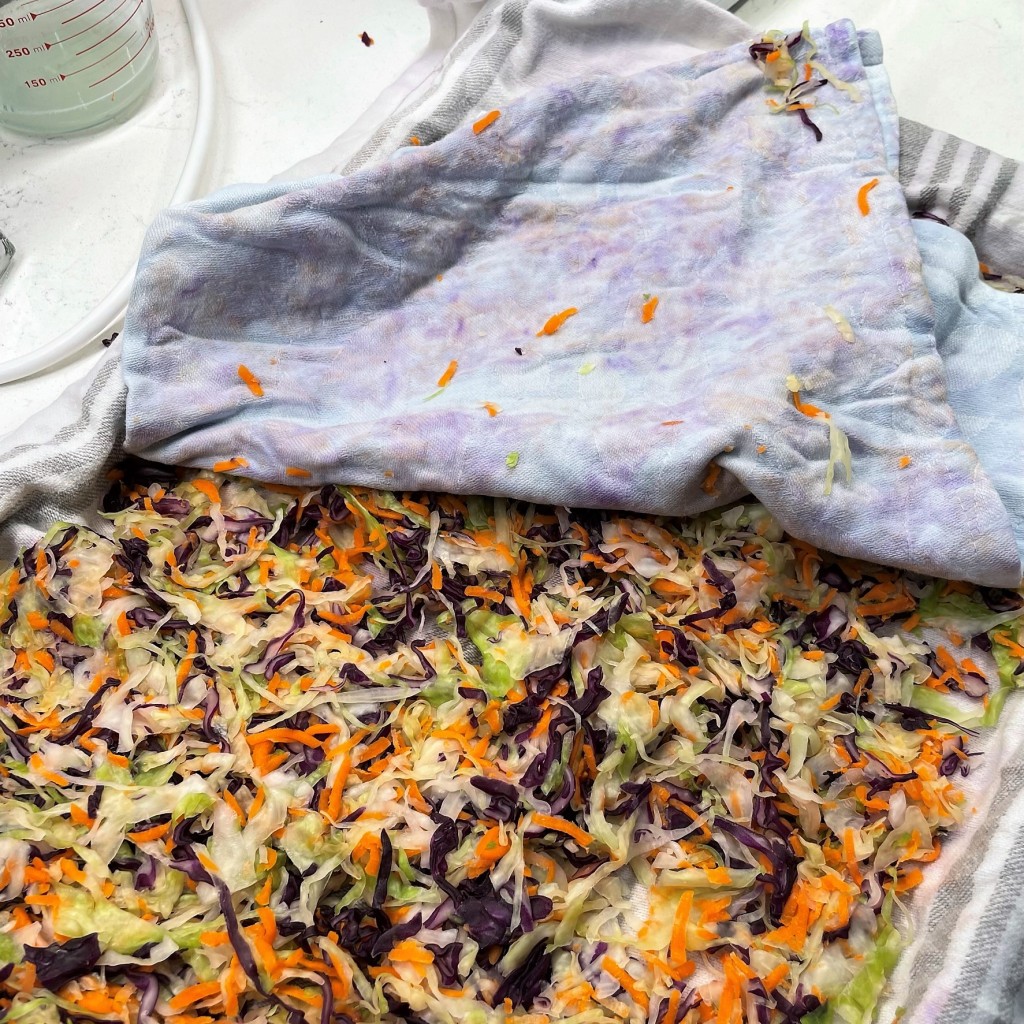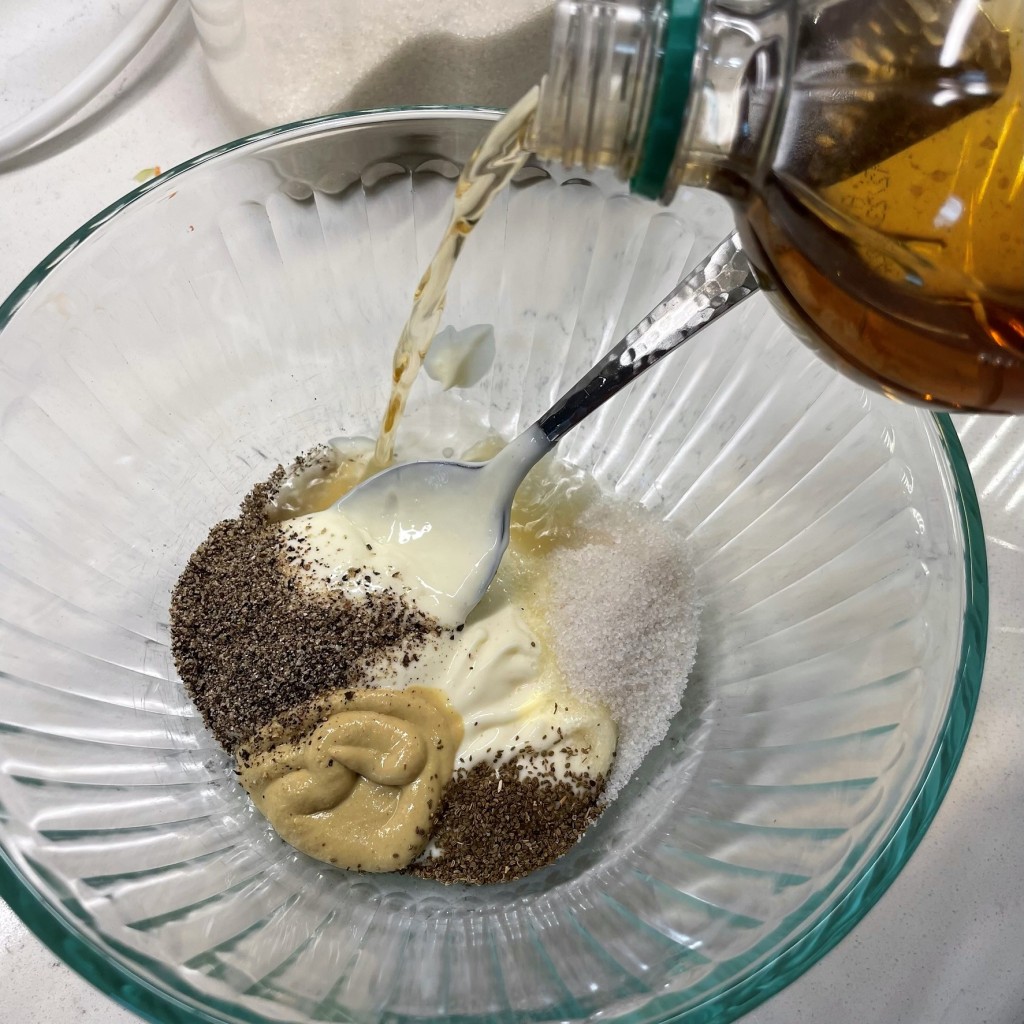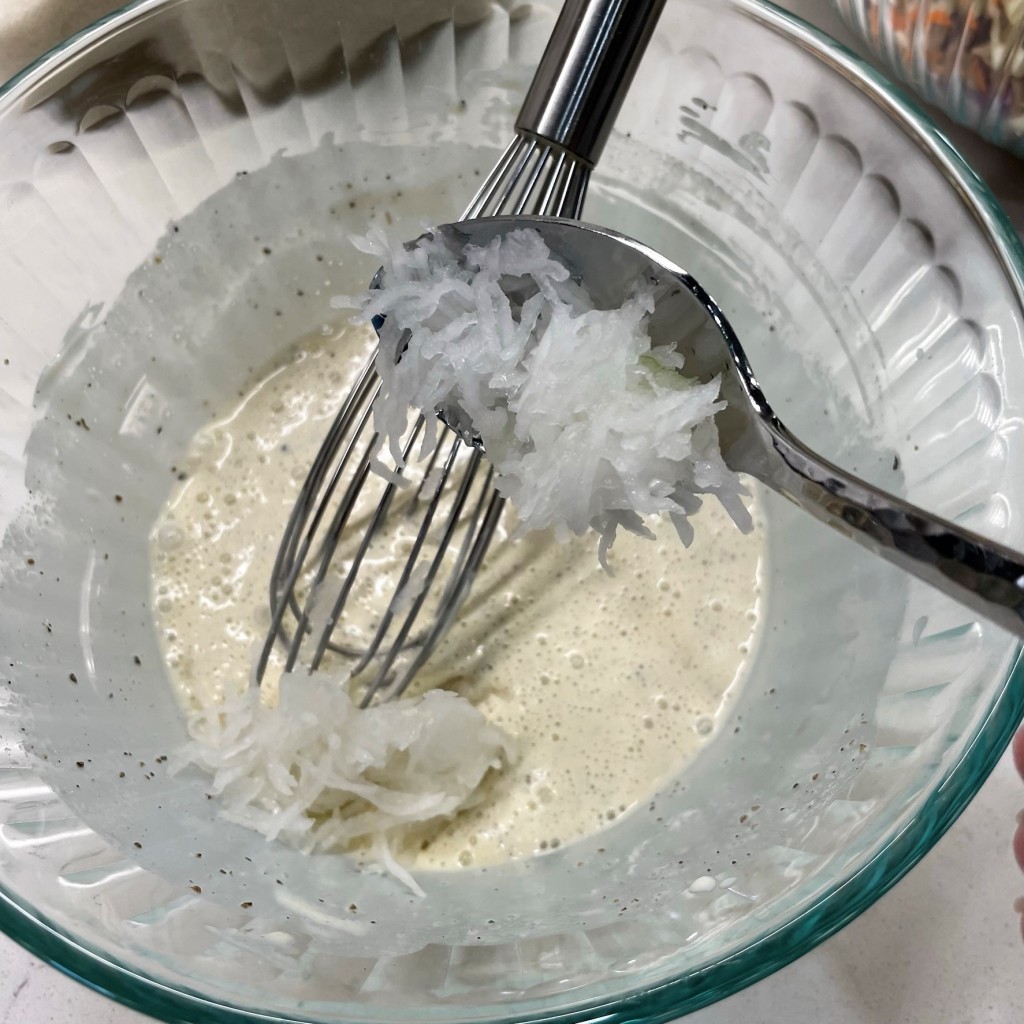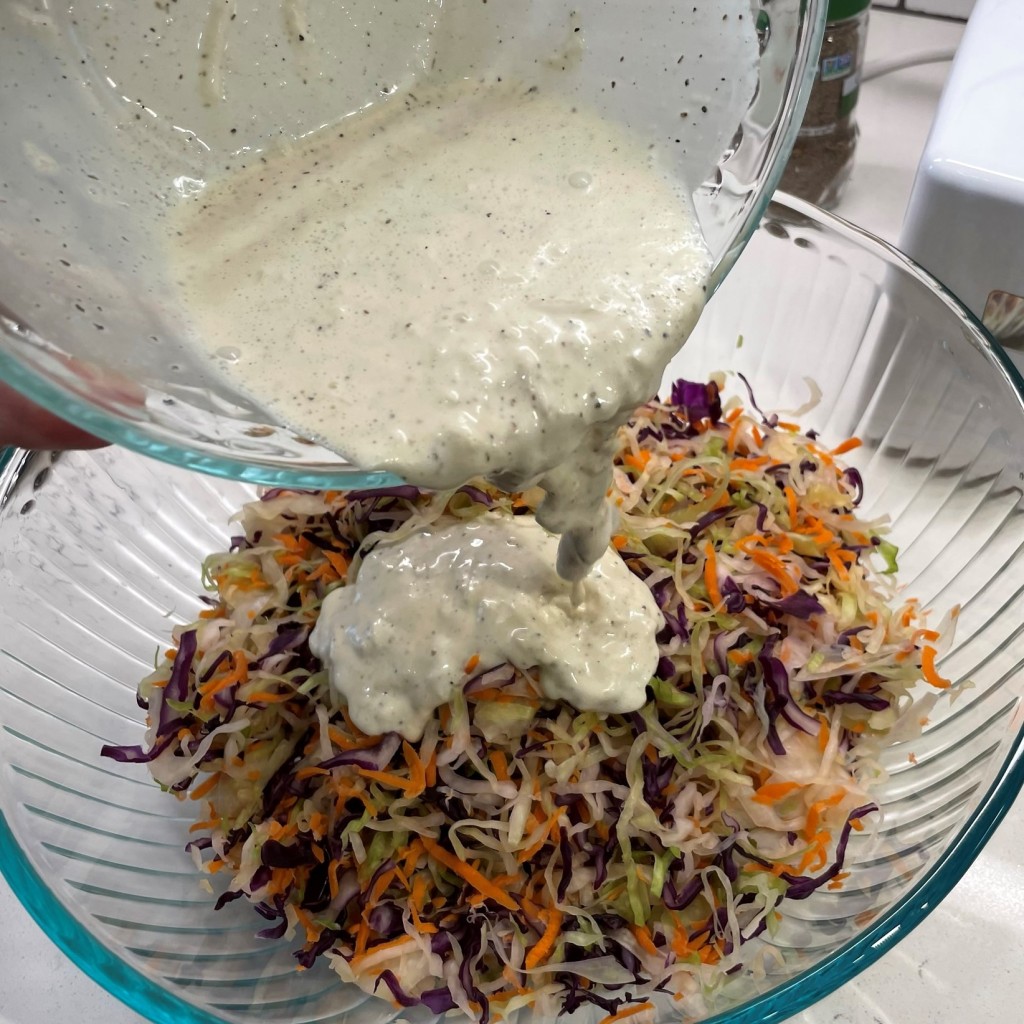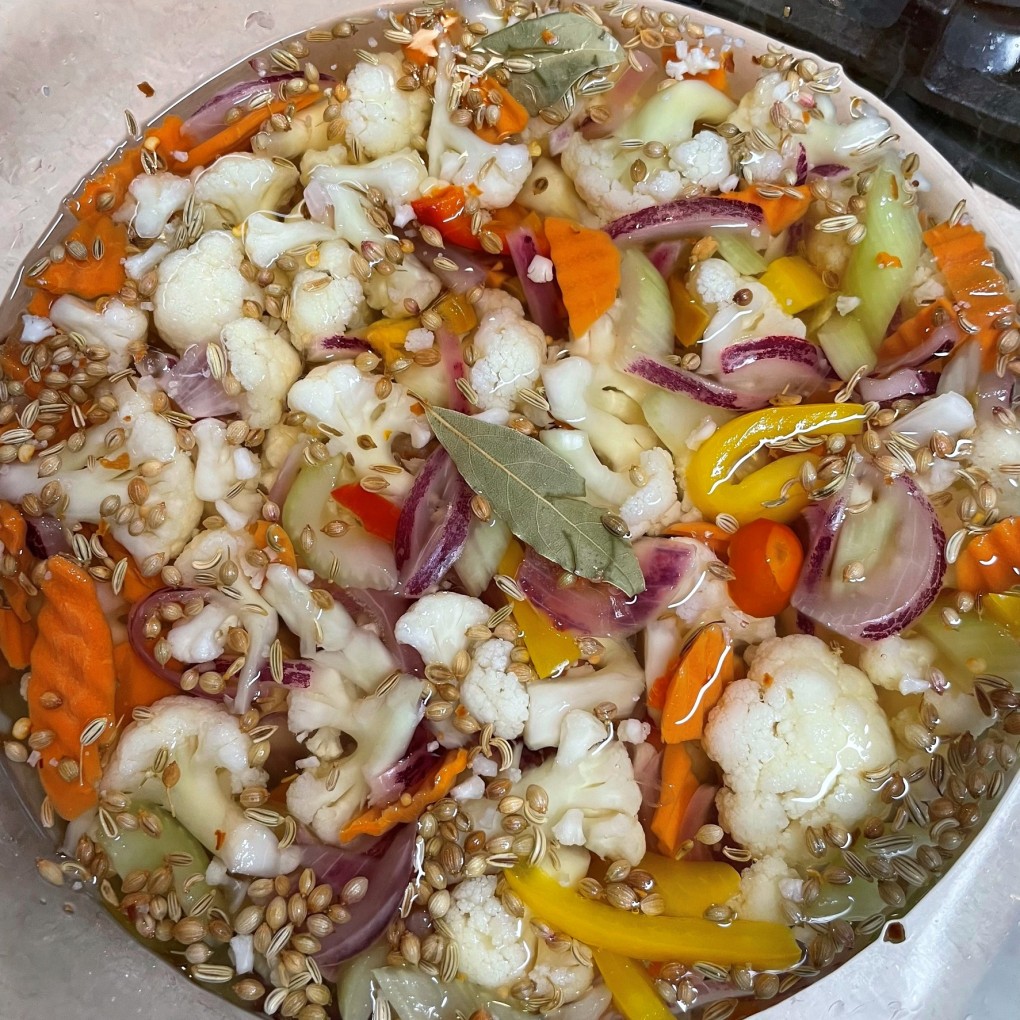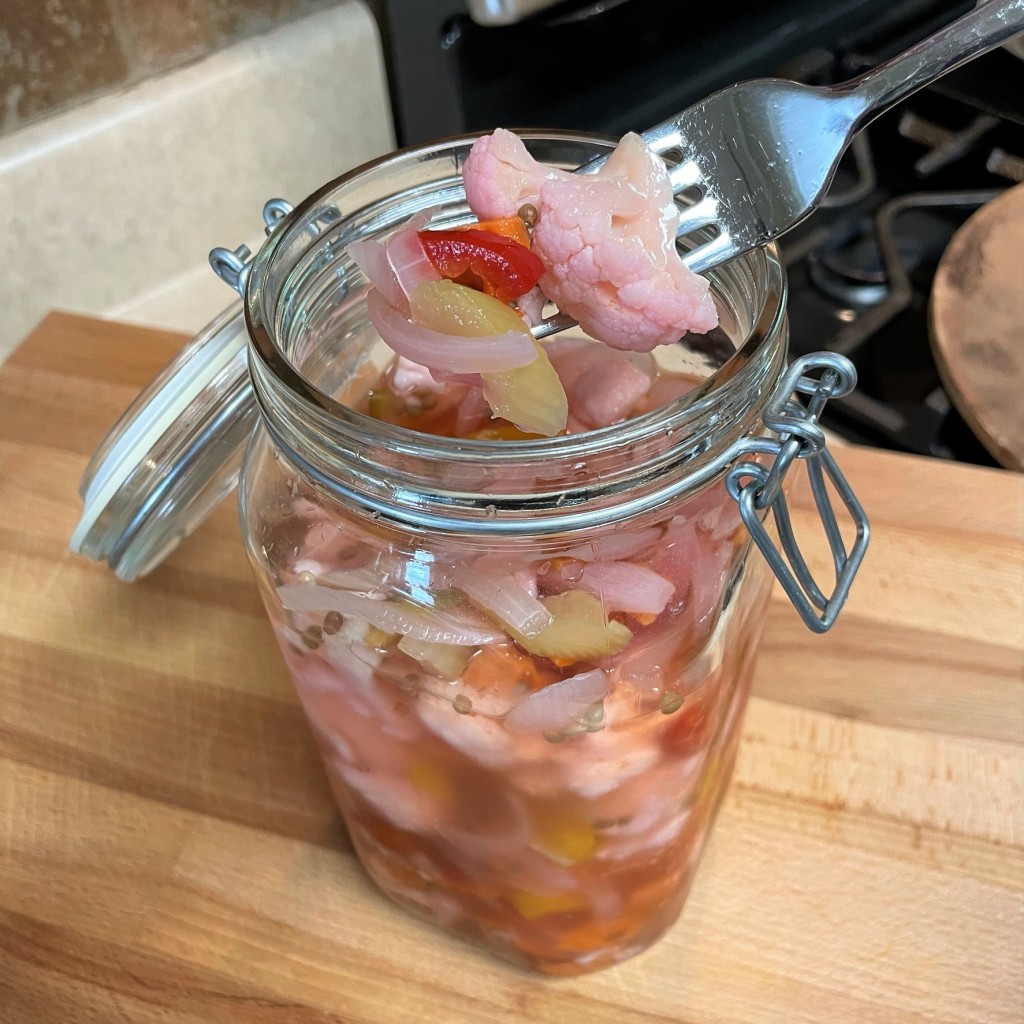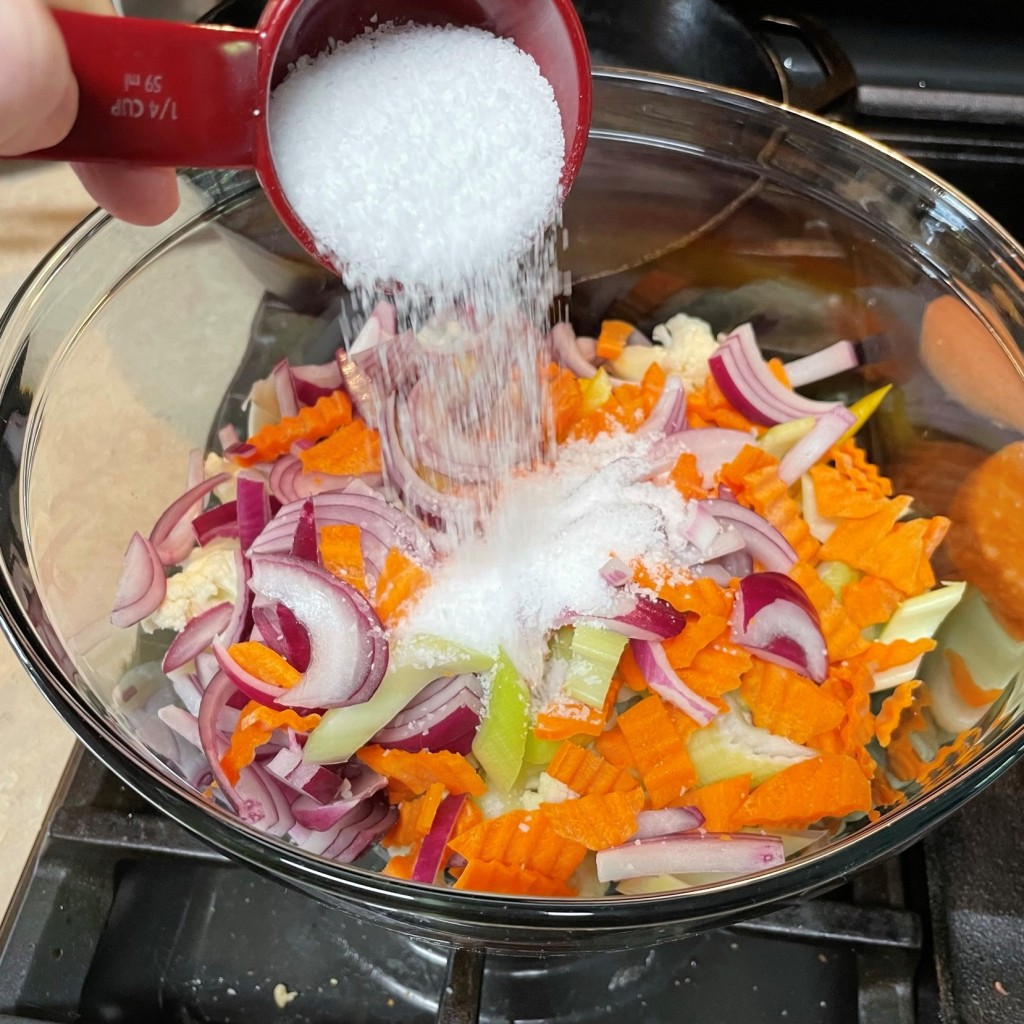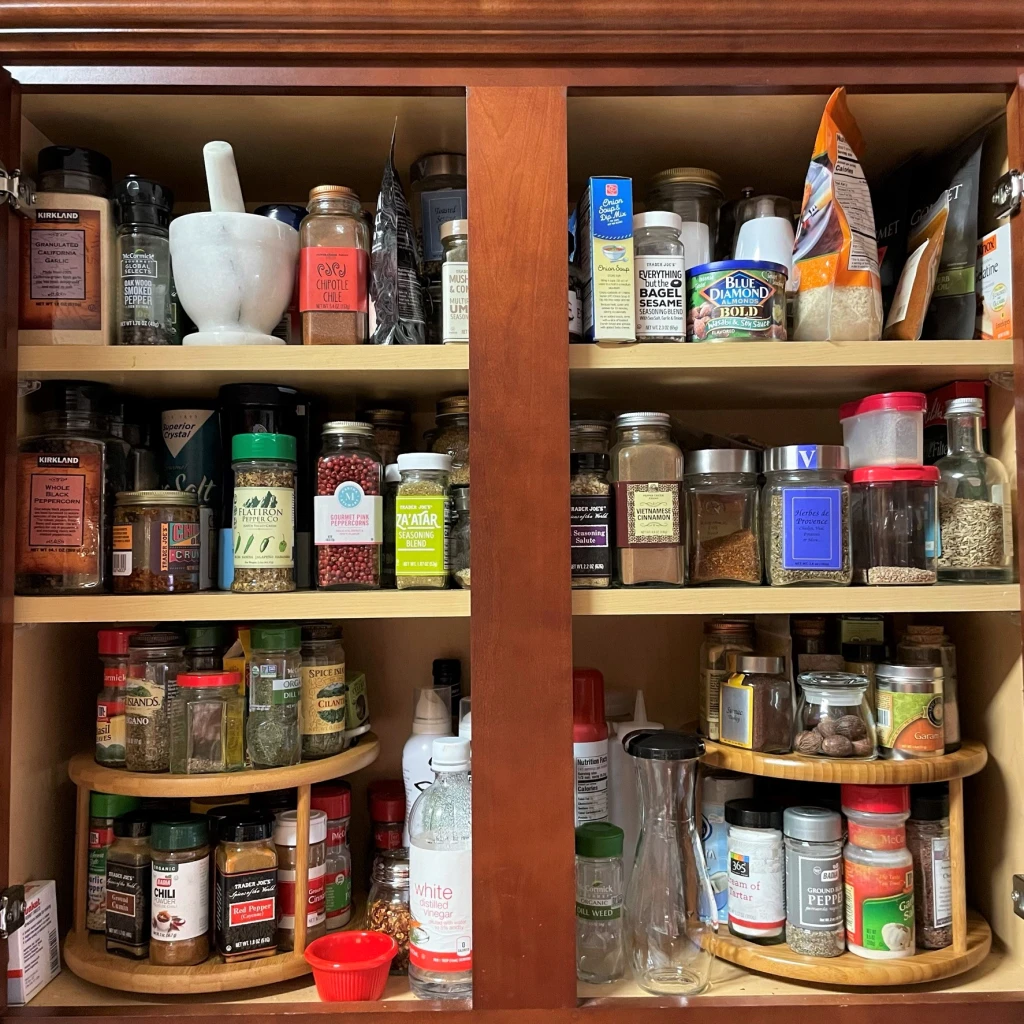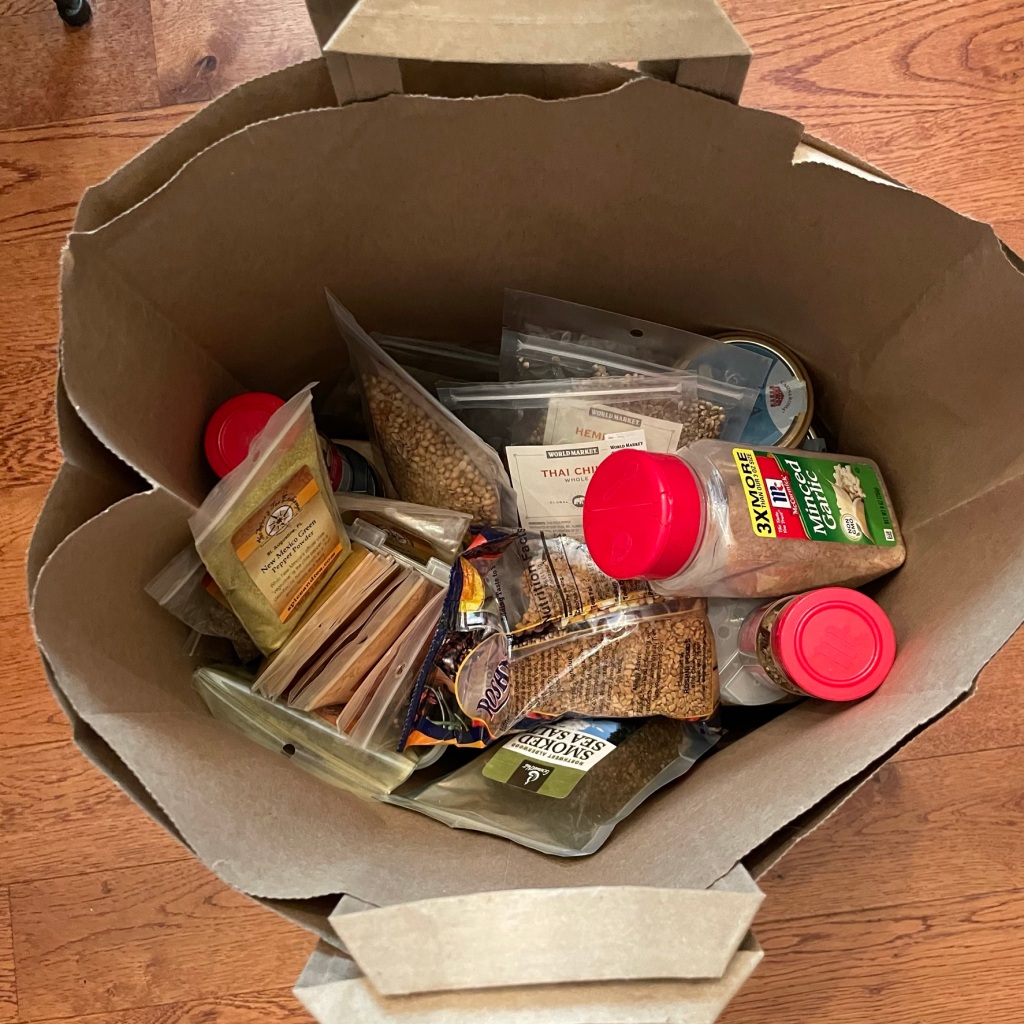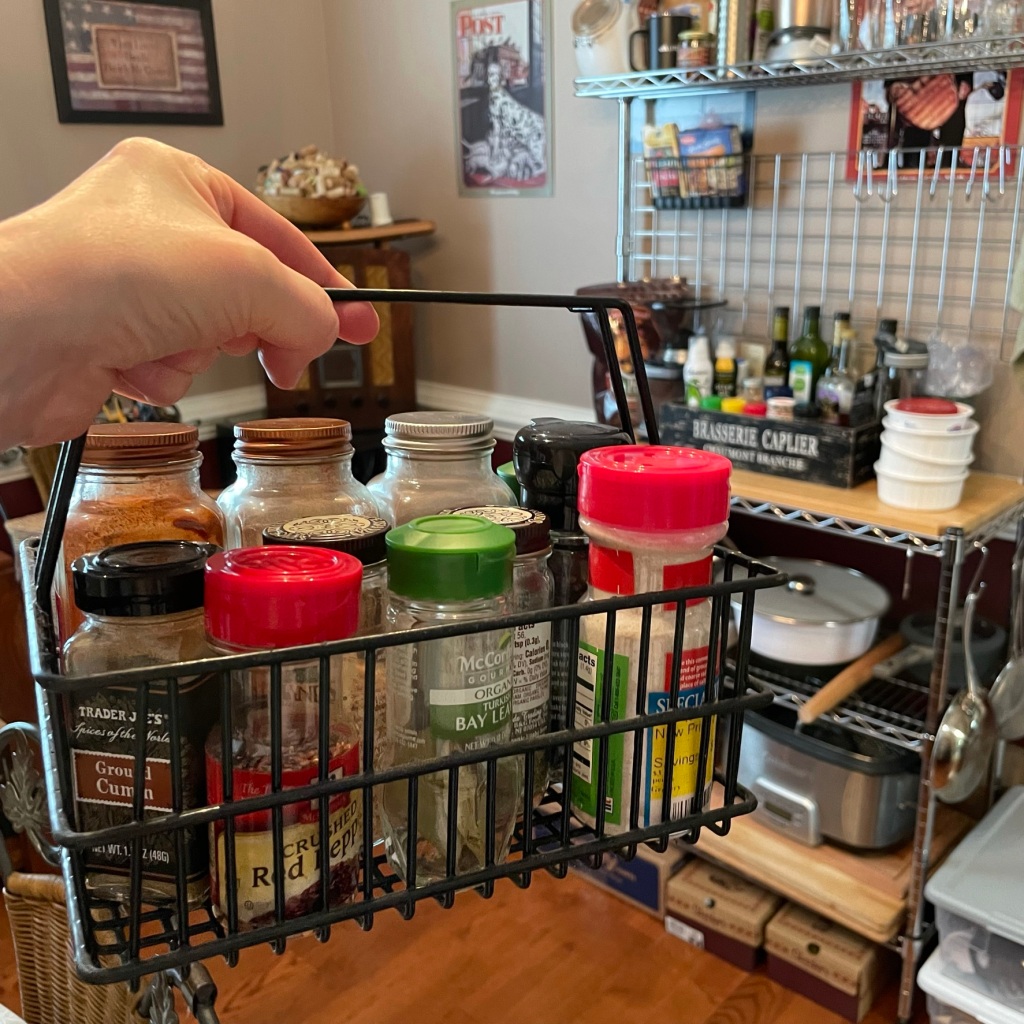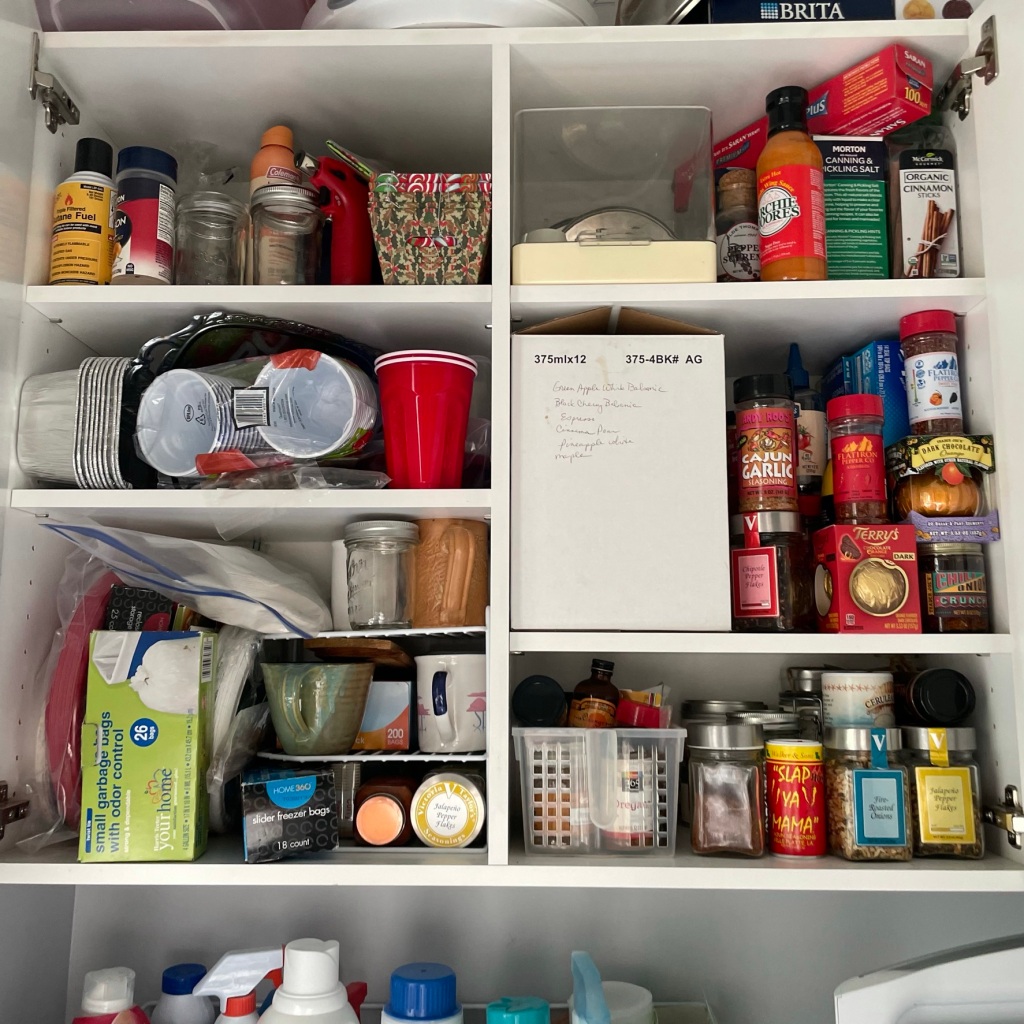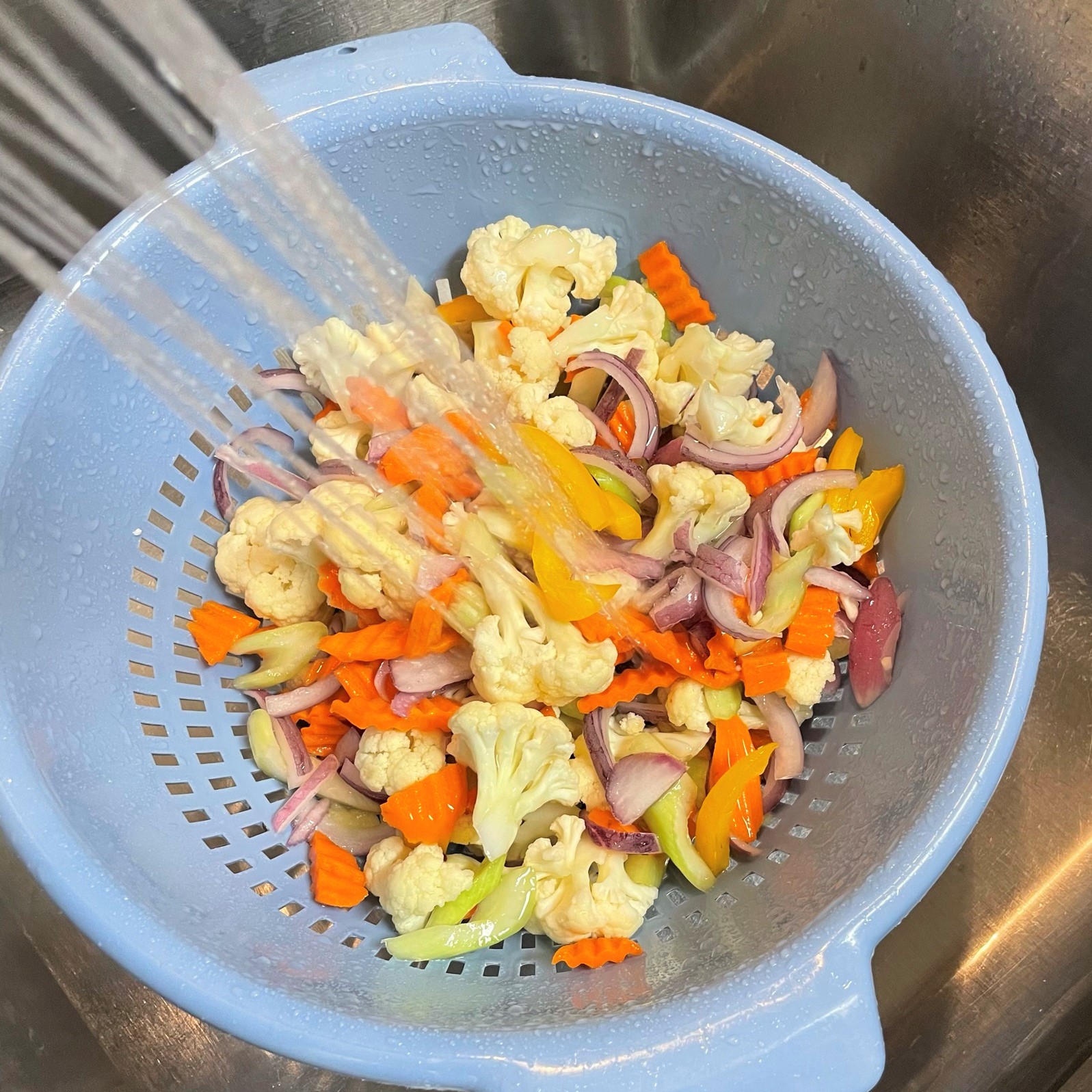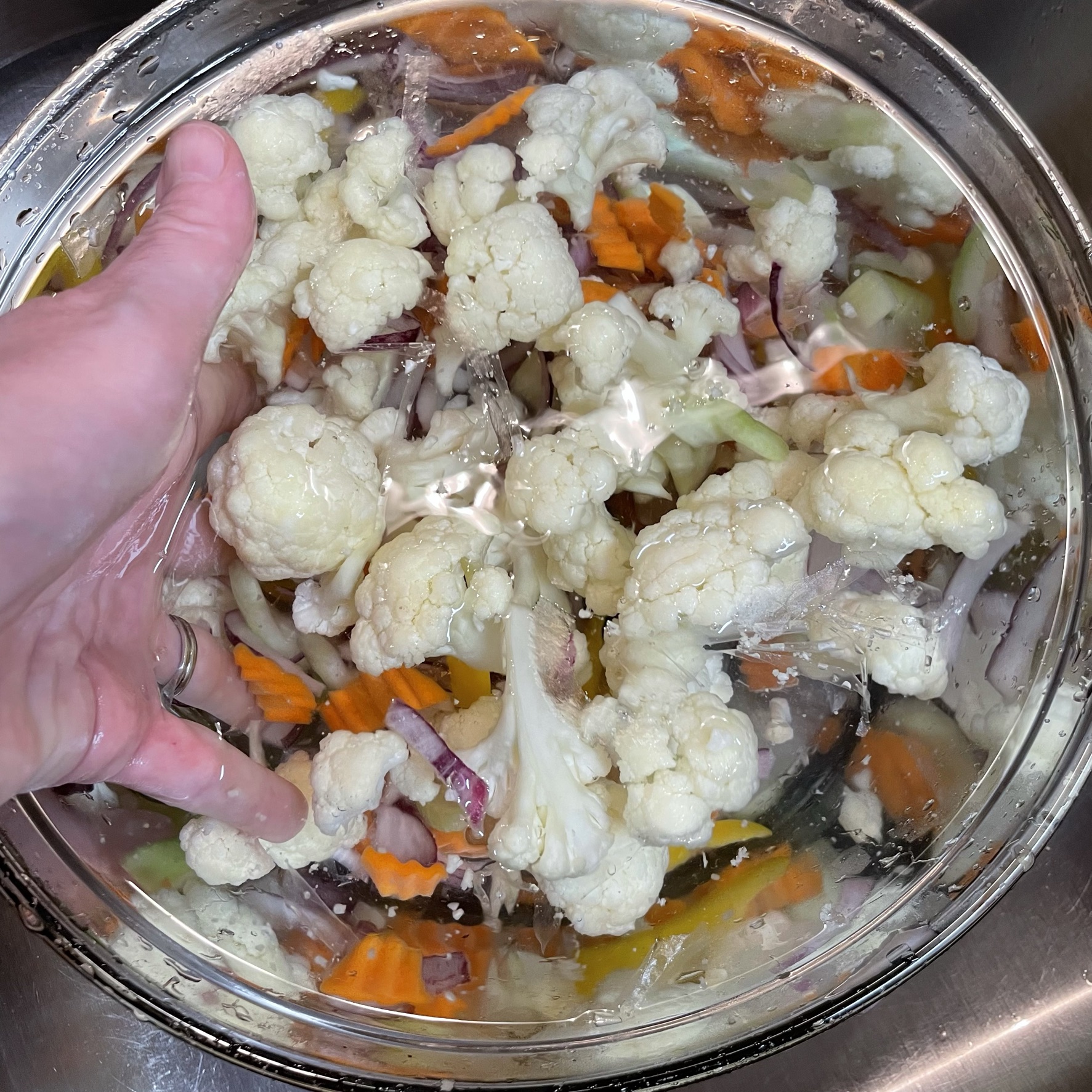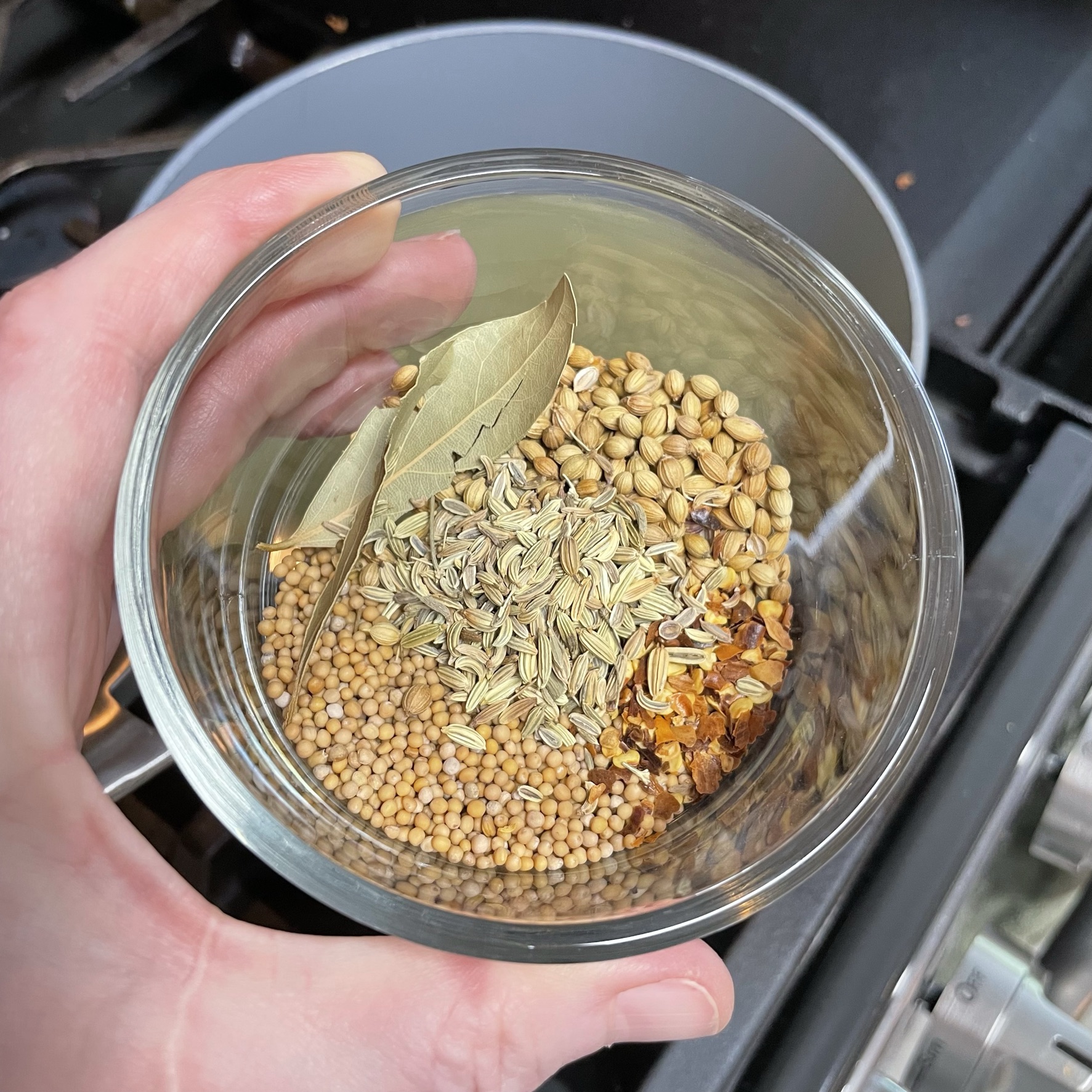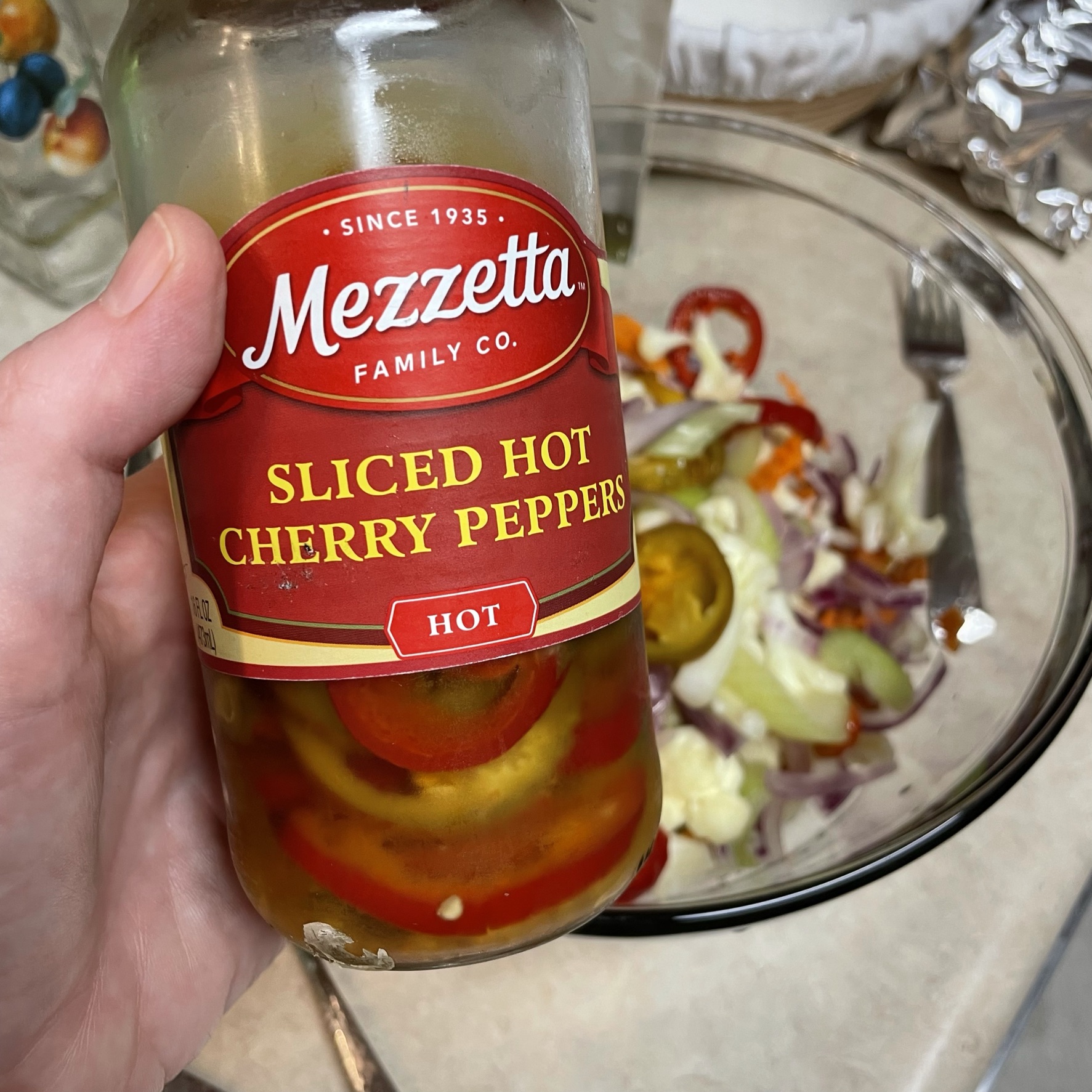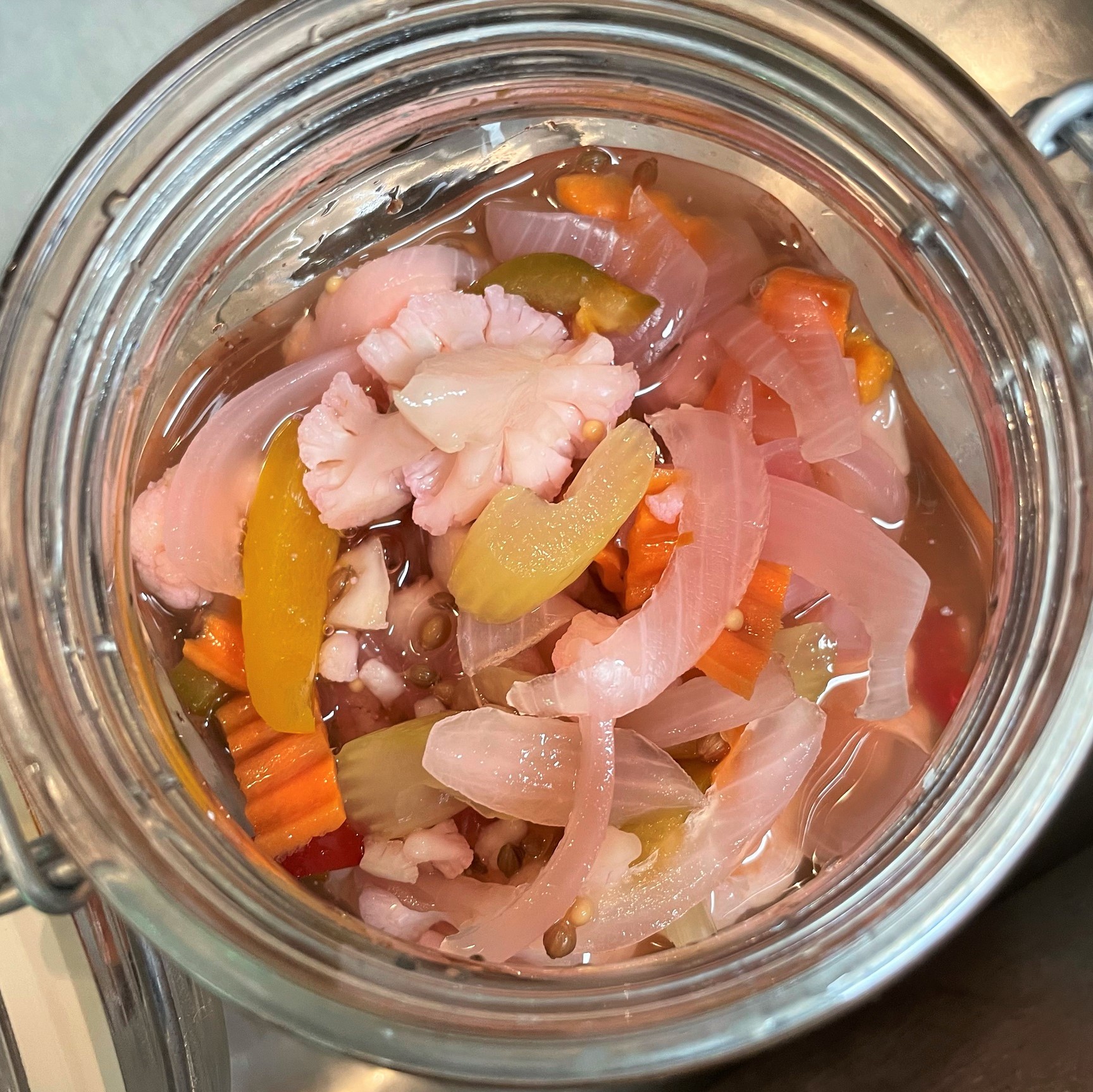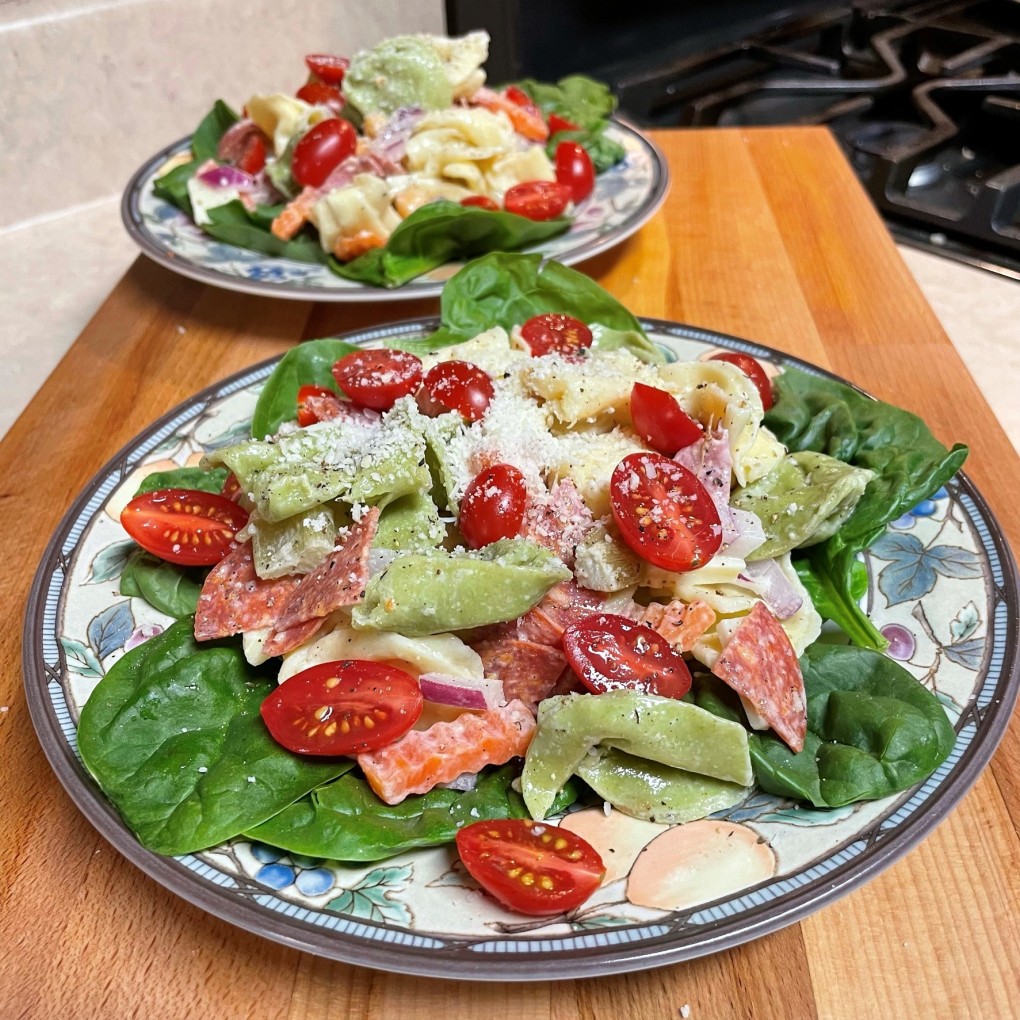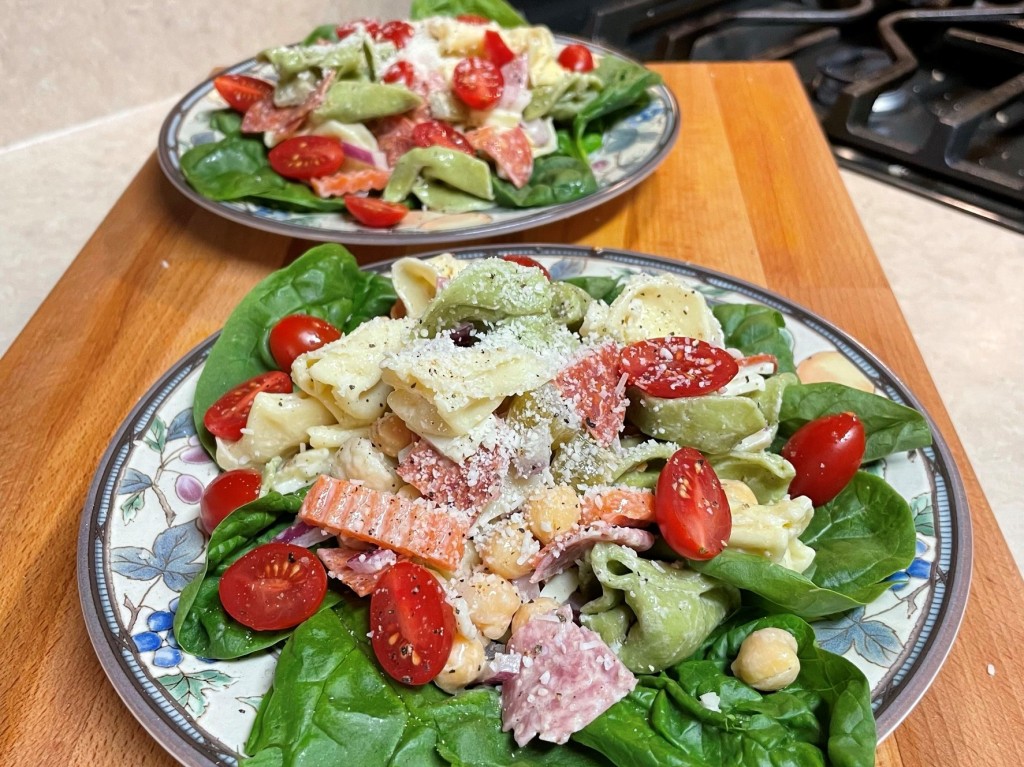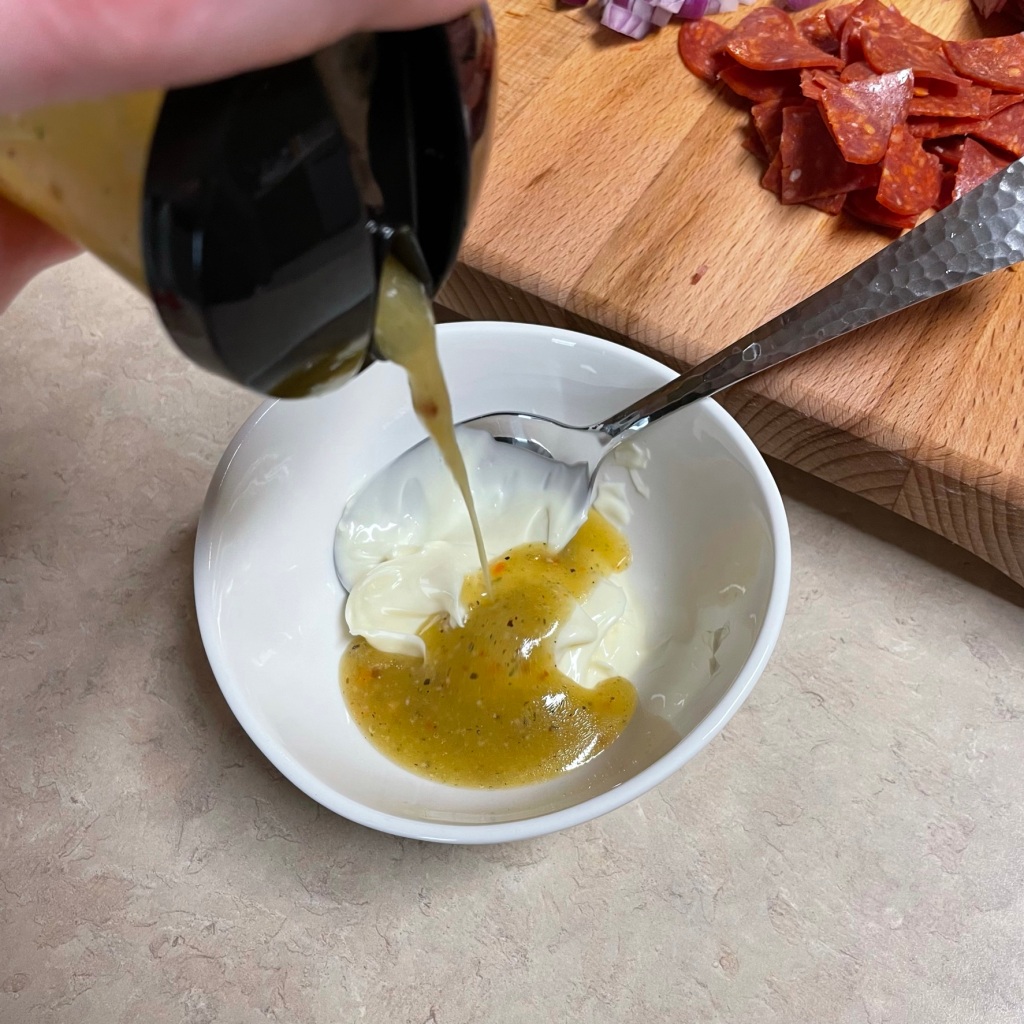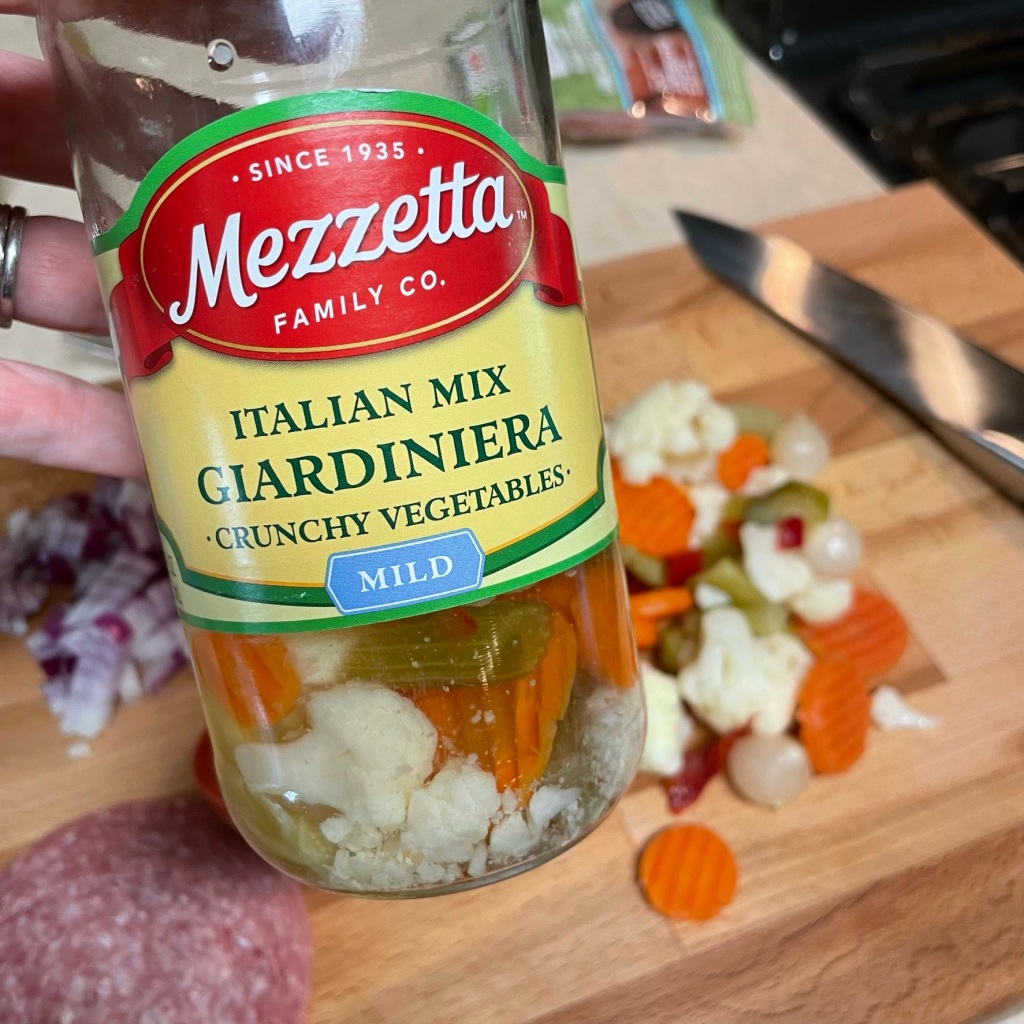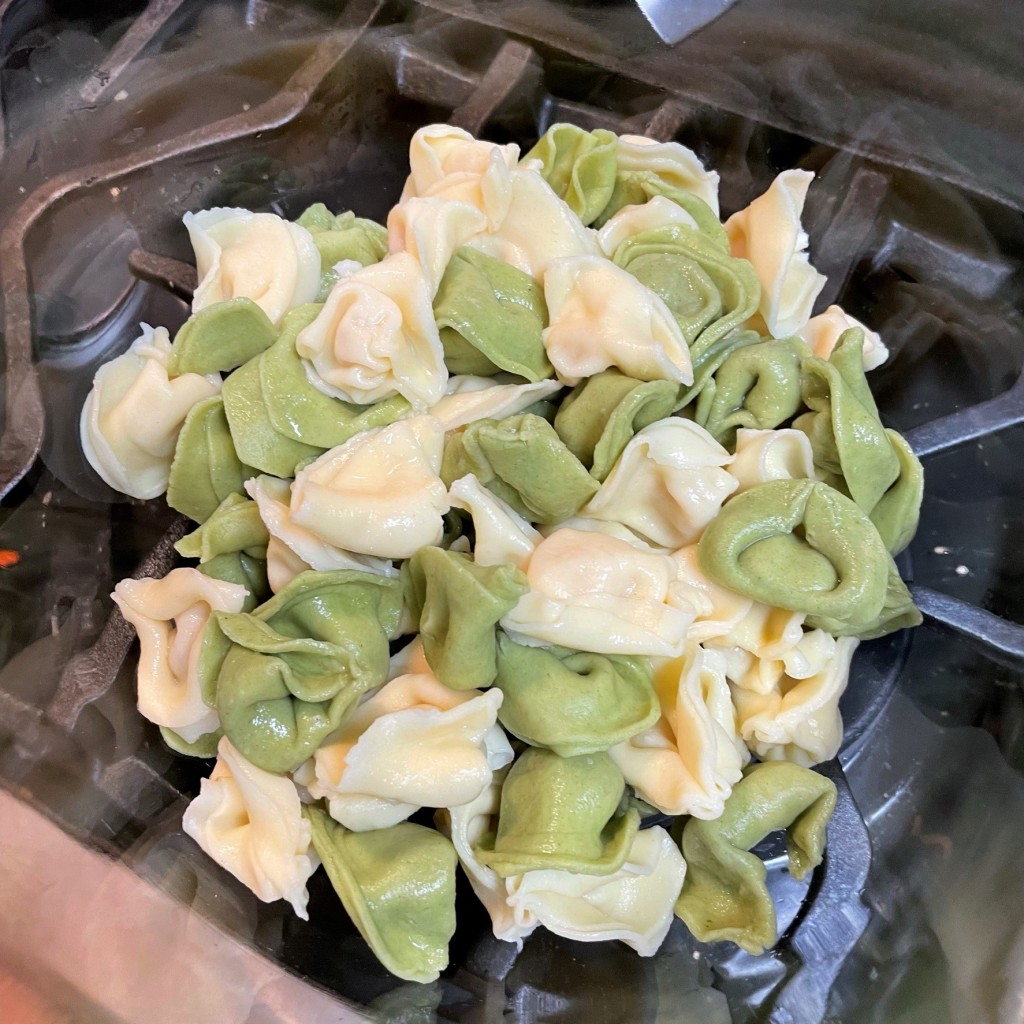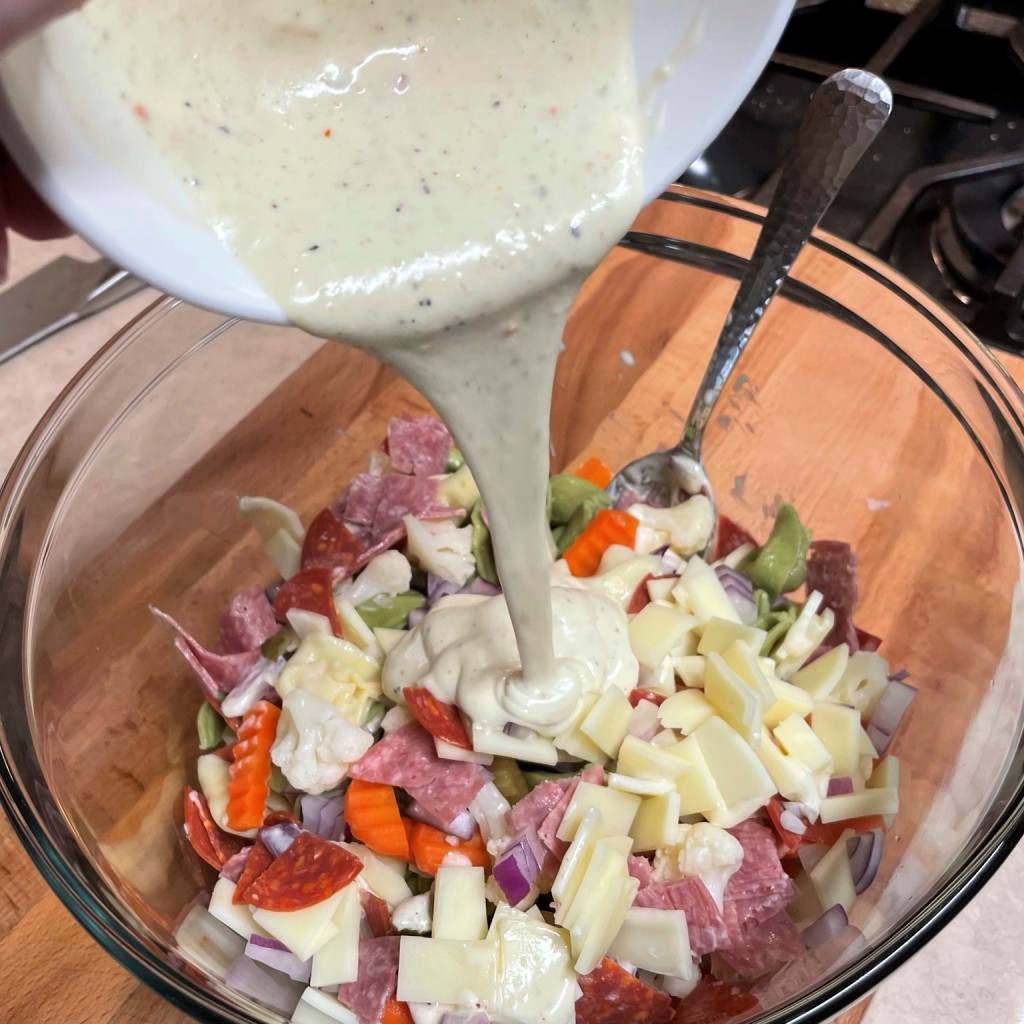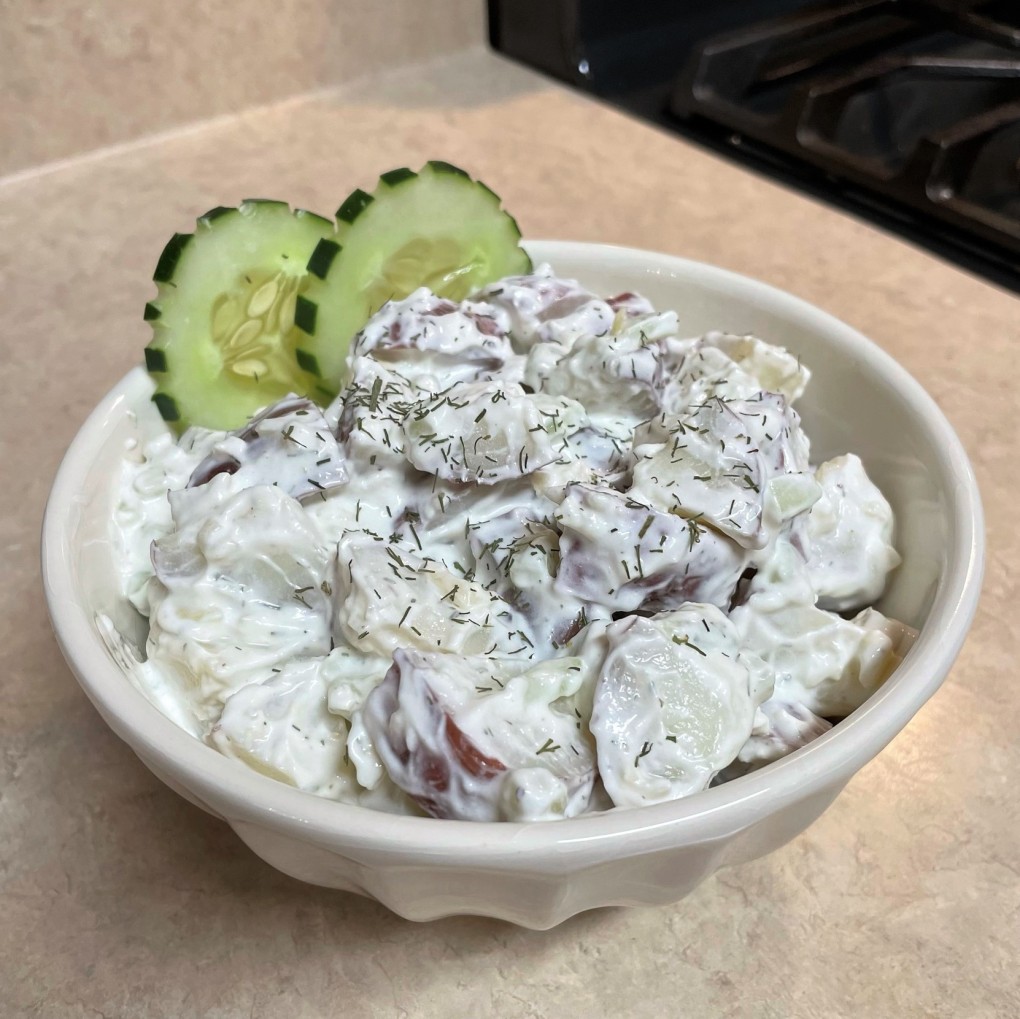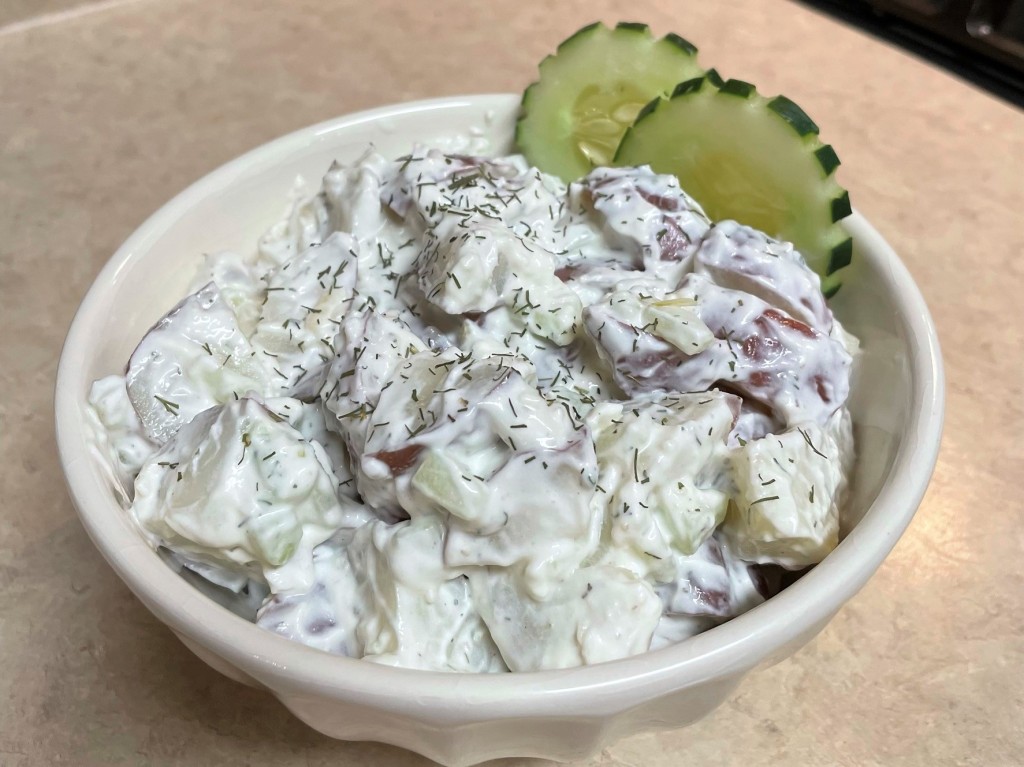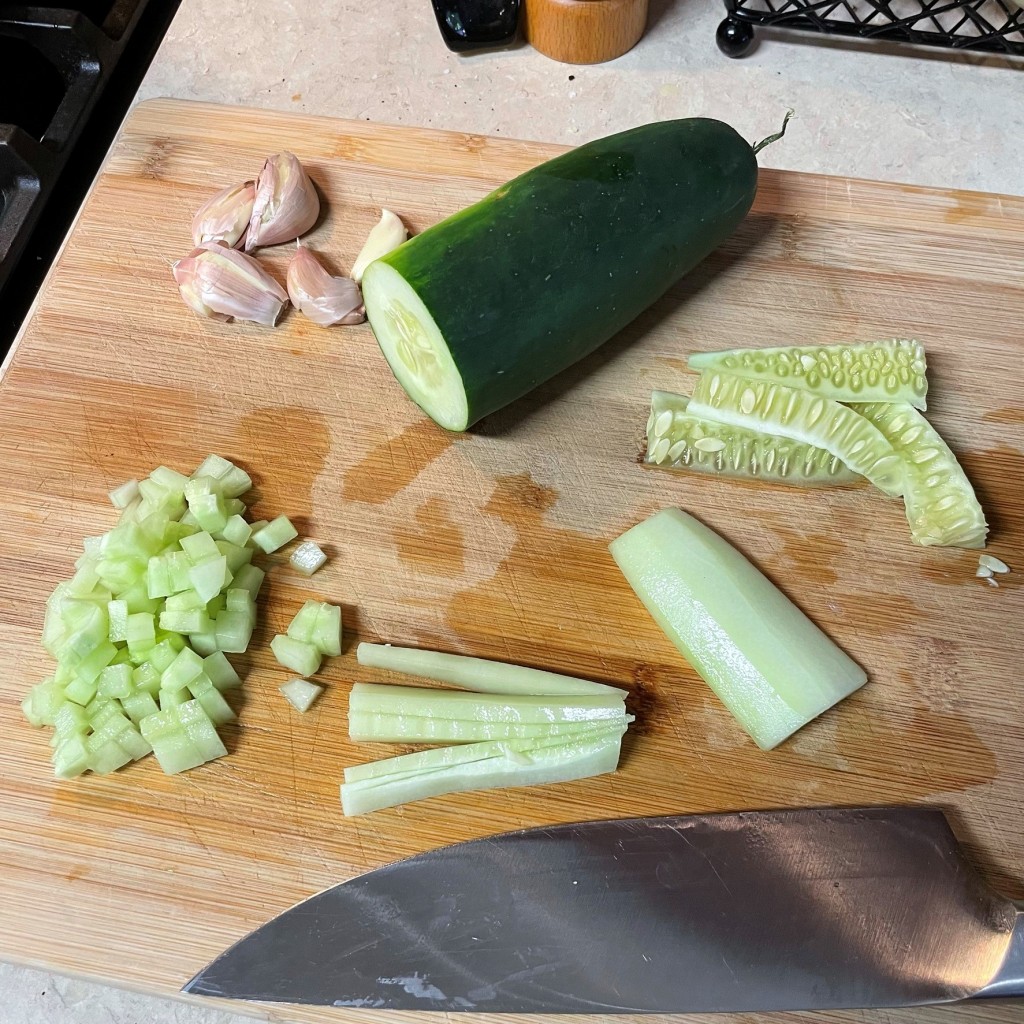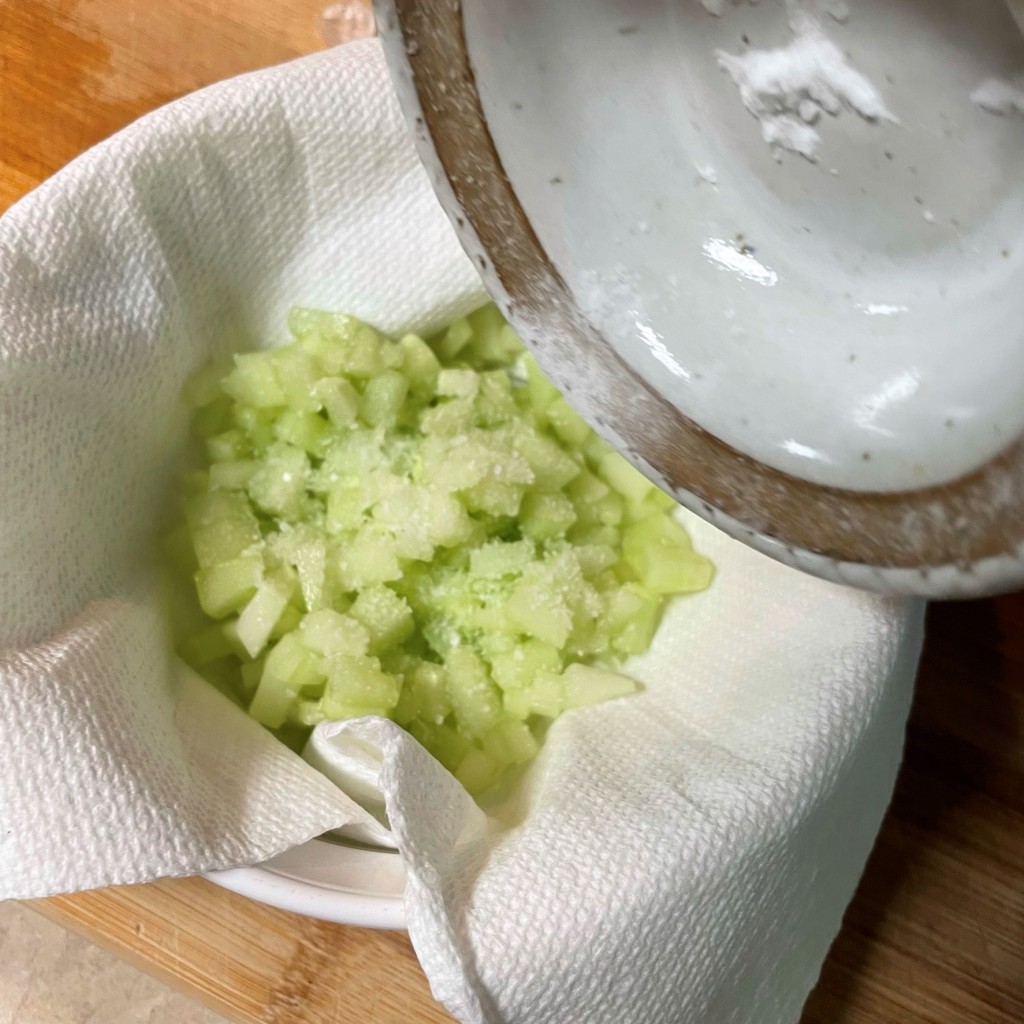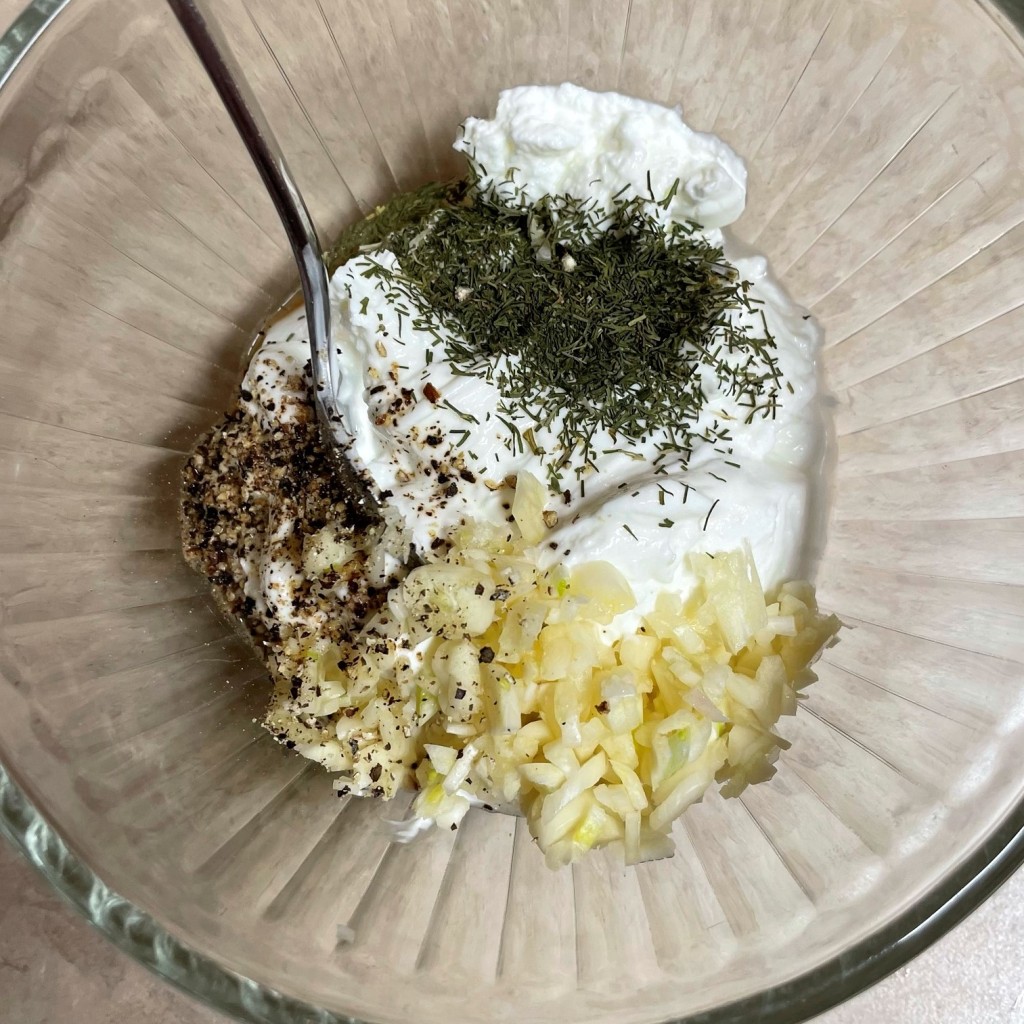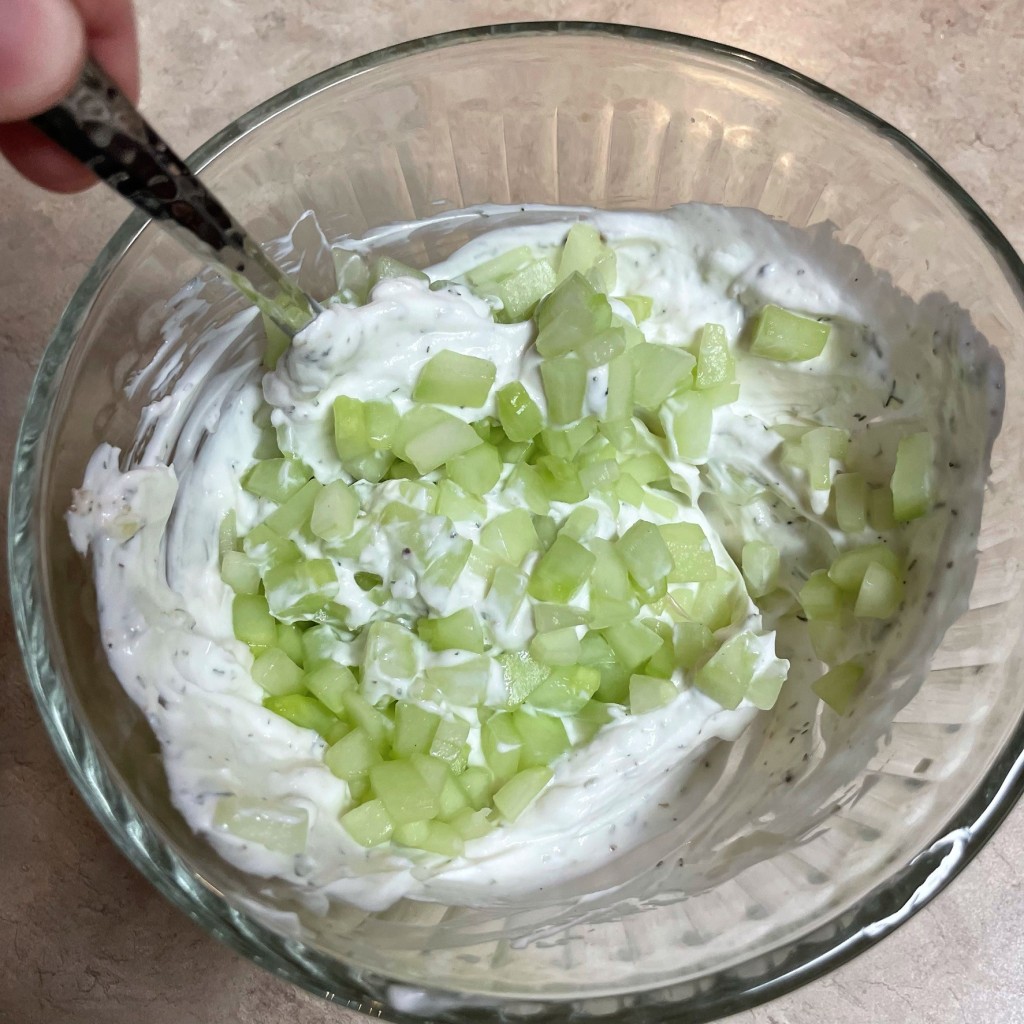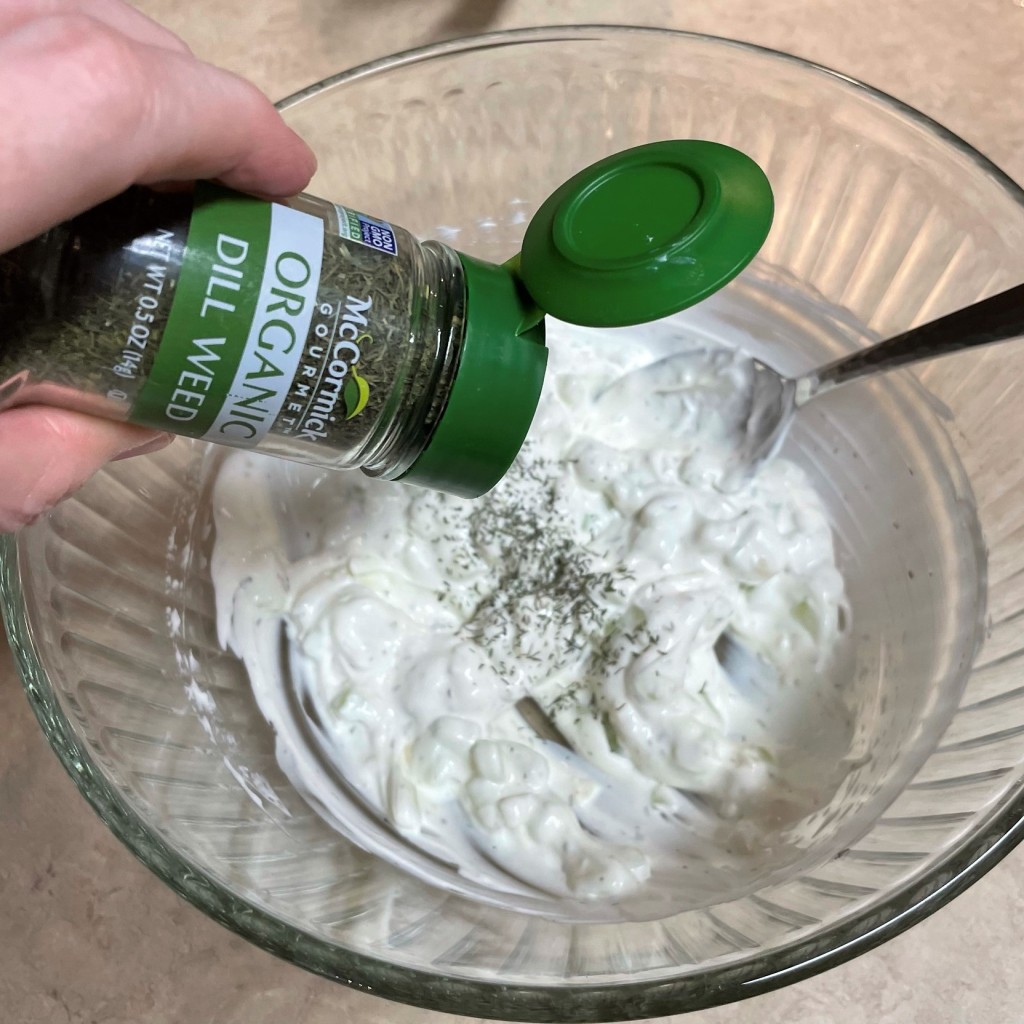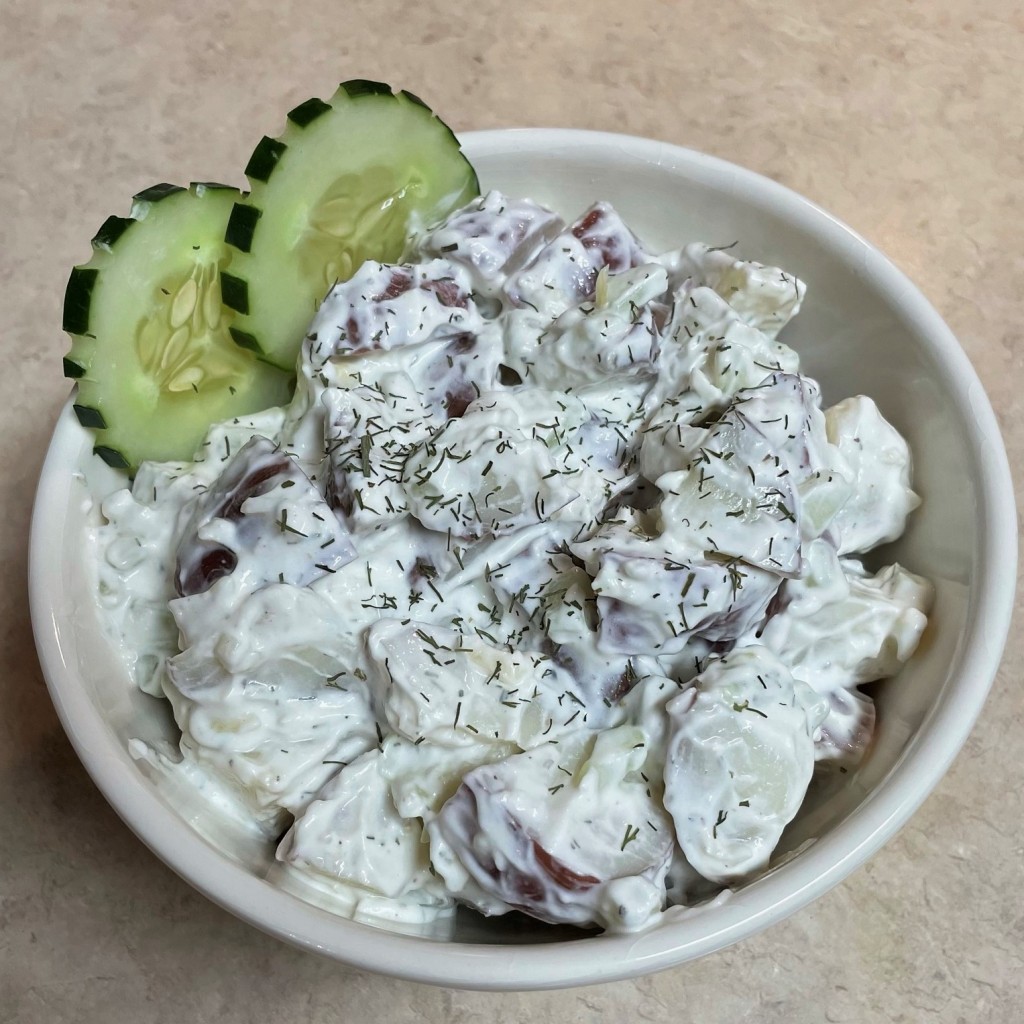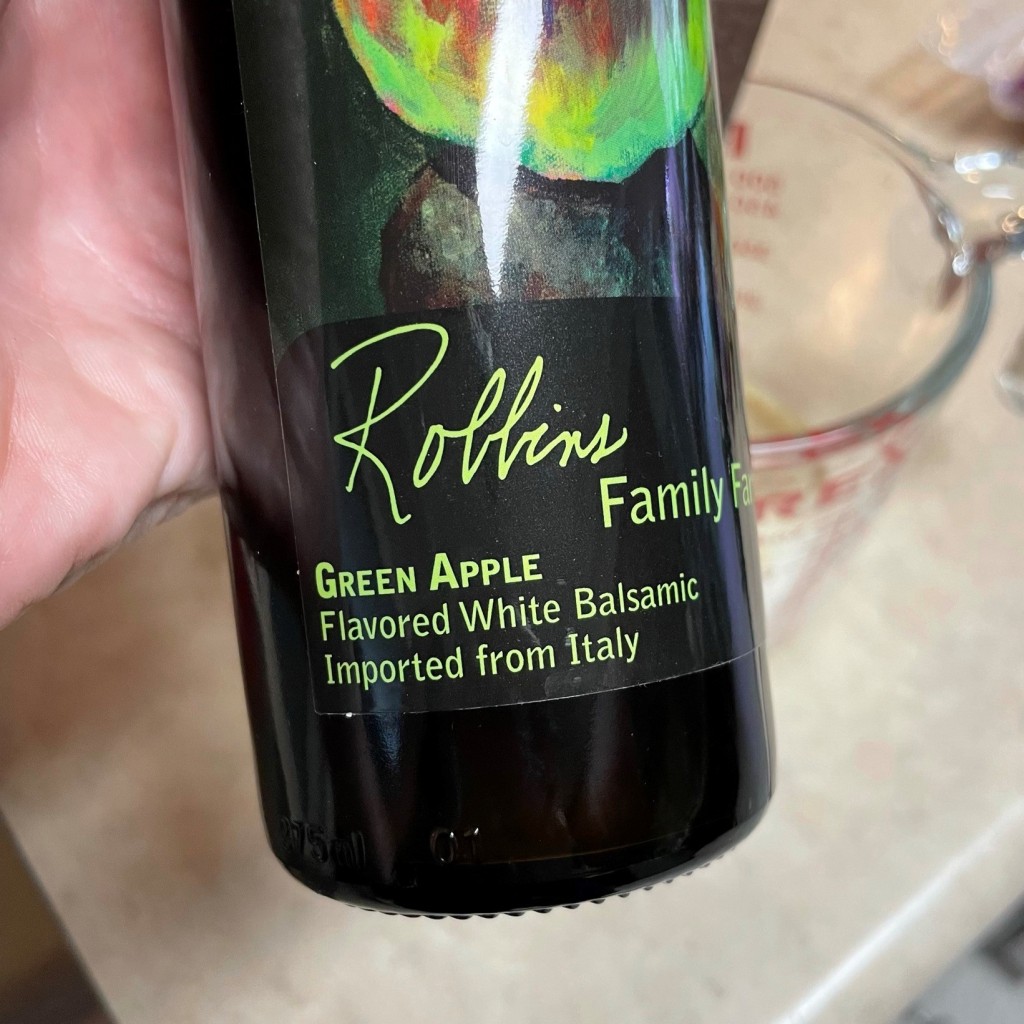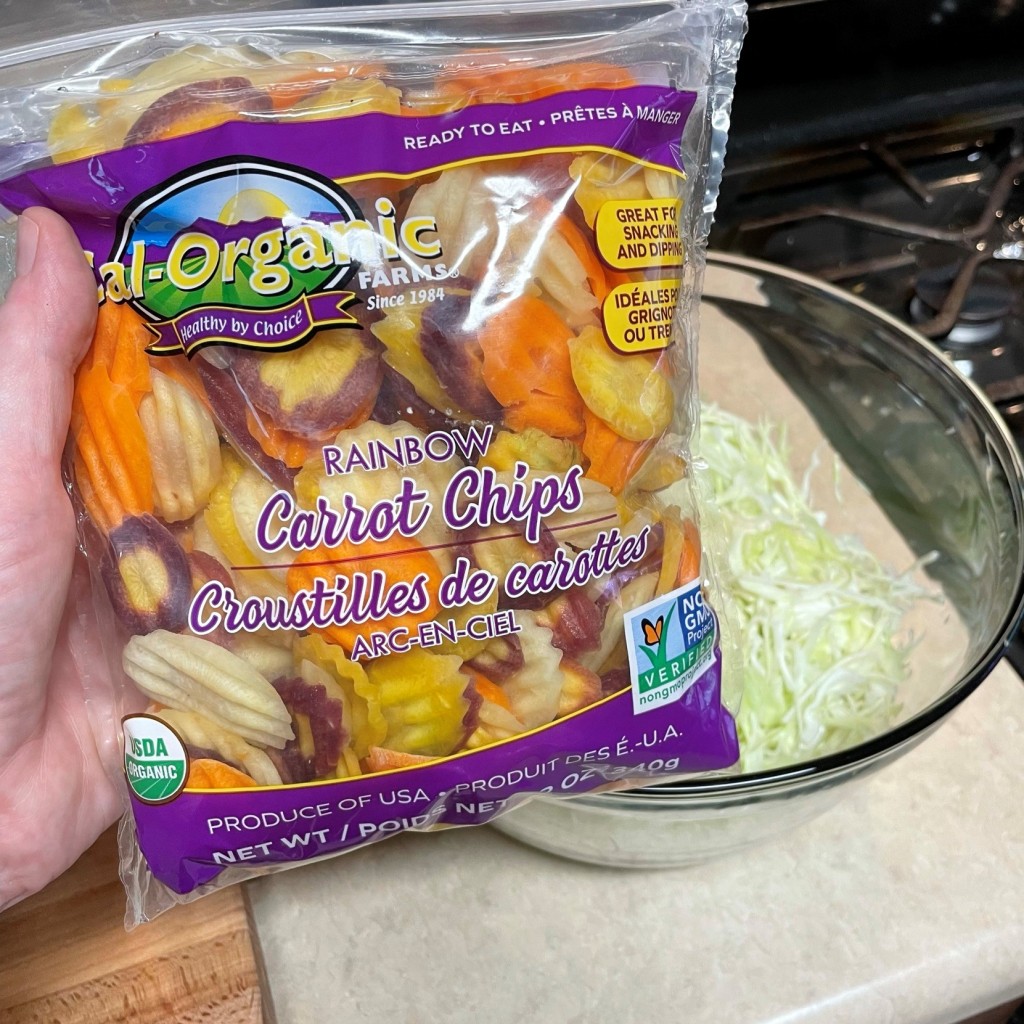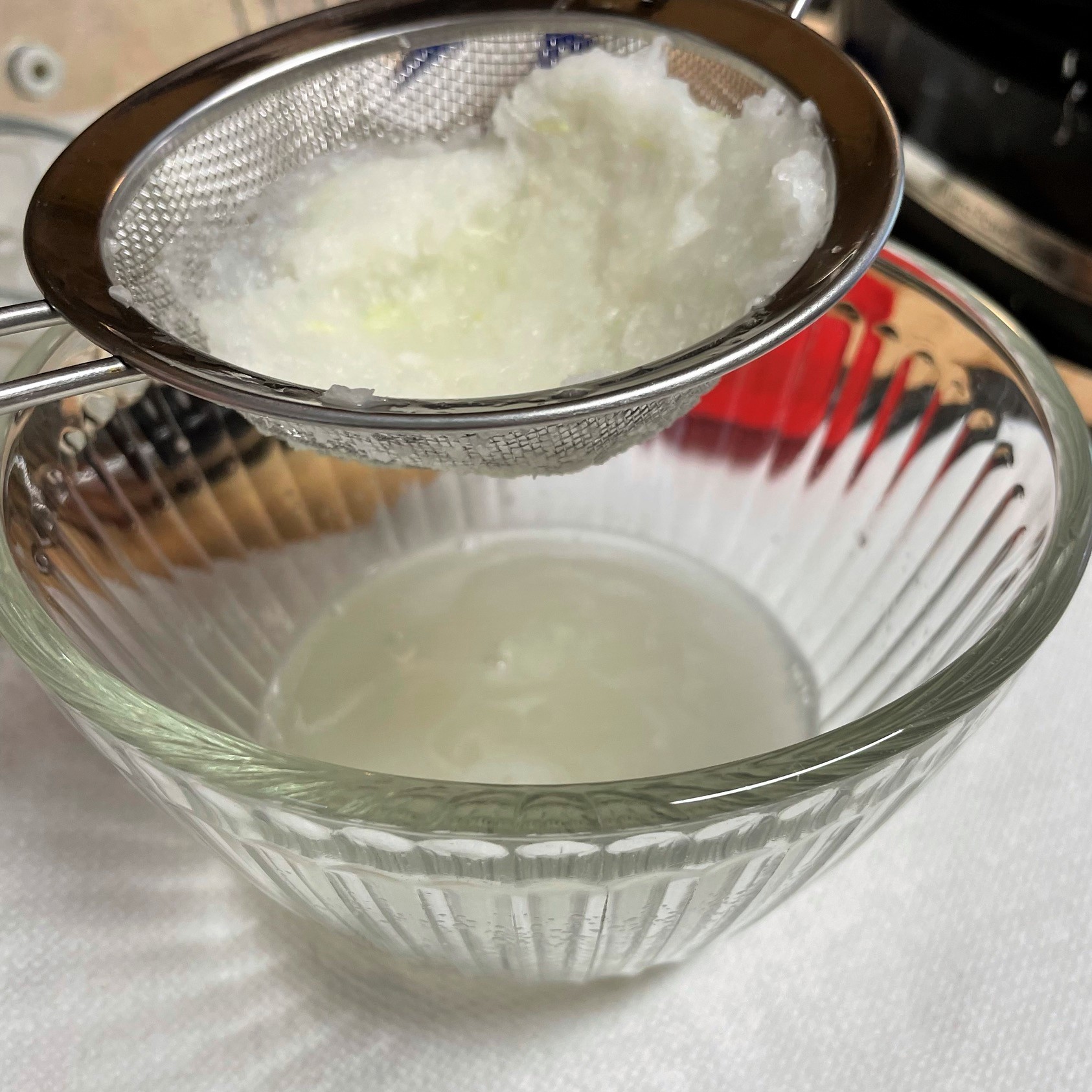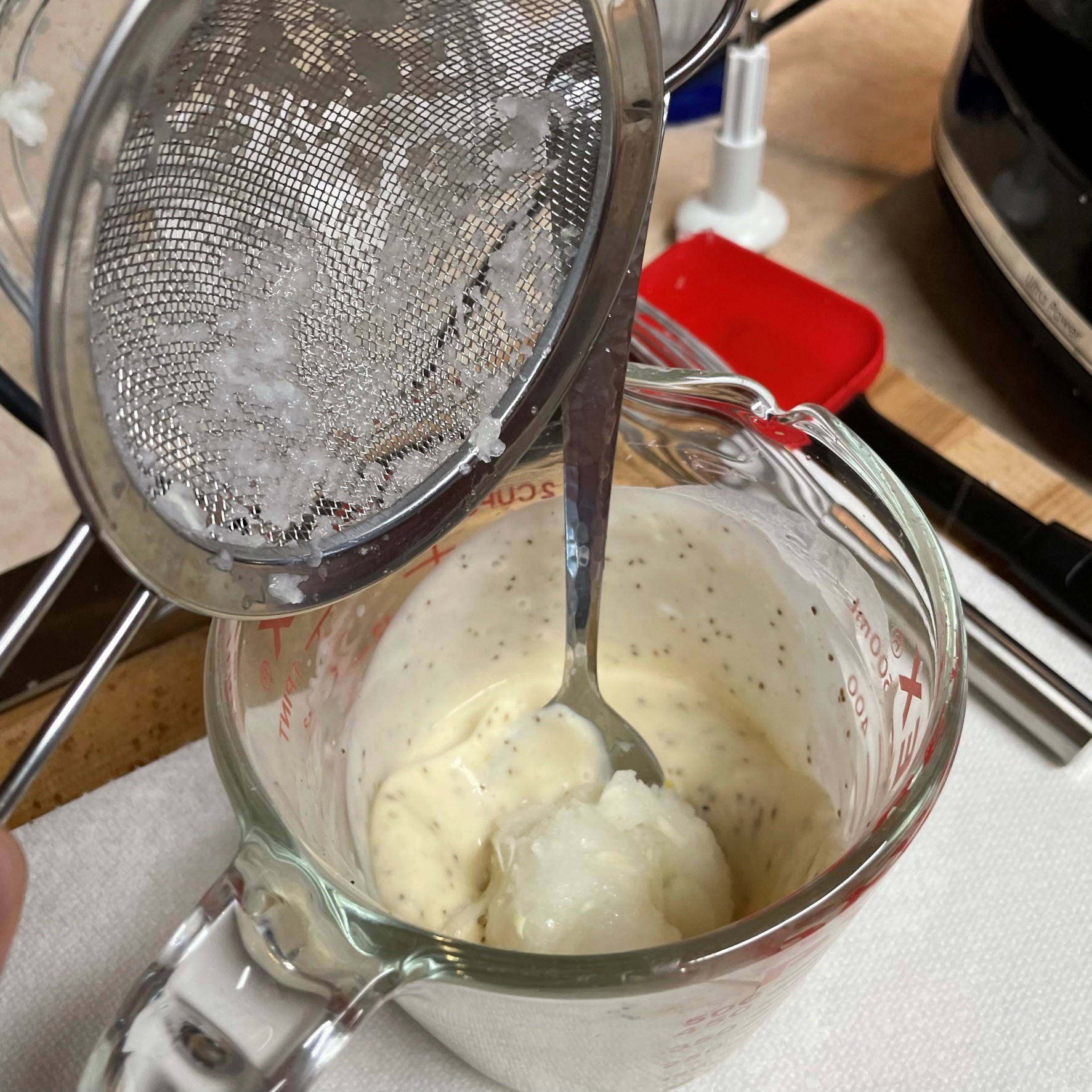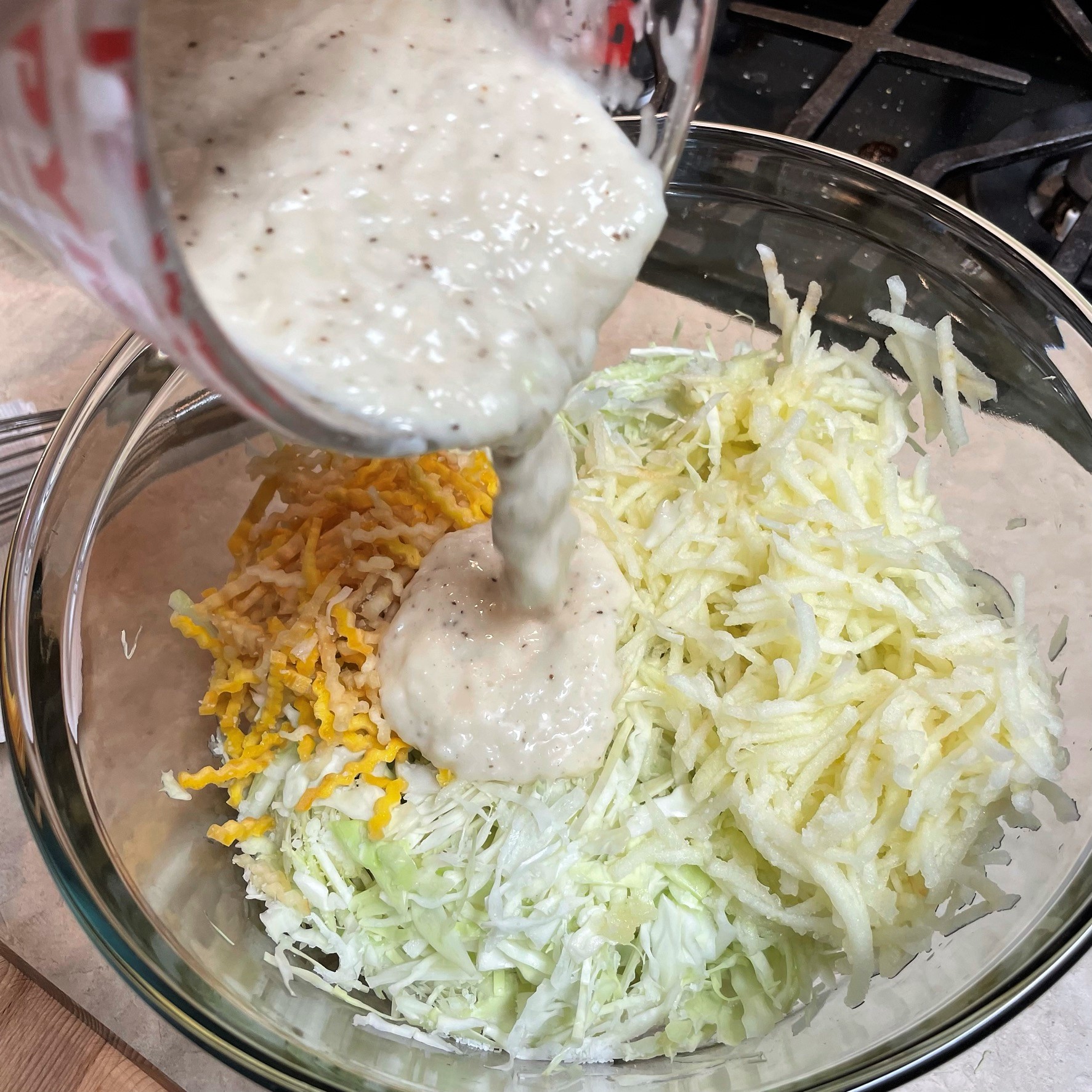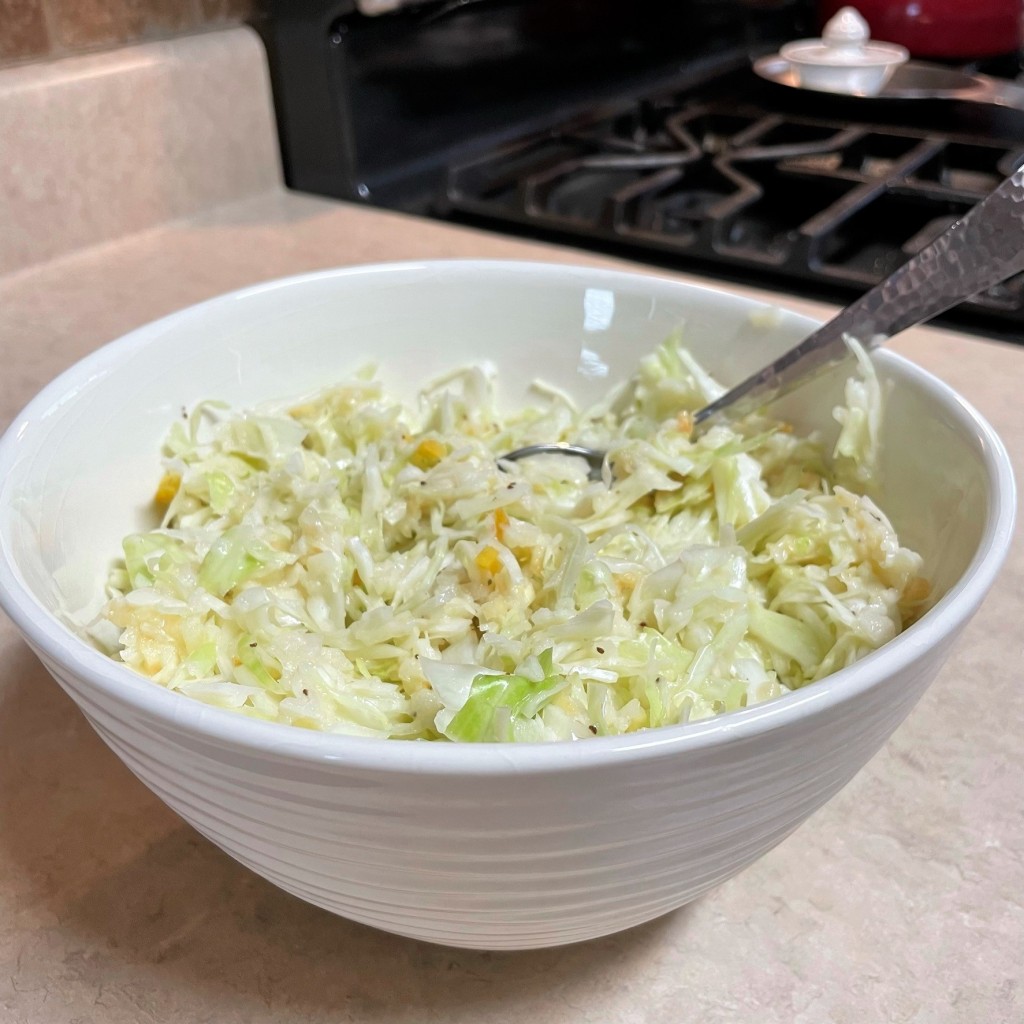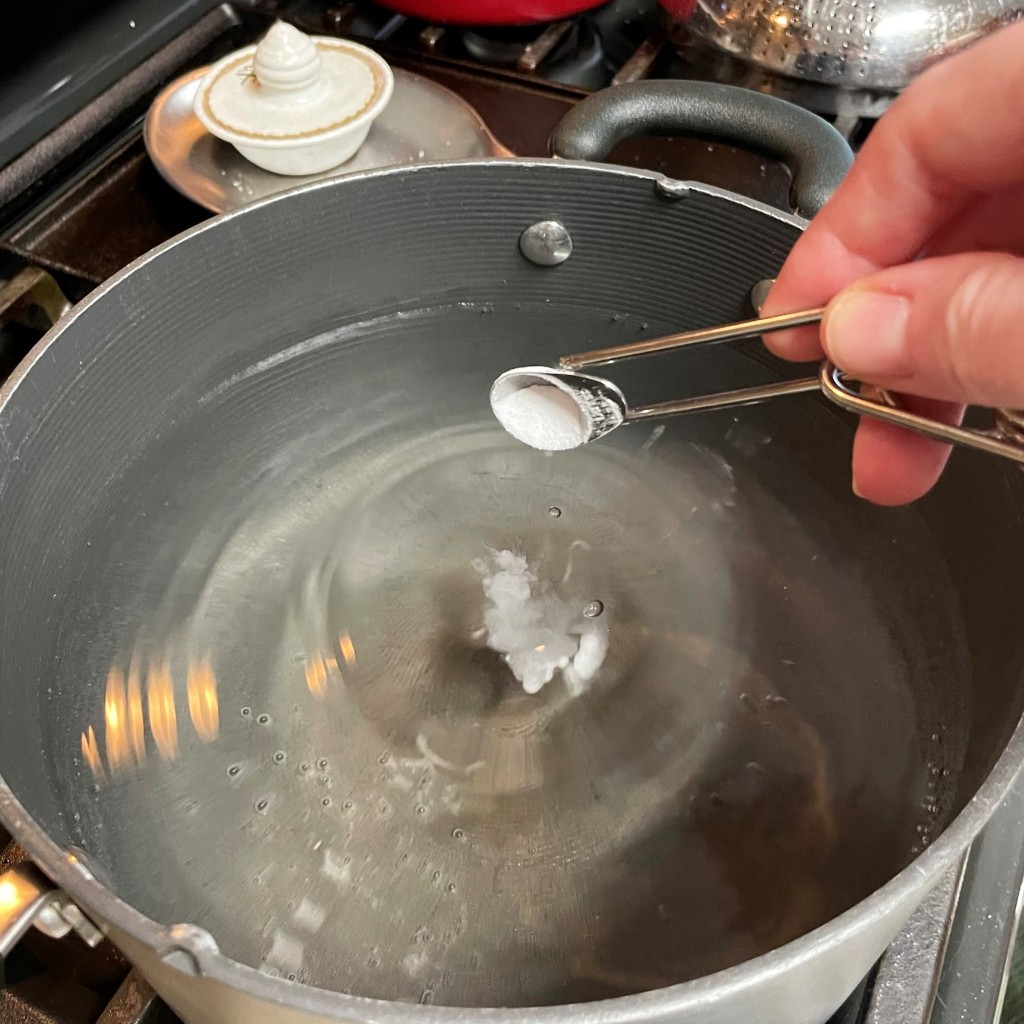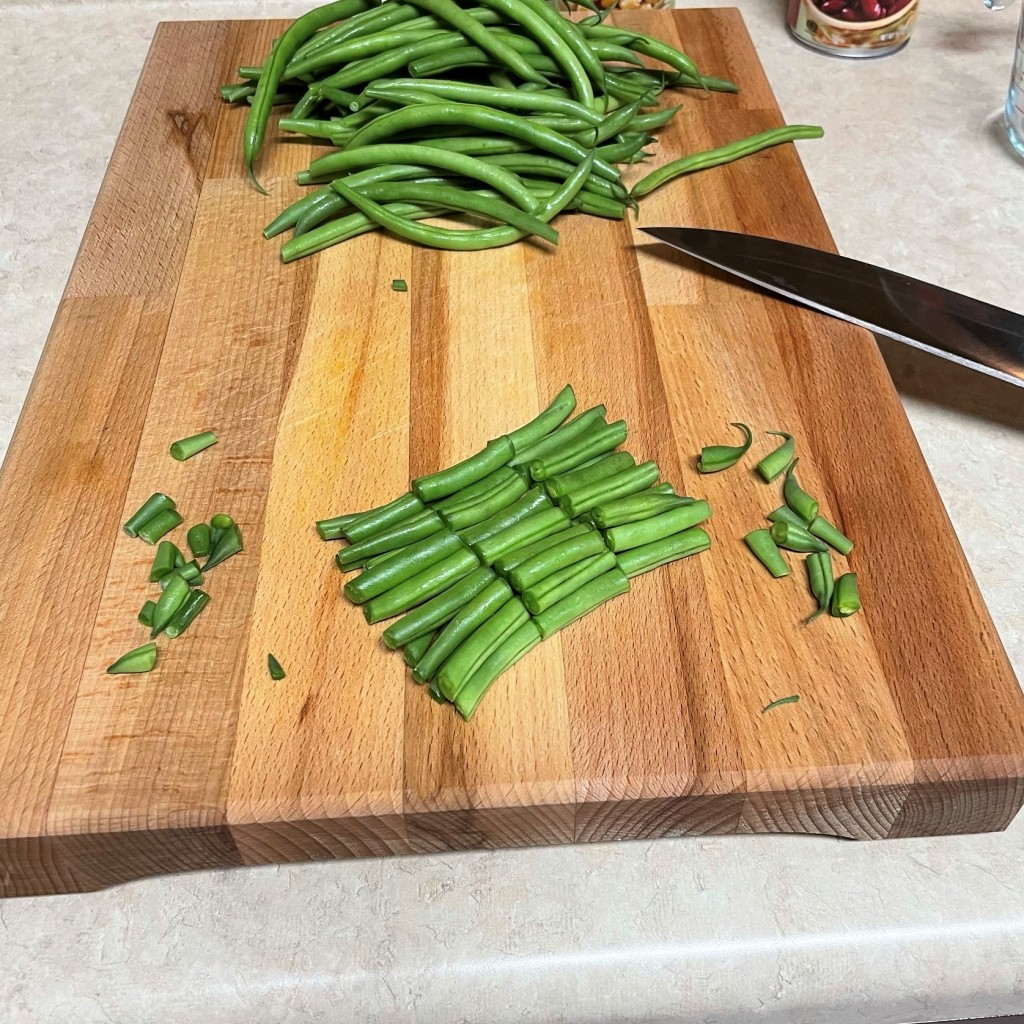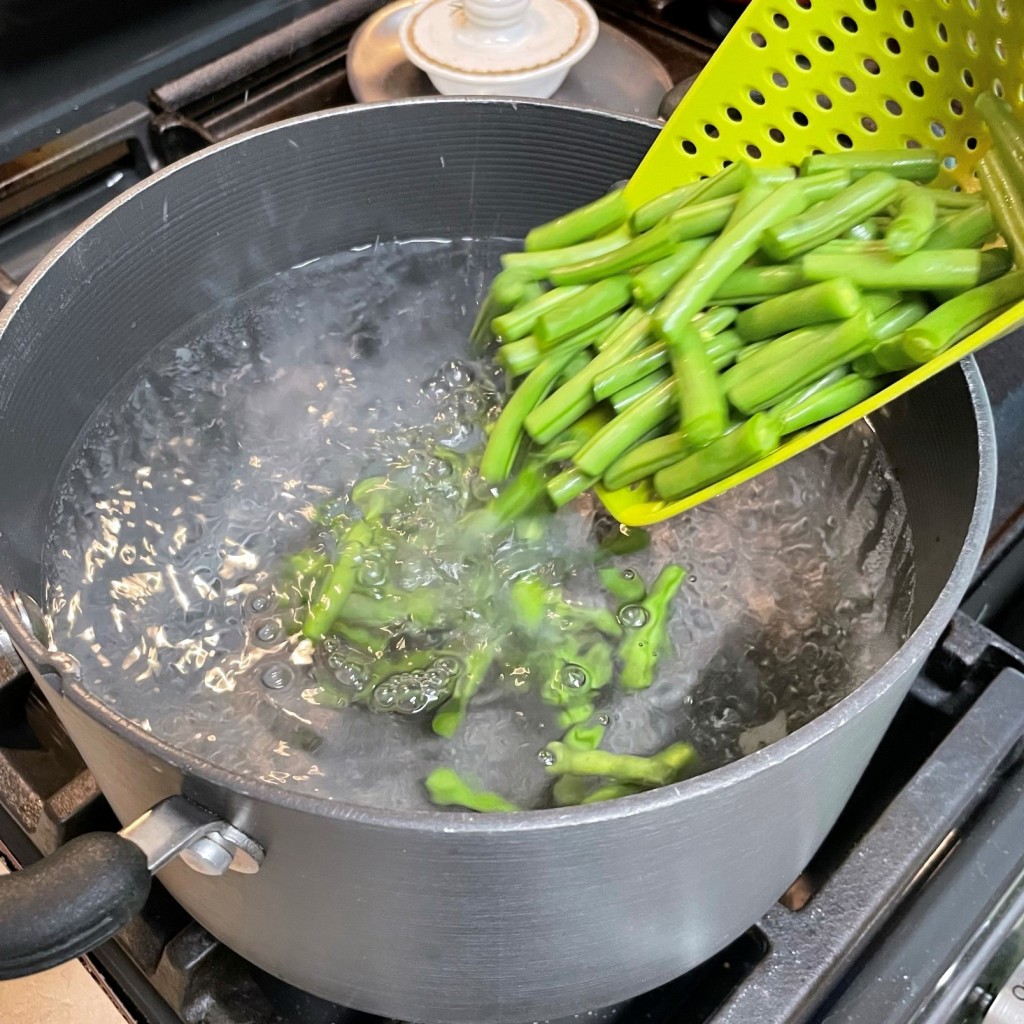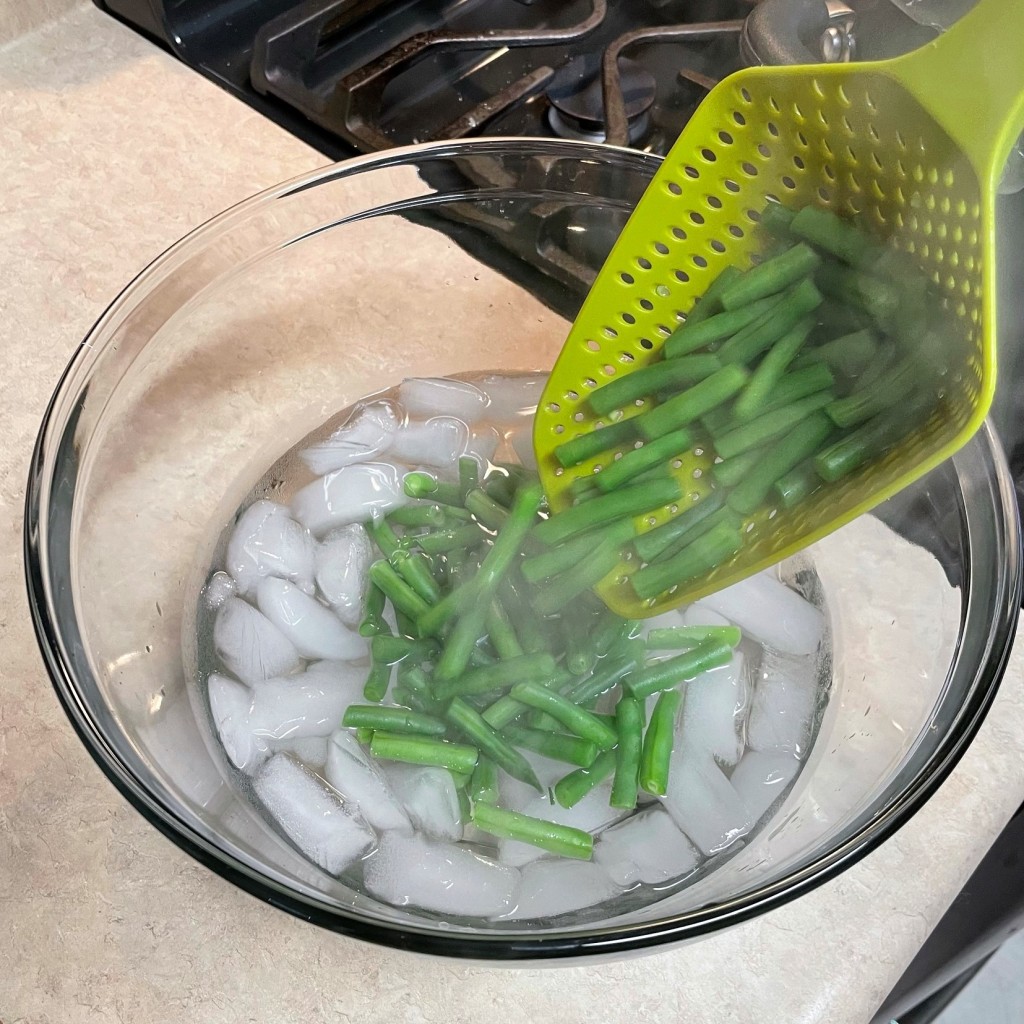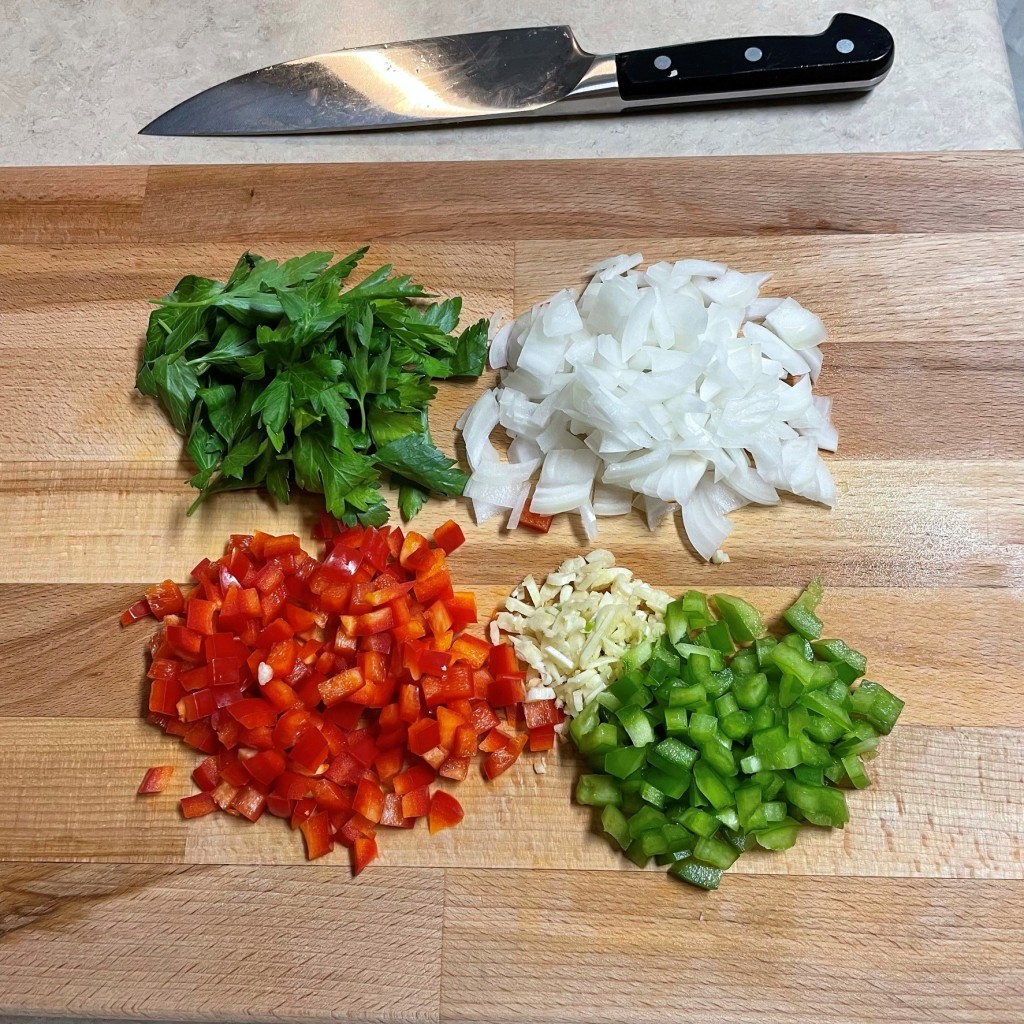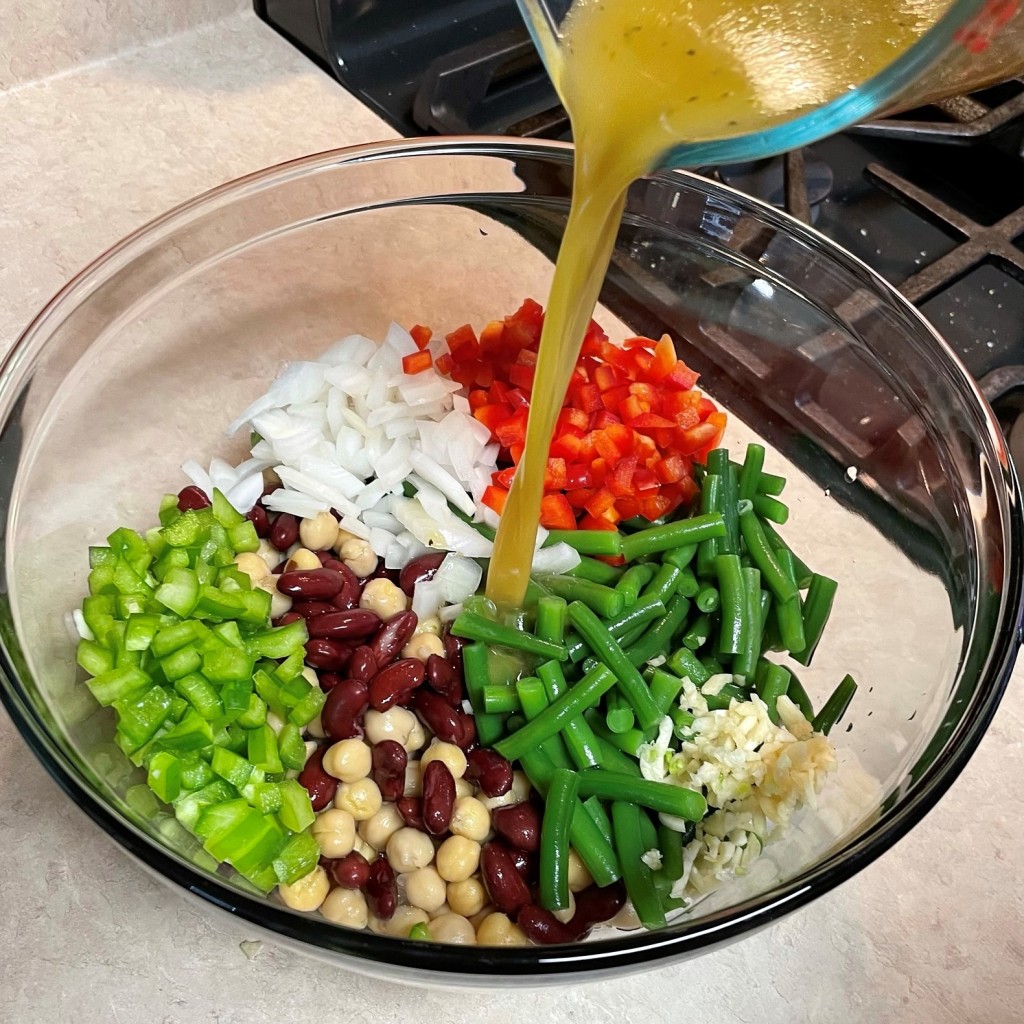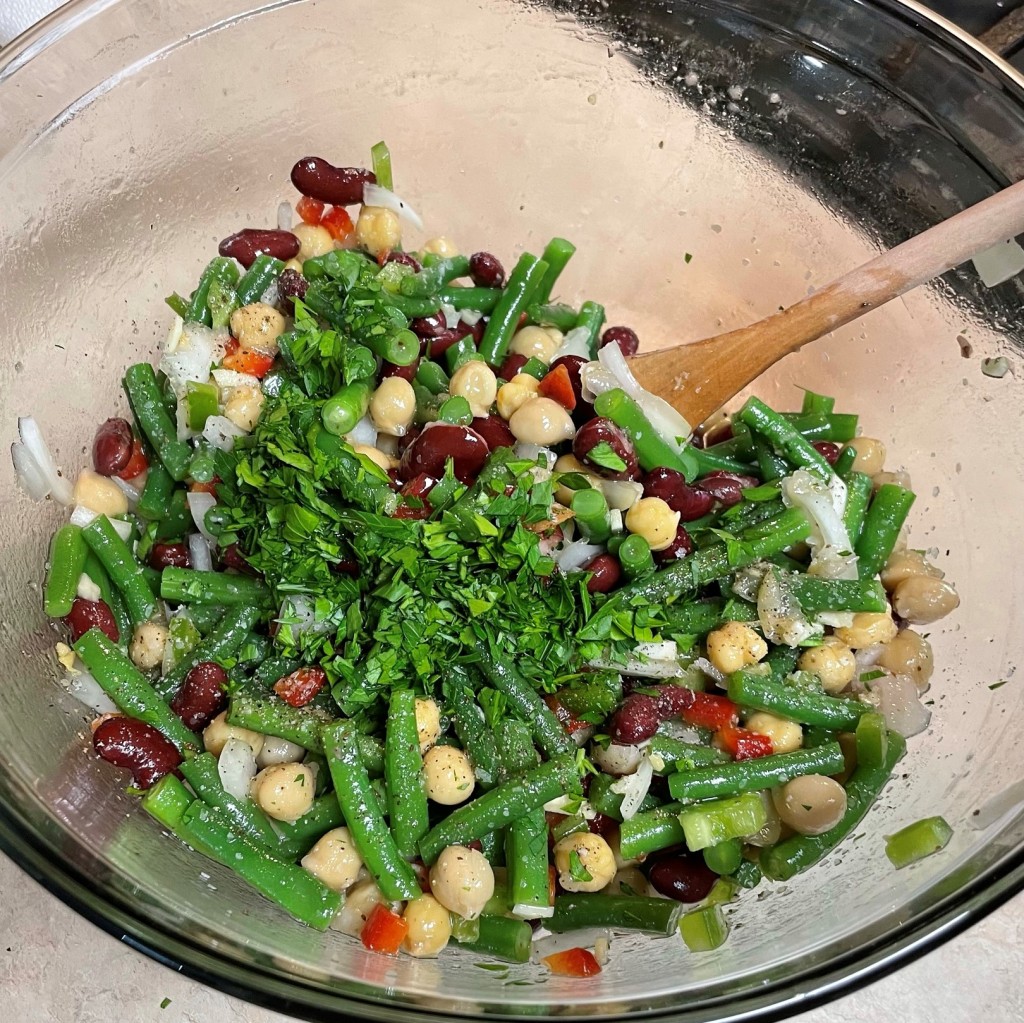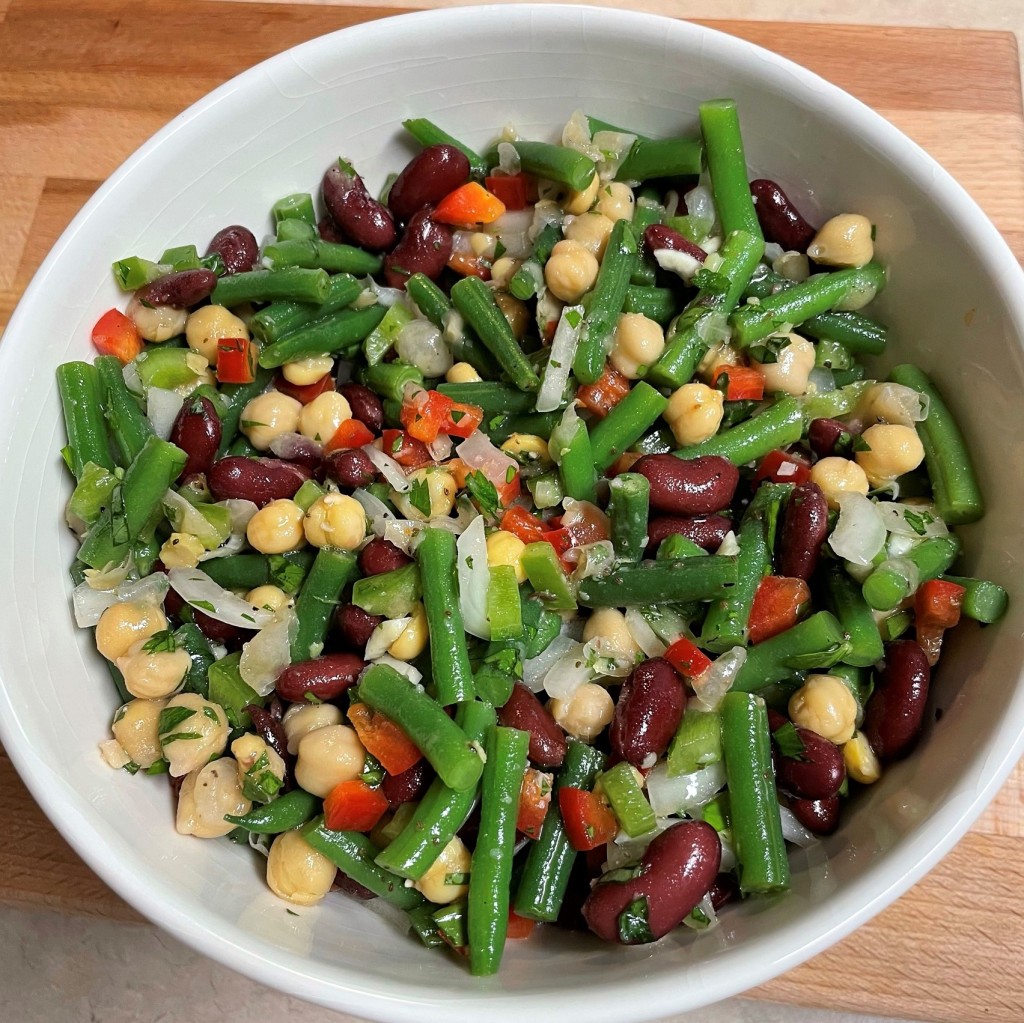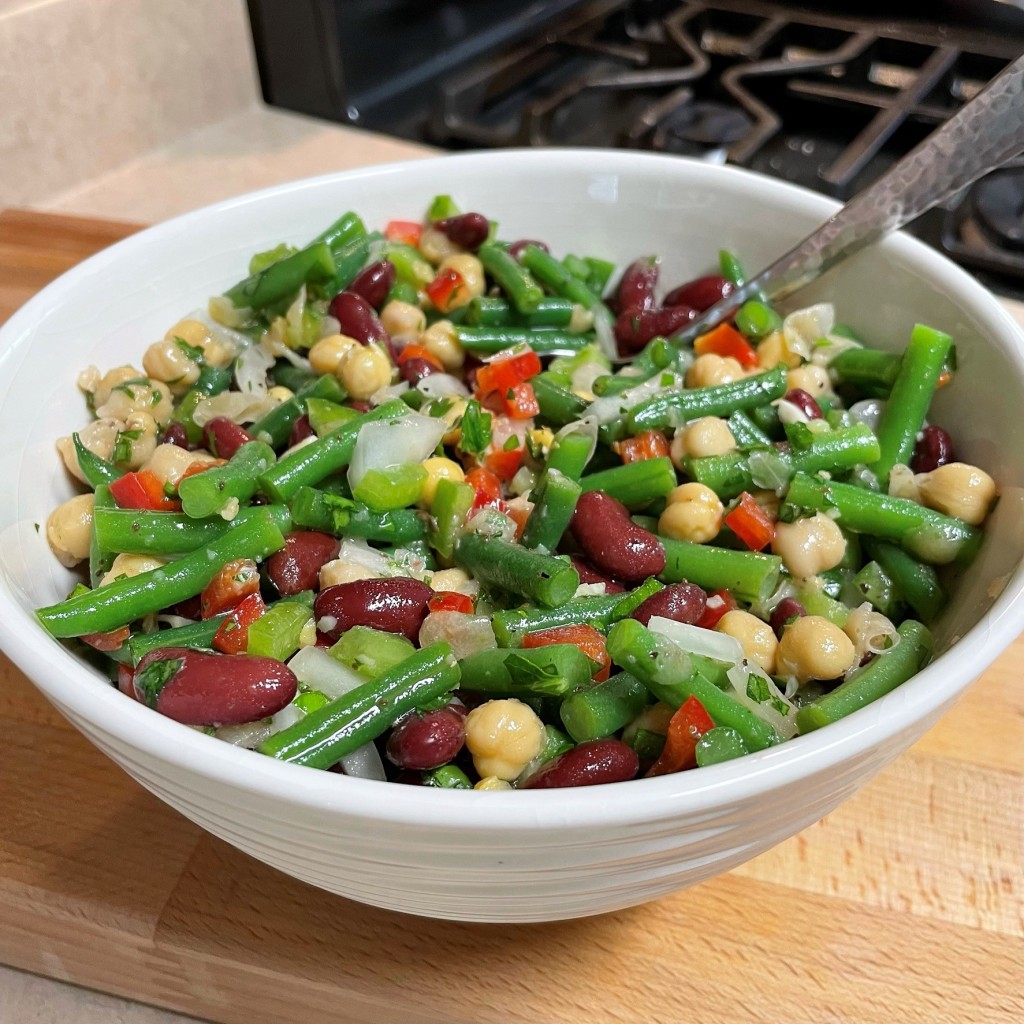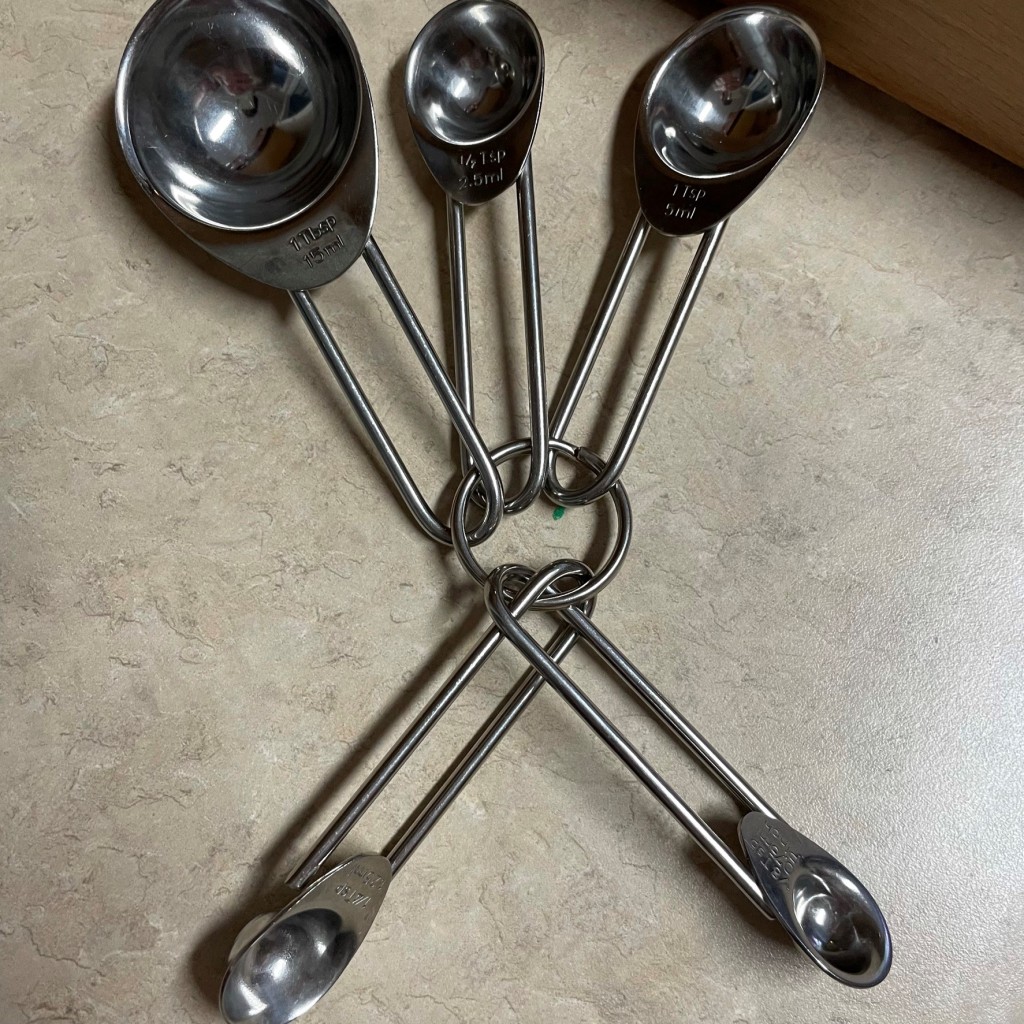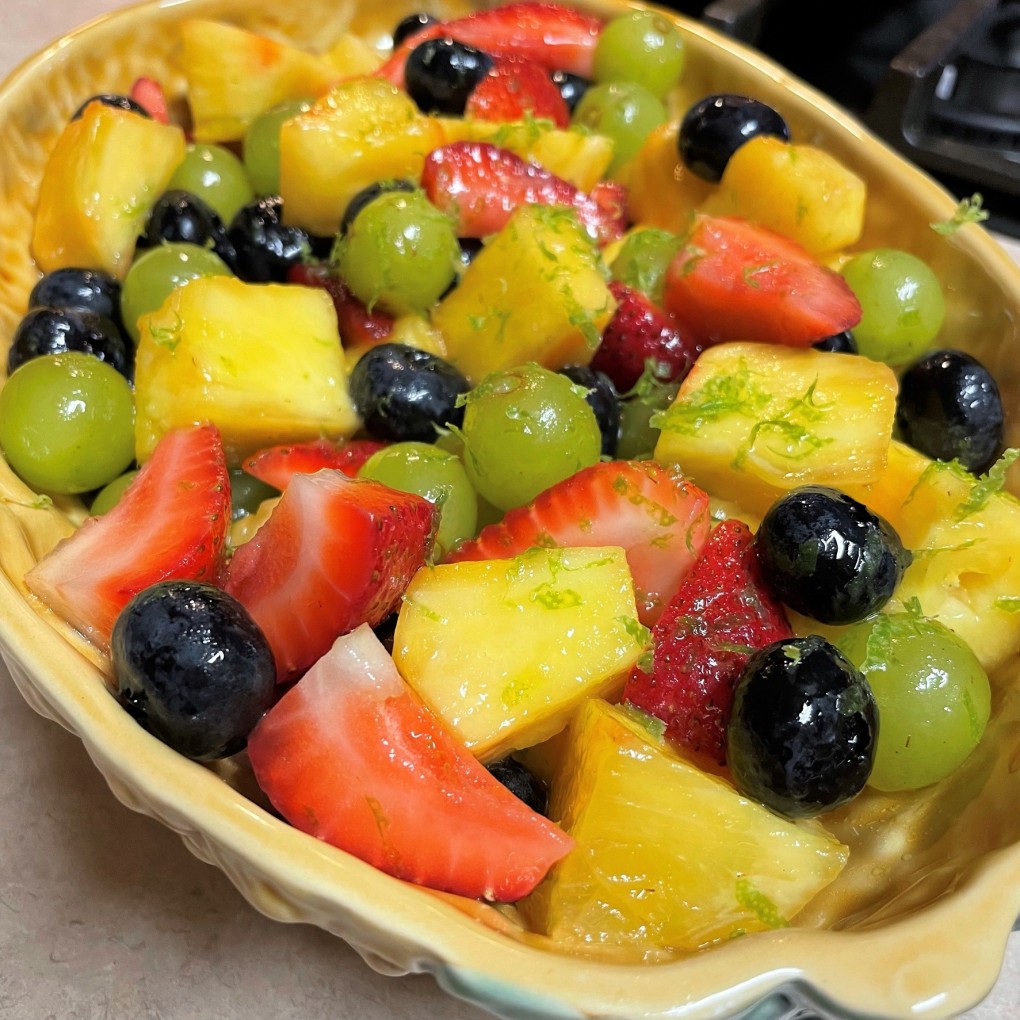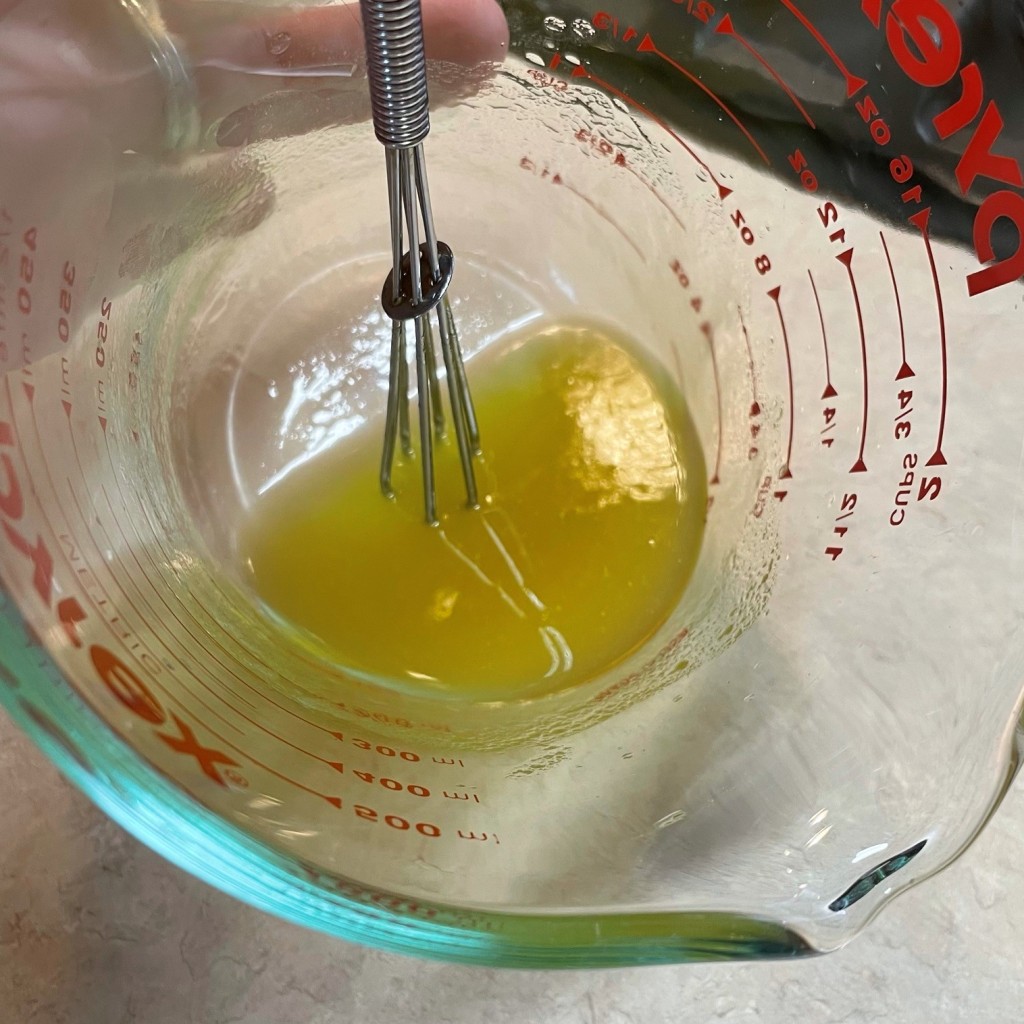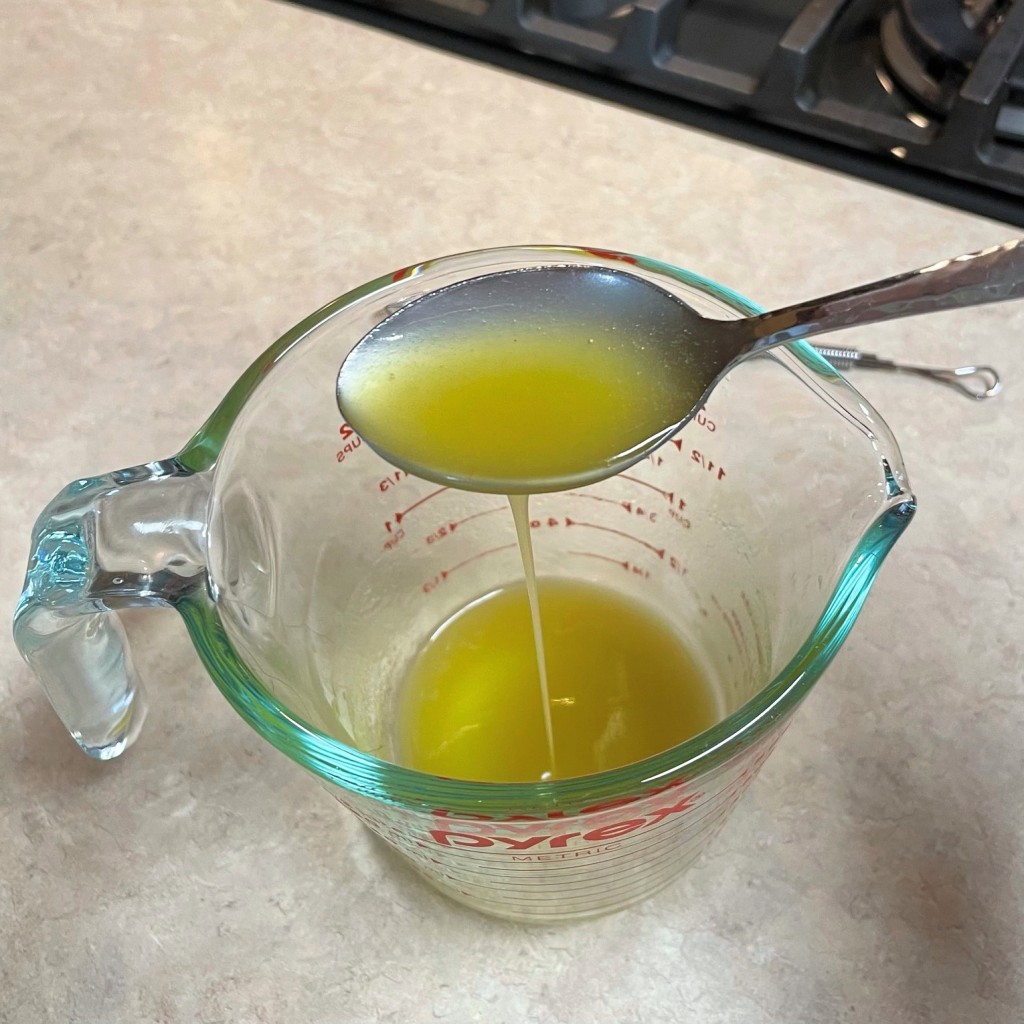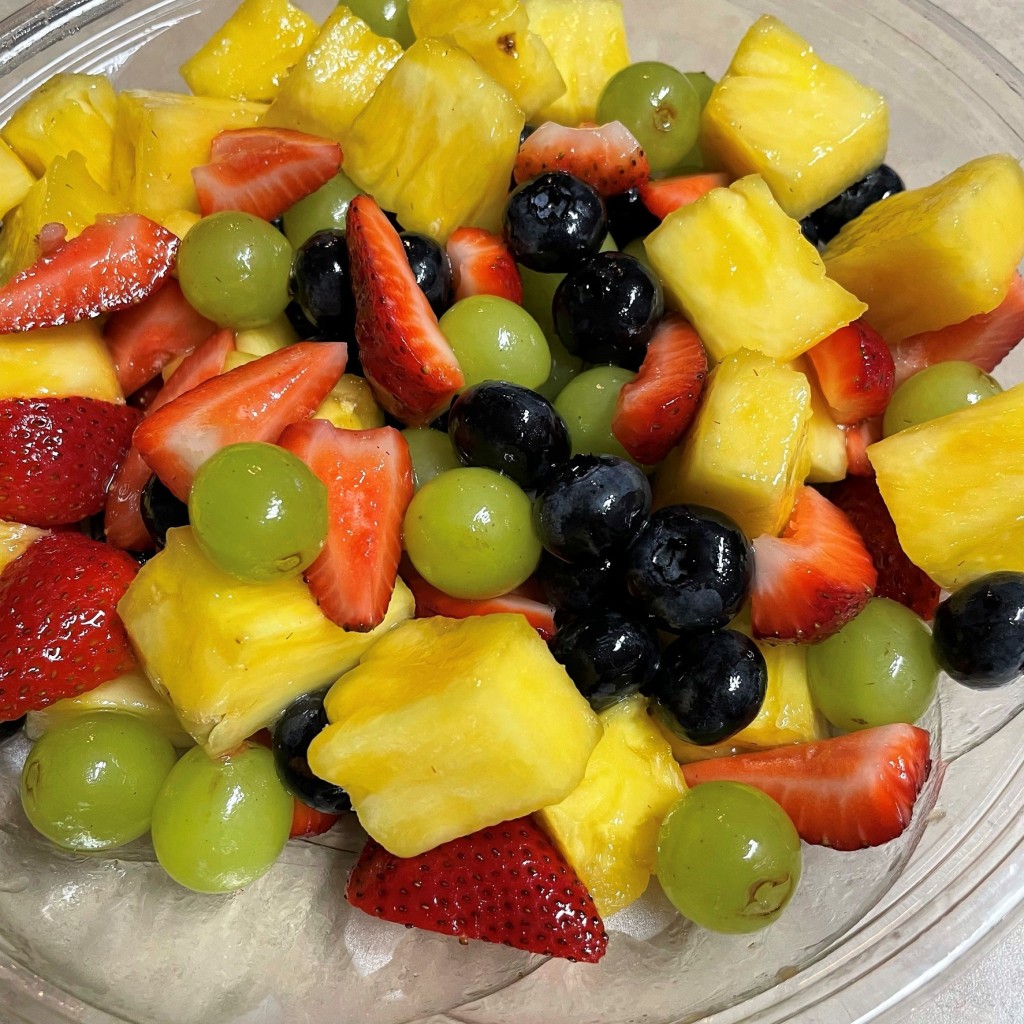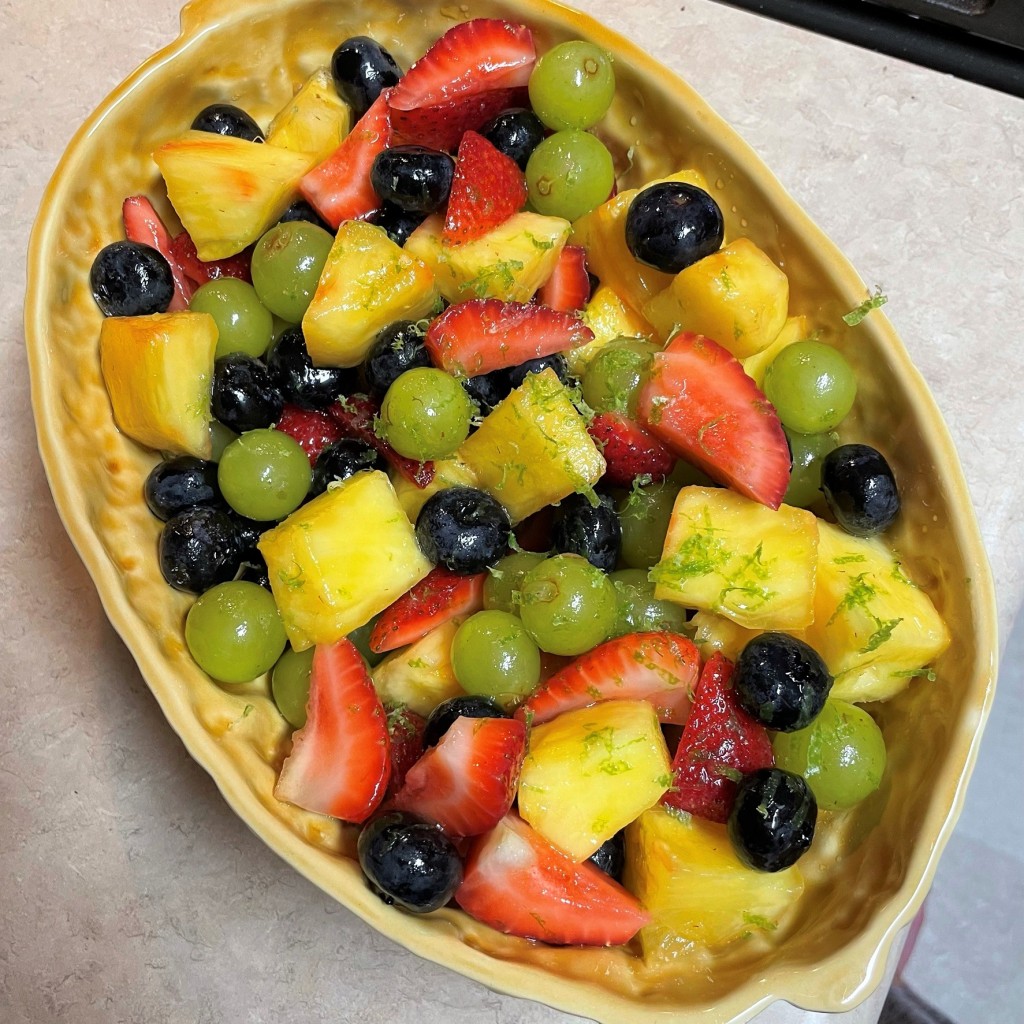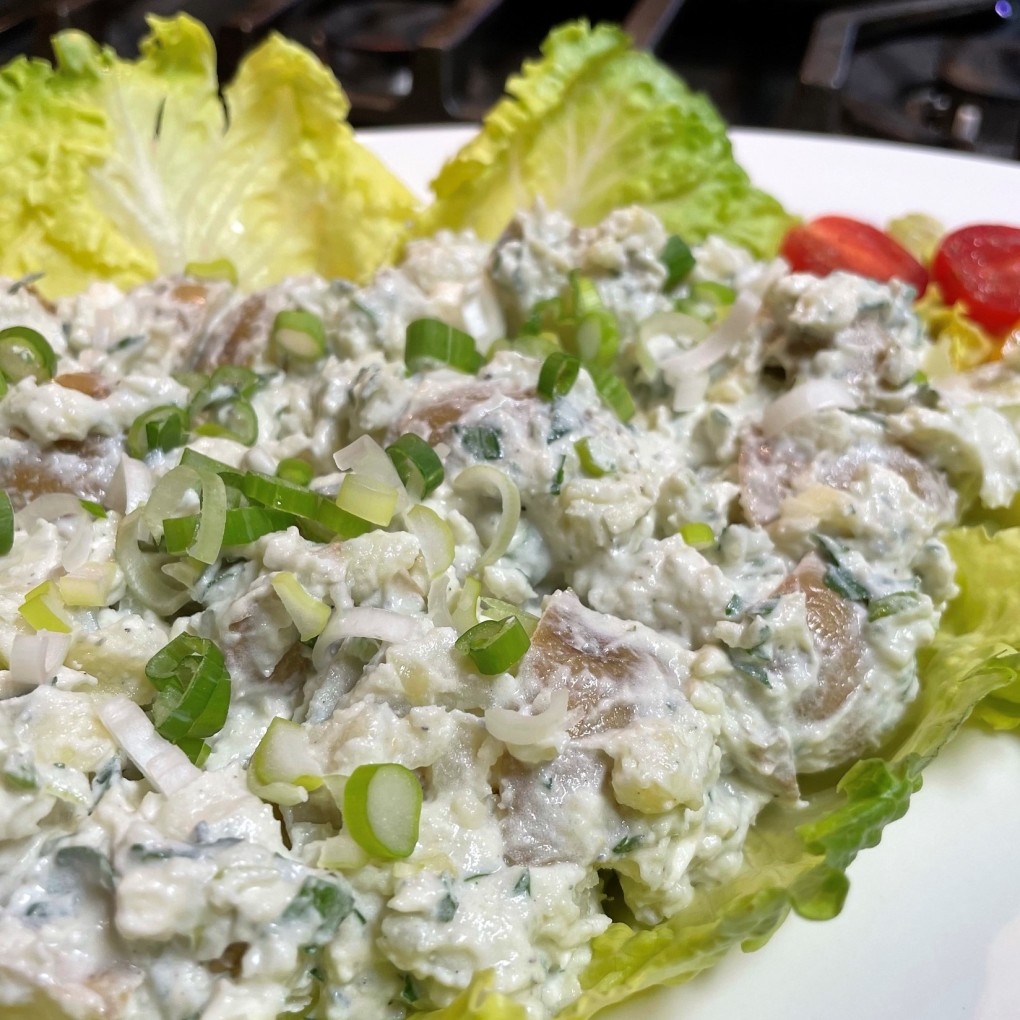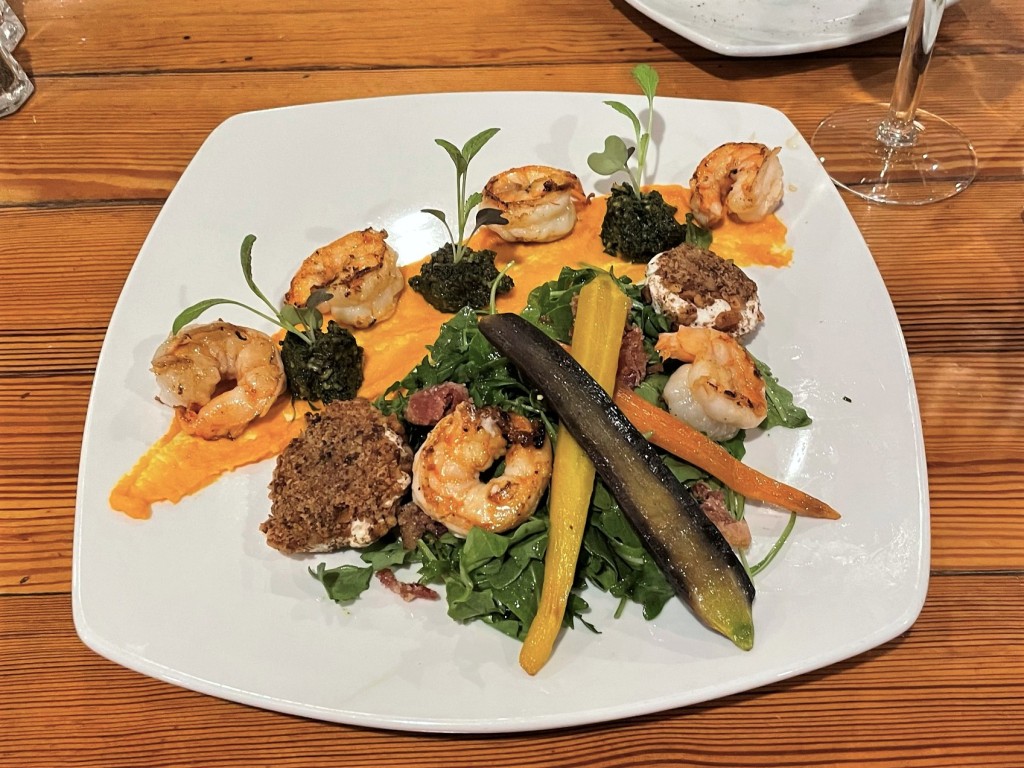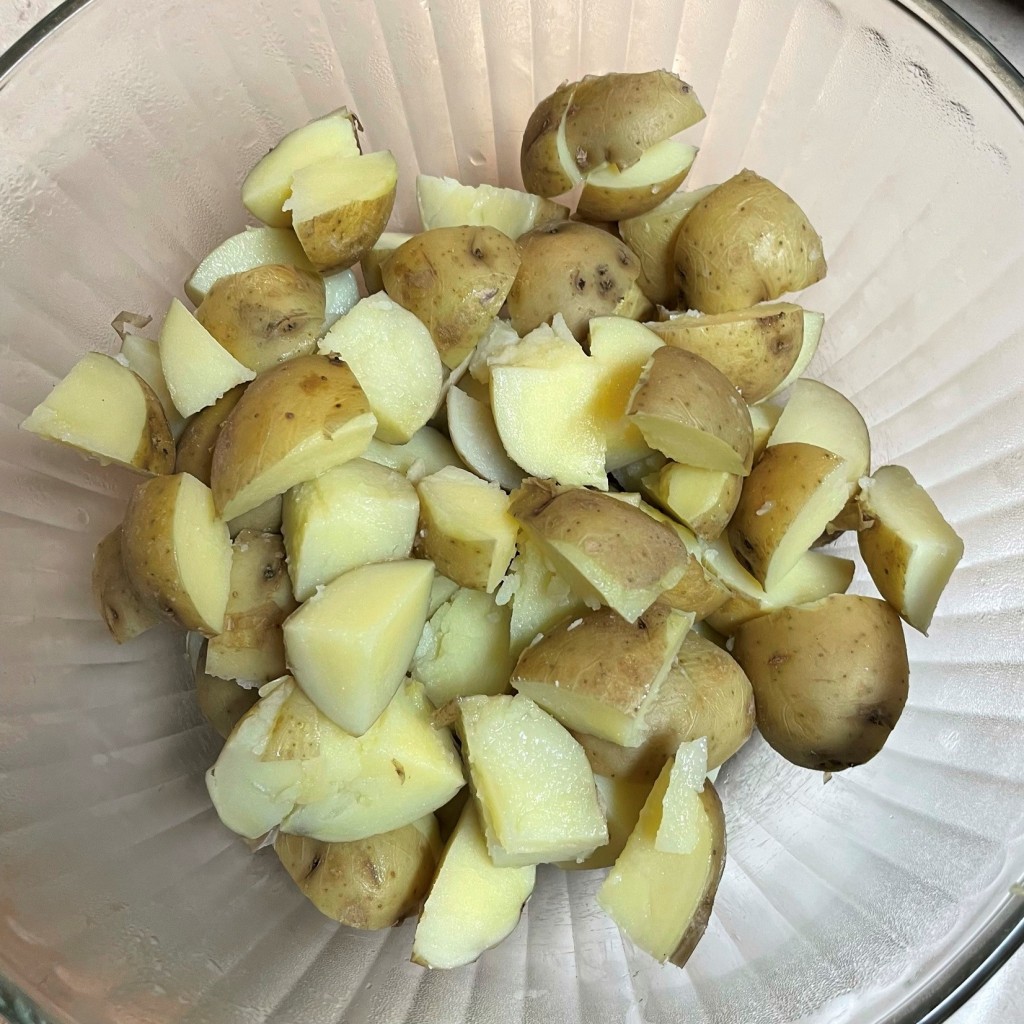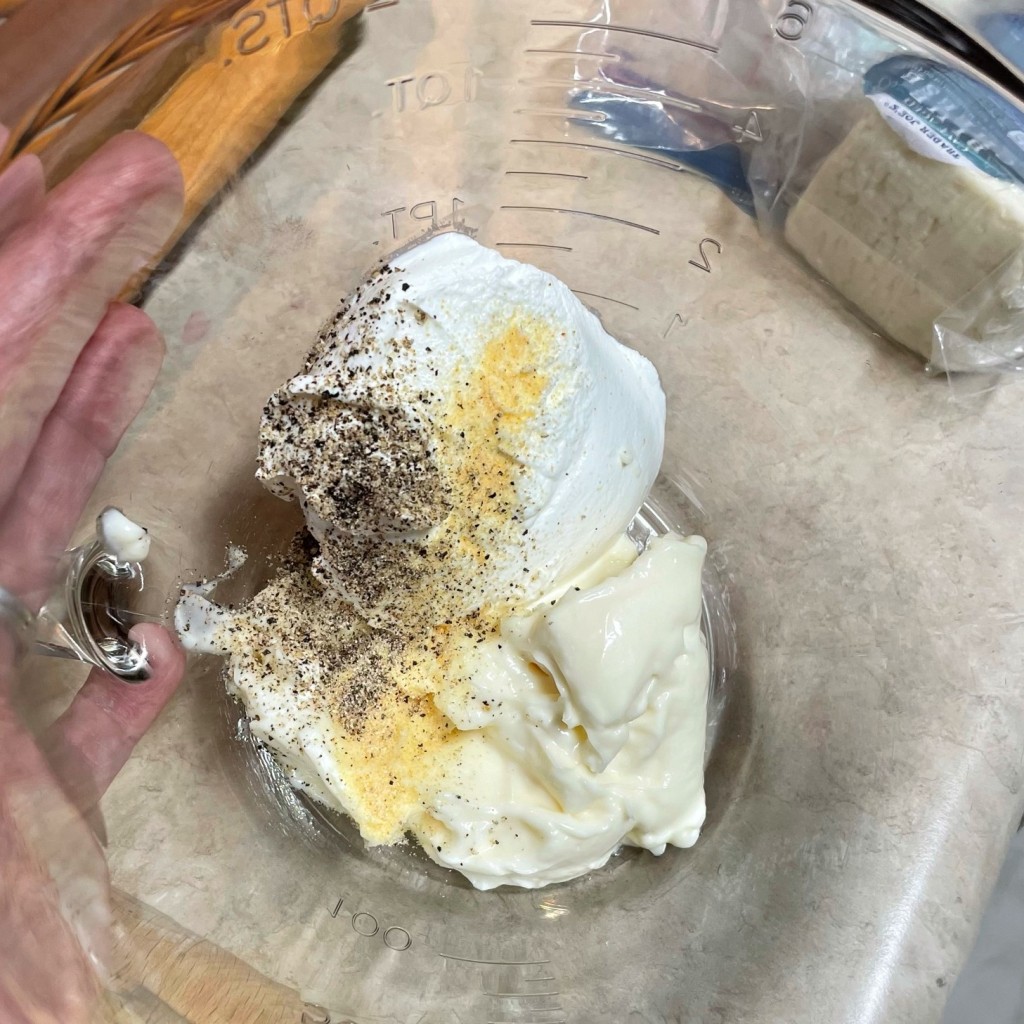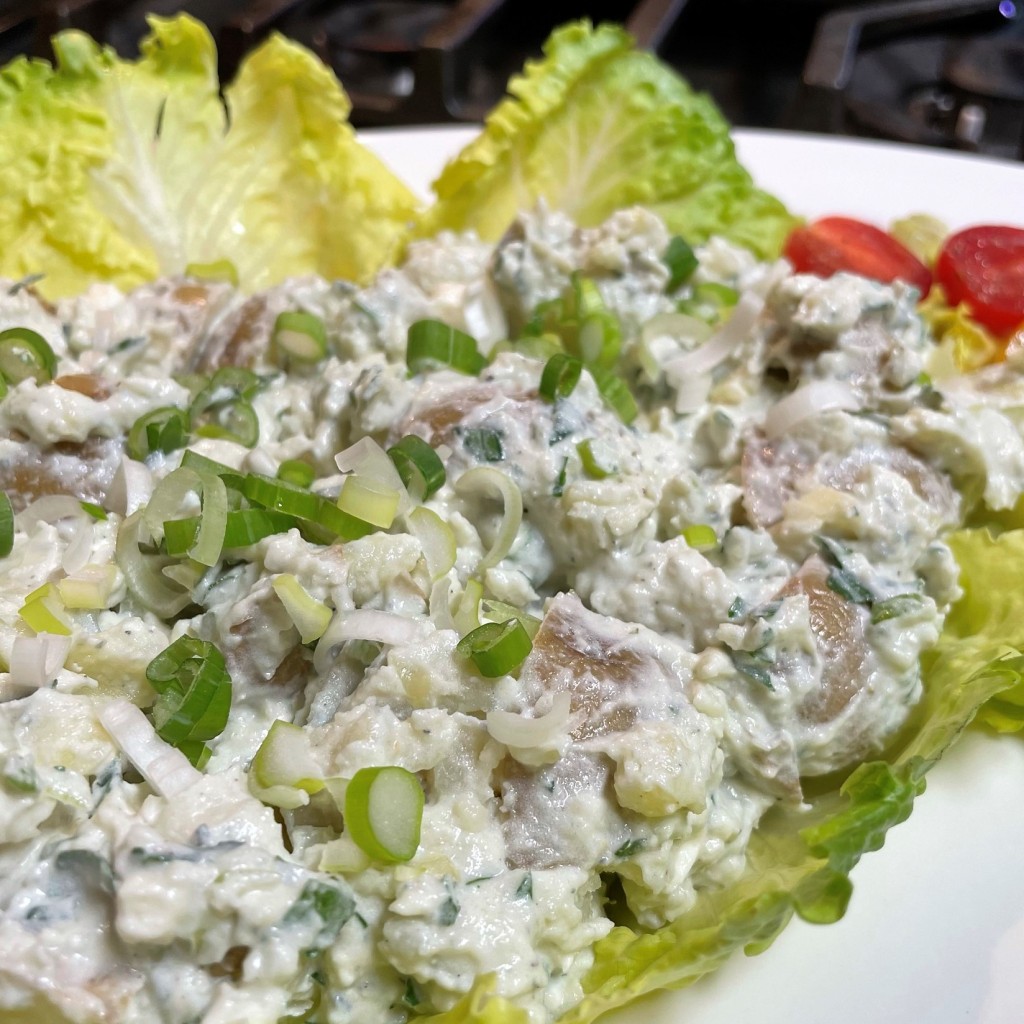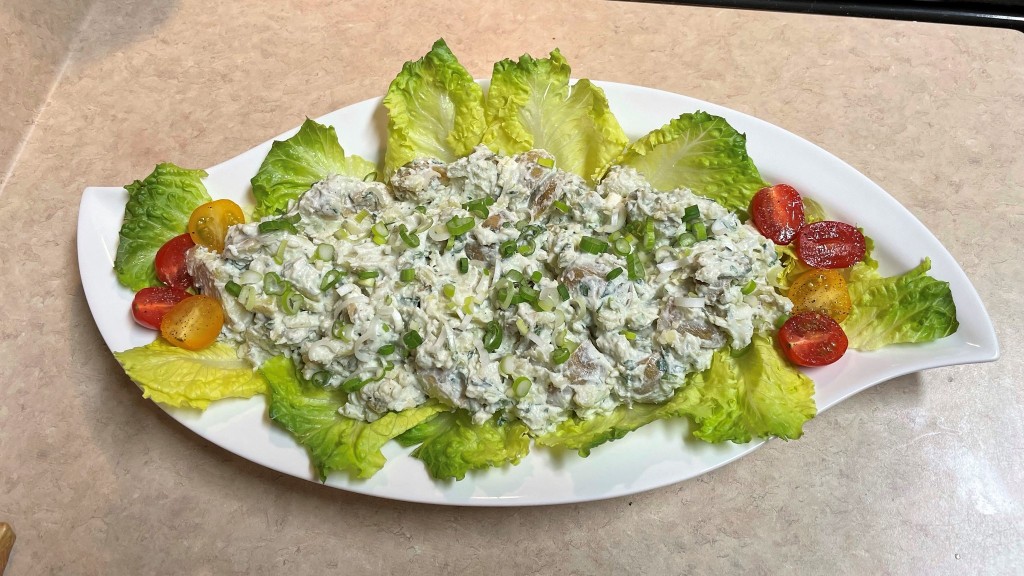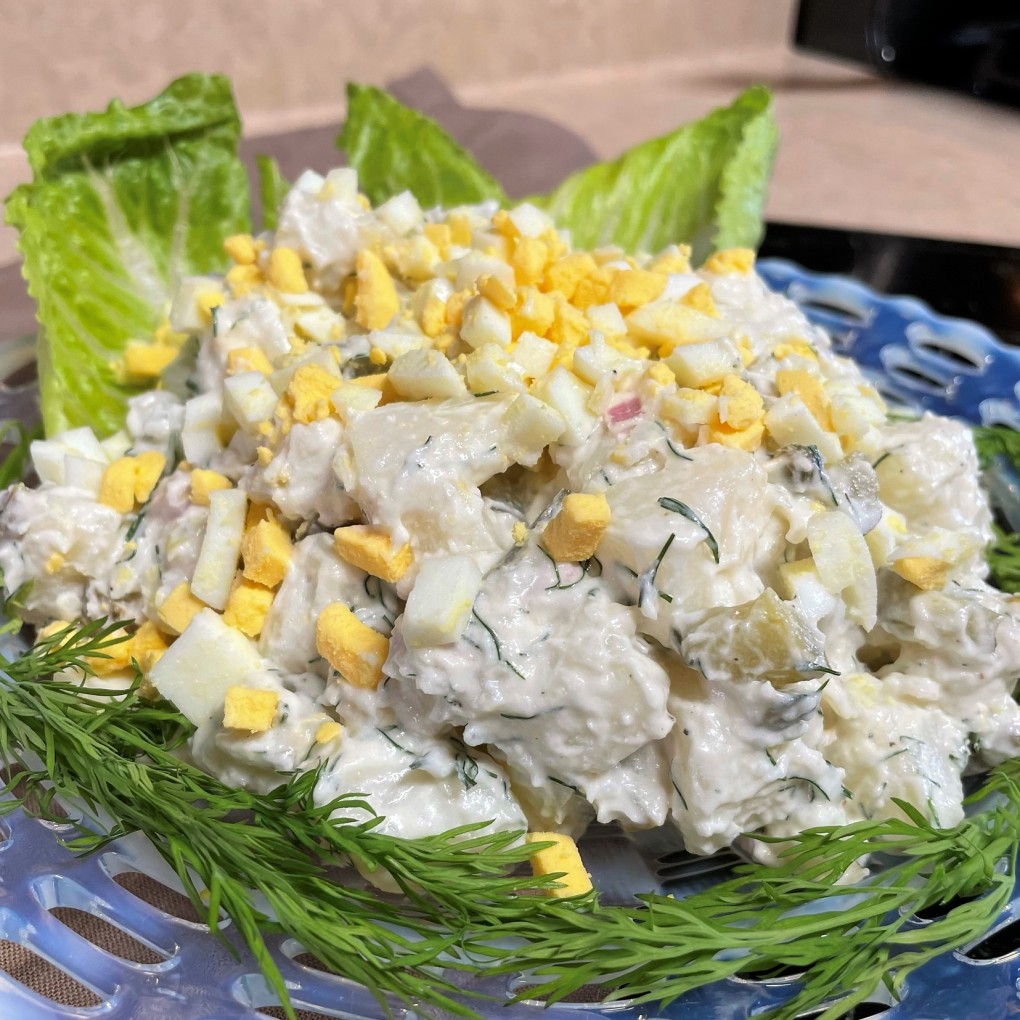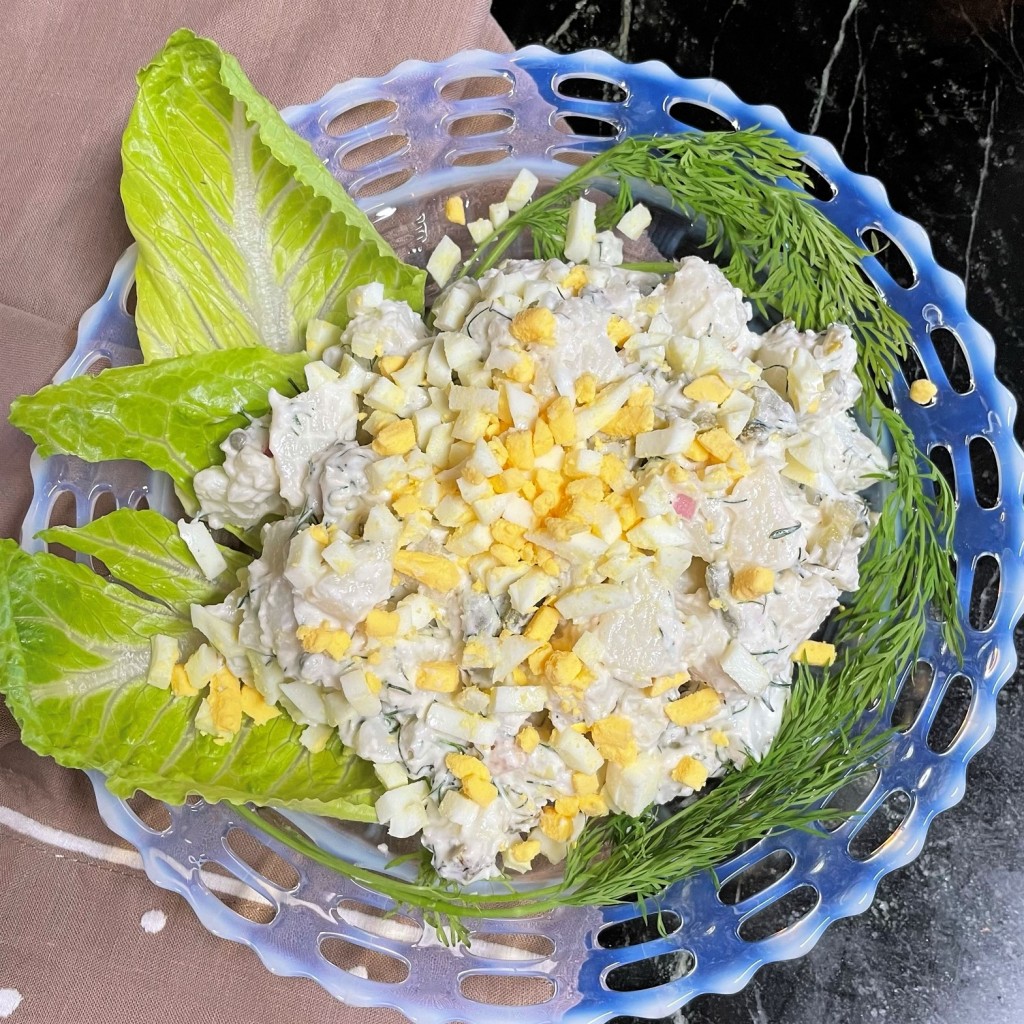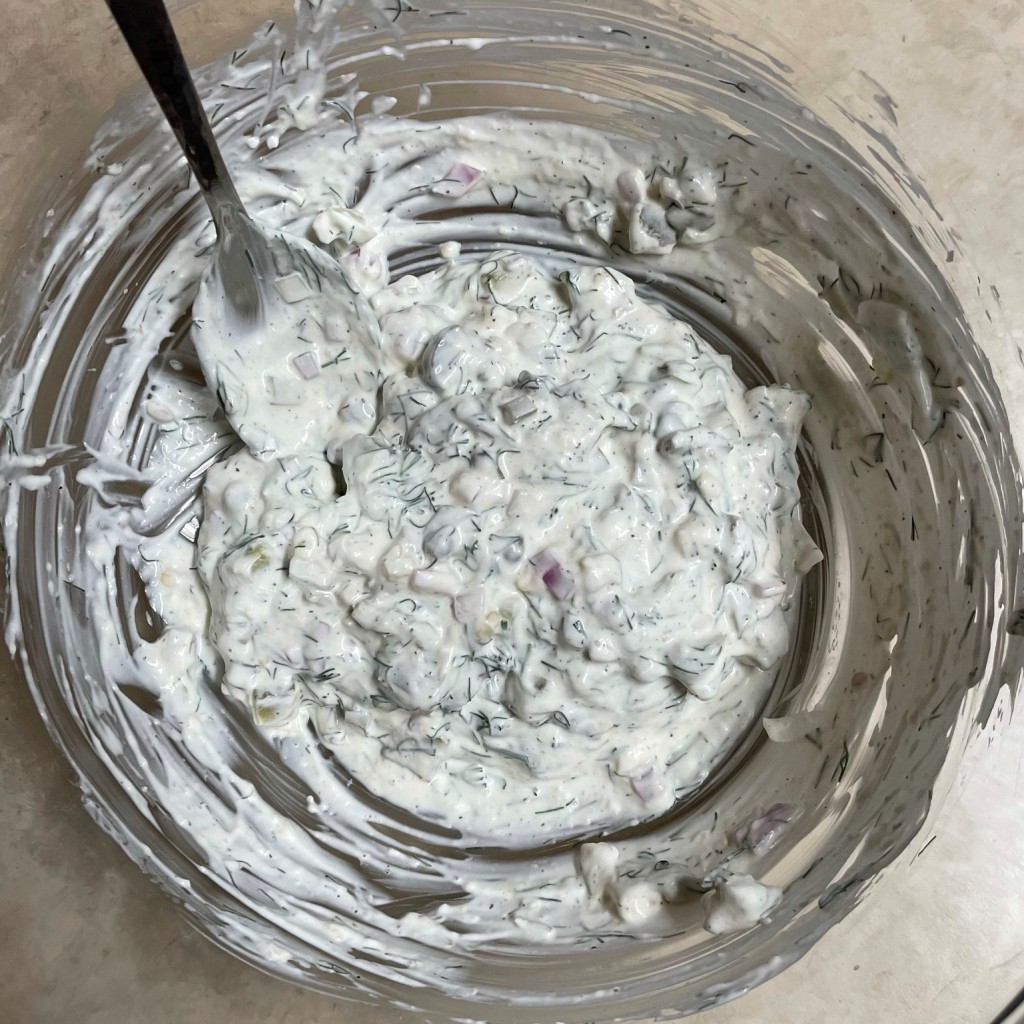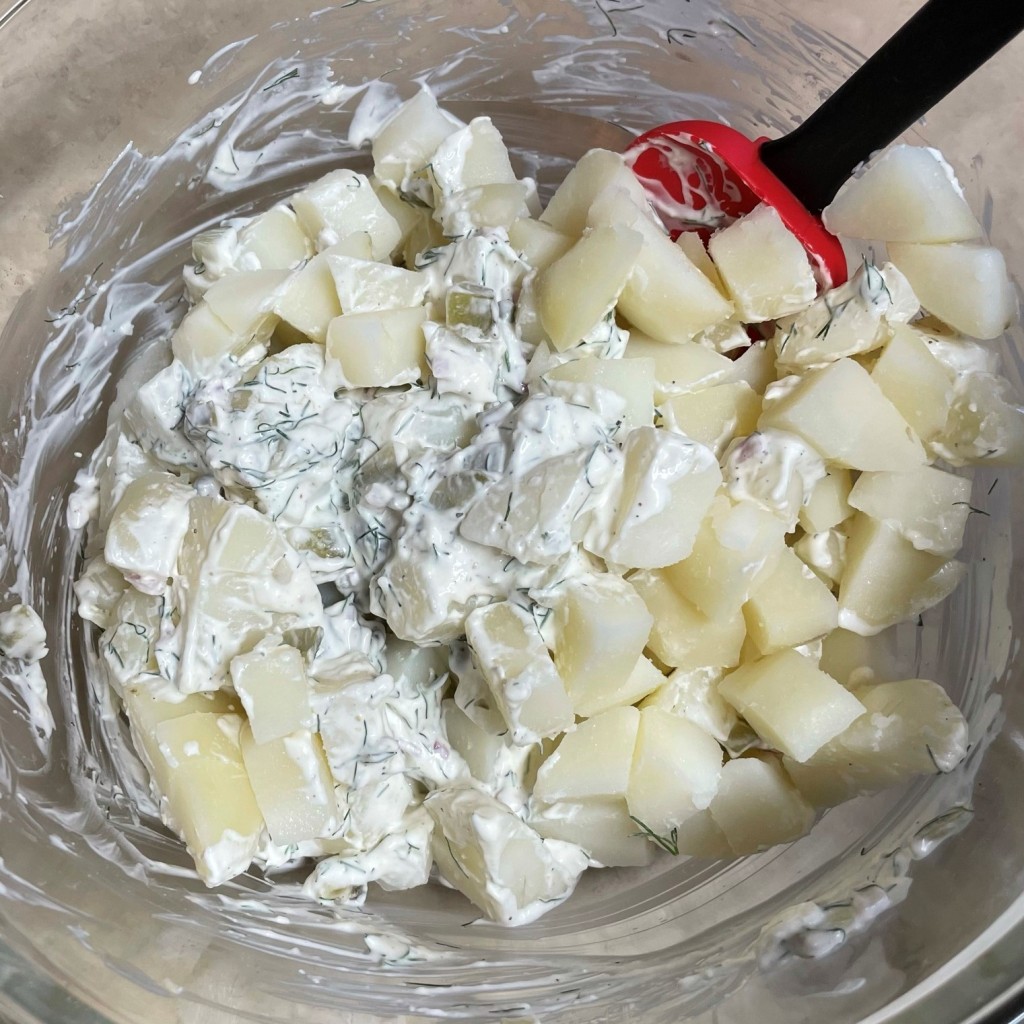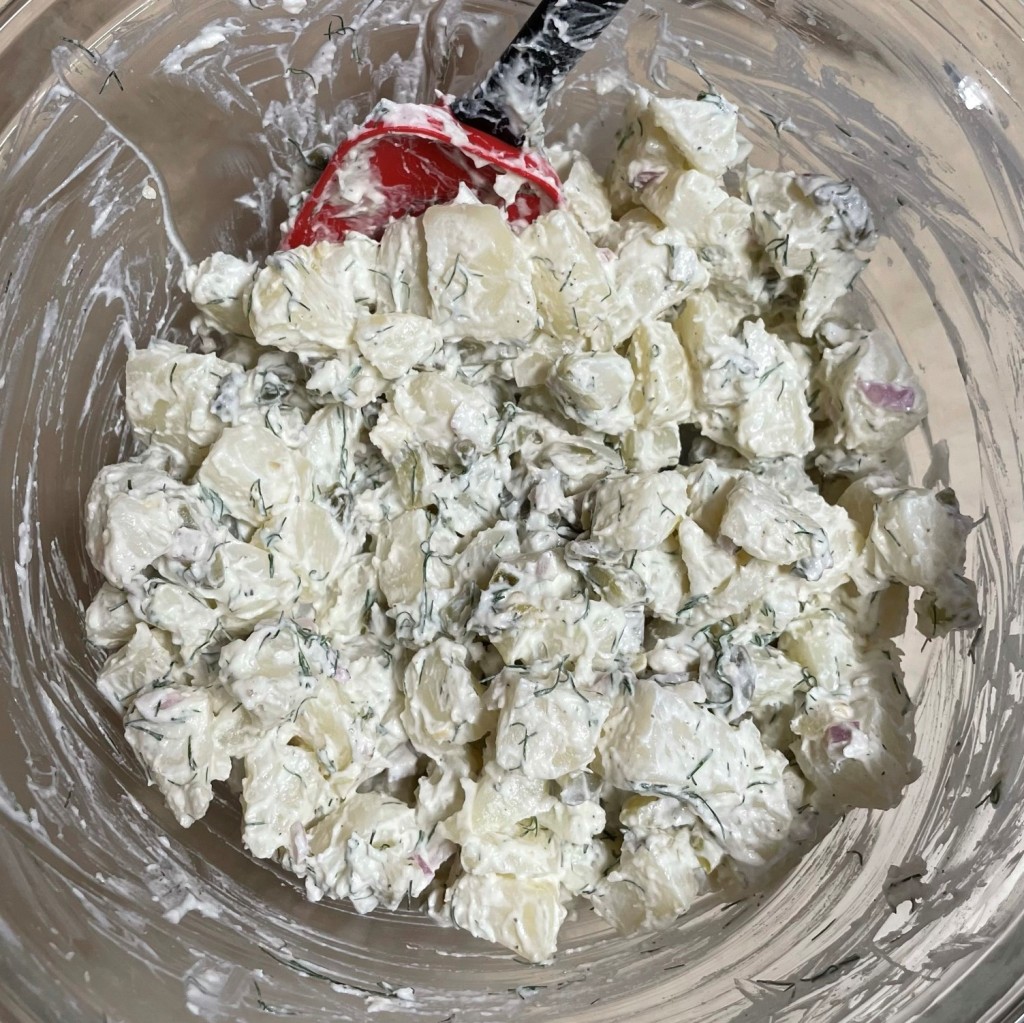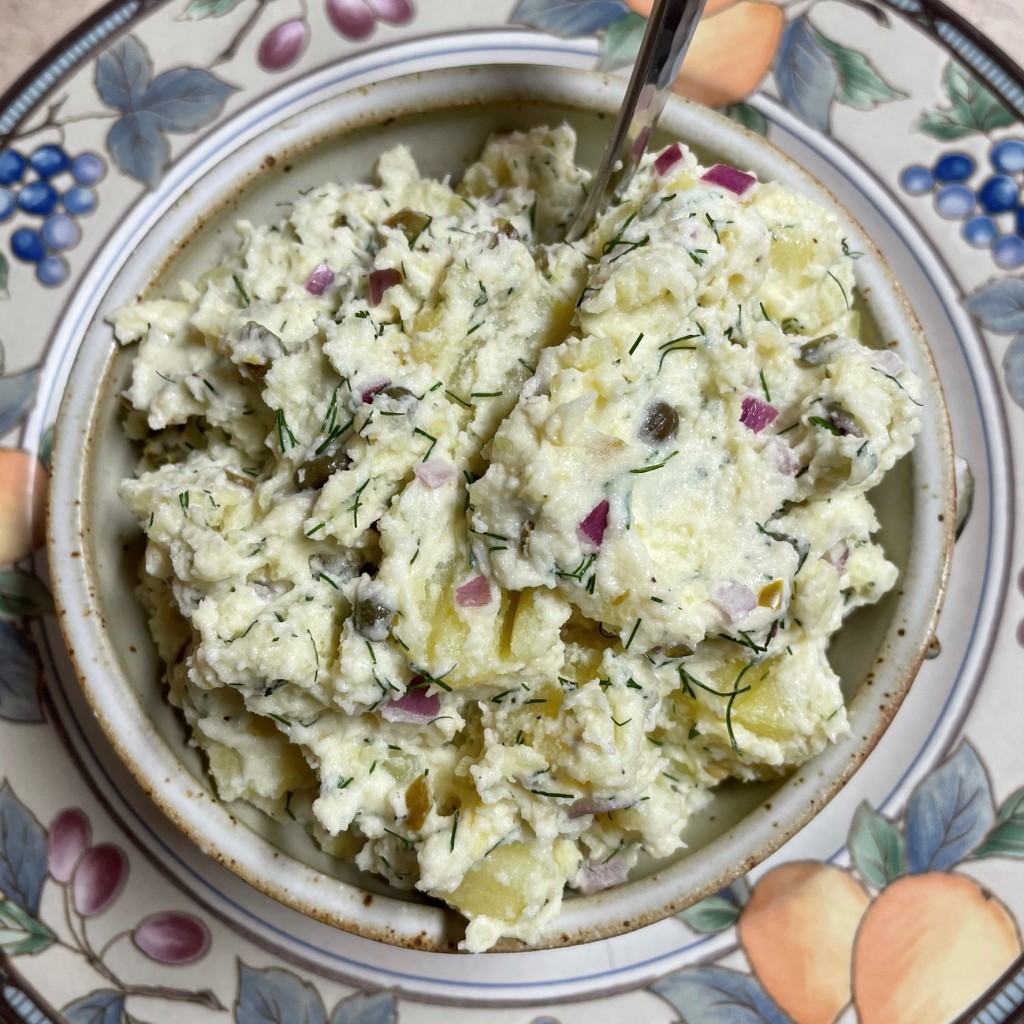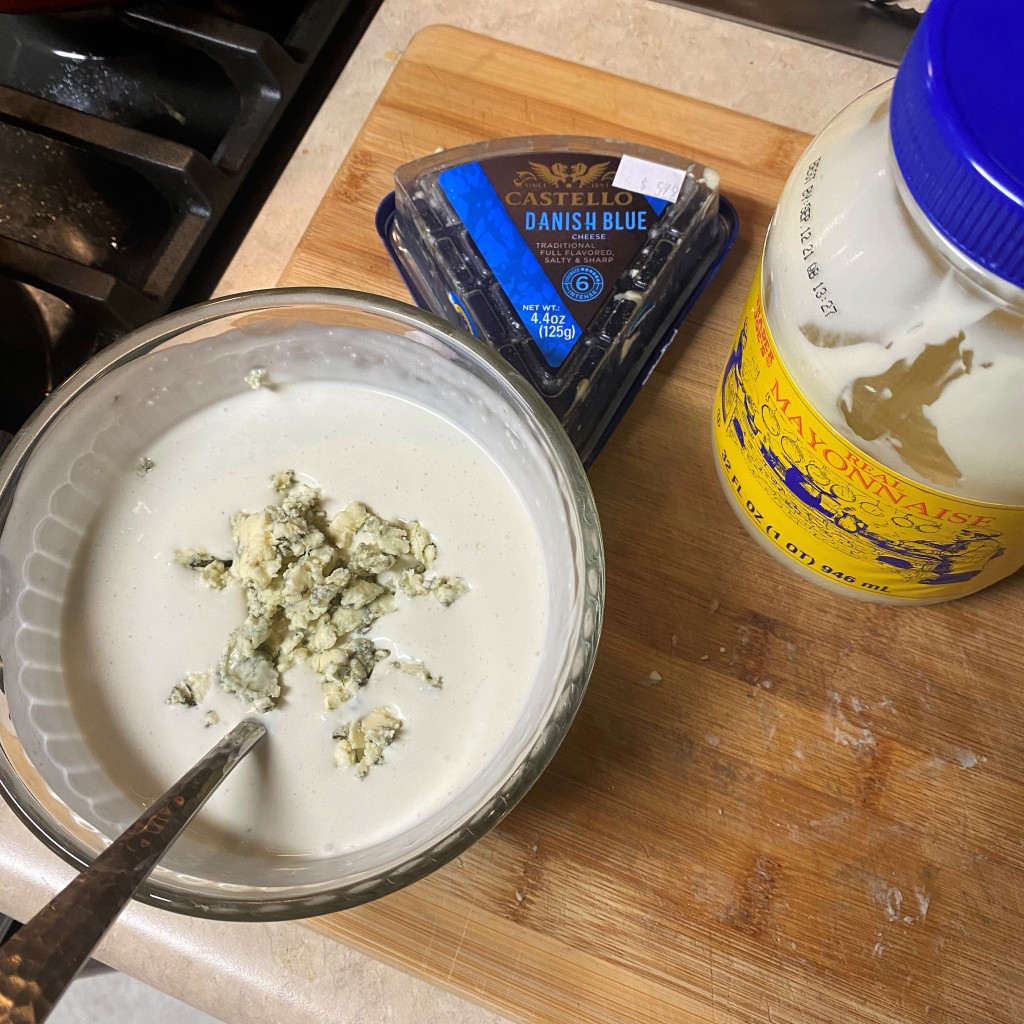My intention for this post and recipe was to introduce you to my new food processor; I’m excited about my choice of machines and still learning how to use some of the features that are new to me. But I’ll save that for another day, because what this post is really about is a new trick I’ve learned in the kitchen—one that has very little to do with my food processor and everything to do with trying something new with an old tried-and-true: cole slaw.
There are so many ways one can make cole slaw, and it’s usually the dressing that makes each version special, whether it’s sweet and creamy like a KFC-style slaw or refined and elegant with a lime and poppy seed vinaigrette. I shared those when Comfort du Jour was brand new, and they are delicious, just like the tangy apple cole slaw from last summer.
This time, I’ve changed the dressing again (and I think you’ll love its delicate Dijon flavor), but I’ve also dabbled in a new technique that I read about from one of my newest kitchen idols, J. Kenji López-Alt. I love the way this guy approaches food, always with a “what if” attitude, and after his exhaustive experiments in what he calls “The Food Lab,” Kenji is great about sharing his culinary discoveries with home cooks like you and me. You will find a ton of his recipes on the Serious Eats website, but also on his own YouTube channel, which a basically a rabbit hole of exciting kitchen experiments.
His method for making cole slaw produces a perfectly textured salad that is soft, yet pleasantly crunchy. It has all the right flavor but doesn’t get soggy in the bowl. That has always been the bummer, hasn’t it—to load up your plate with all your summer favorites, only to have everything turn milky and soggy because the cole slaw dressing runs everywhere? Well, friends, Kenji has fixed that! And this game changer is so darn simple. Rather than just adding dressing to freshly shredded cabbage and carrots, there’s an intermediate step of extracting most of the moisture from the vegetables first. Under Kenji’s guidance, I tossed the cabbage and carrots with a very generous scoop each of kosher salt and cane sugar, then rinsed it under cold water (which seemed counterproductive with the intention of removing excess water, but stay with me), and then I dried it before proceeding with the dressing. The results were outstanding, and the fine strands of cabbage held exactly enough dressing for flavor, but not so much to drown it.

The dressing is a departure from other cole slaw recipes I’ve made, as it has only a slight hint of sugar (a lovely balance to the apple cider vinegar in the recipe). Dijon mustard lends a little sass to the creamy mayo, and I mixed in a dash of celery seed along with drained, finely shredded sweet onion and about two dozen twists of freshly cracked black pepper. Here’s how it goes, beginning with about 8 cups of shredded cabbage and carrots in a very large bowl:
At the point that I noticed all that liquid resting in the bowl after the salt-and-sugar bath, it occurred to me that Kenji’s technique for cole slaw is basically the same one I use for making homemade giardiniera, and the outcome is similar, too—crunchy and firm, despite being soaked in a pickling liquid.
My inspiration for both the technique and dressing on this cole slaw comes directly from Kenji, and if you want to get geeked about the science behind it (as I already have), you may do so by linking to this article:
How To Make the Best Creamy Coleslaw | The Food Lab
Otherwise, just get straight to making it. 🙂
Creamy, Crunchy Dijon Cole Slaw

Ingredients
- 8 cups total, shredded green and red cabbage (fresh is best)
- 3 average sized carrots, peeled and shredded
- 1/4 cup kosher salt (for purging)
- 1/3 cup cane sugar (for purging)
Ingredients
- scant 1/2 cup mayonnaise
- 2 Tbsp. apple cider vinegar
- 1 Tbsp. prepared Dijon mustard
- 1 tsp. cane sugar
- 1/2 tsp. celery seed
- 1 heaping teaspoon freshly ground black pepper
- 1/2 medium yellow or sweet onion, finely shredded and drained
To make this cole slaw, you will need a large colander for draining the cabbage, and a salad spinner or clean, unscented towels for eliminating the excess moisture.
Directions
- Combine the shredded cabbage and carrots in a large bowl, with extra room for tossing. Pour the kosher salt and cane sugar all over the shreds and toss with salad forks or your clean hands to distribute throughout the cabbage mixture. Allow it to rest at least 5 minutes, or up to 15 minutes. The salt-sugar blend will coax the excess moisture from the cabbage.
- Transfer the mixture to a colander placed in the sink. You should notice a significant volume of liquid in the bottom of the bowl. Rinse the mixture really well under cold, running water. Toss it thoroughly as you rinse, and continue for about two minutes to get all the excess salt removed. Taste a piece or two. If they are too salty, rinse another couple of minutes.
- To dry the cabbage, use a salad spinner (in batches) or line a baking sheet with a clean kitchen towel or layers of paper towels. Place the cabbage on the towels, cover with another towel (or more layers of paper towels) and press heartily to soak up the moisture. I used kitchen towels and gently rolled up the cabbage to squeeze out the excess water. Transfer the cabbage to a large bowl for dressing.
- Combine the dressing ingredients, stirring in the drained, shredded onion after mixing. Pour over the cabbage blend and toss to coat.
Have a safe Memorial Day weekend! And if you’re wondering what happened to my tie-dyed towels, never fear:
